Heigh ho! heigh ho! A spelunking we will go!
First thing this morning we were heading inland from Borgarnes to Víðgelmir to go spelunking! Víðgelmir is a lava tube situated in the Hallmundarhraun lava field that was created in around 900 AD. The lava tube is on a private farming property but the owners have made a few sections of it very accessible for visitors. There are two main openings to the lava tube which were formed when the roof of the tube collapsed. Víðgelmir is 1.5kms long and the largest areas inside the cave are as big as 15.8 m high and 16.5 m wide. It is by far the largest lava tube of its kind in Iceland – a country that is literally covered in volcanic cave action.
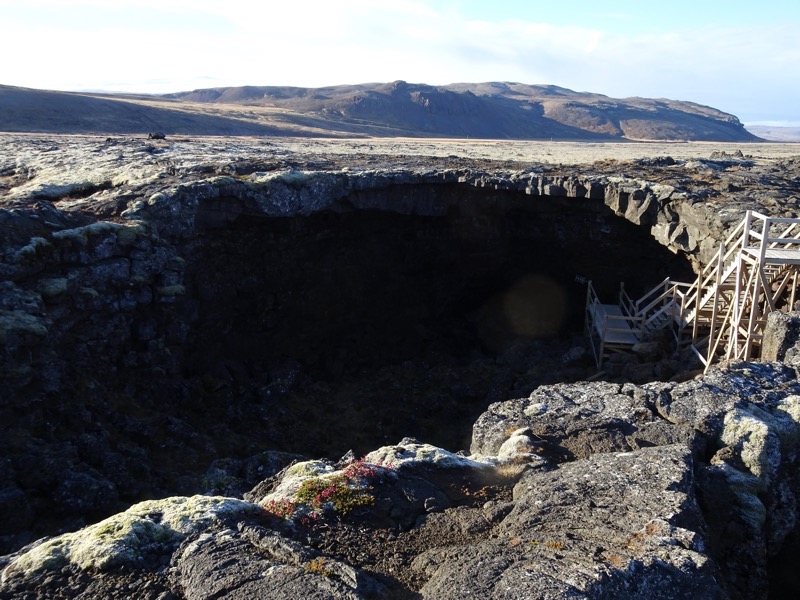
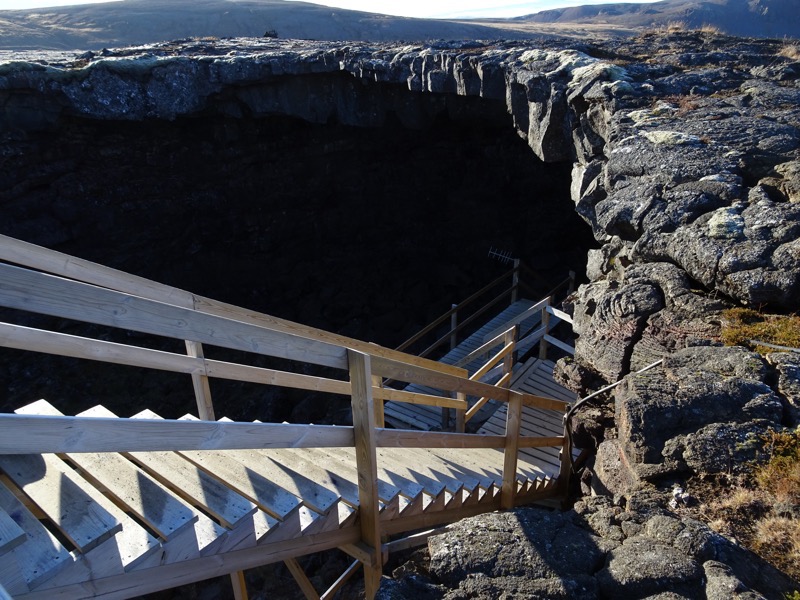
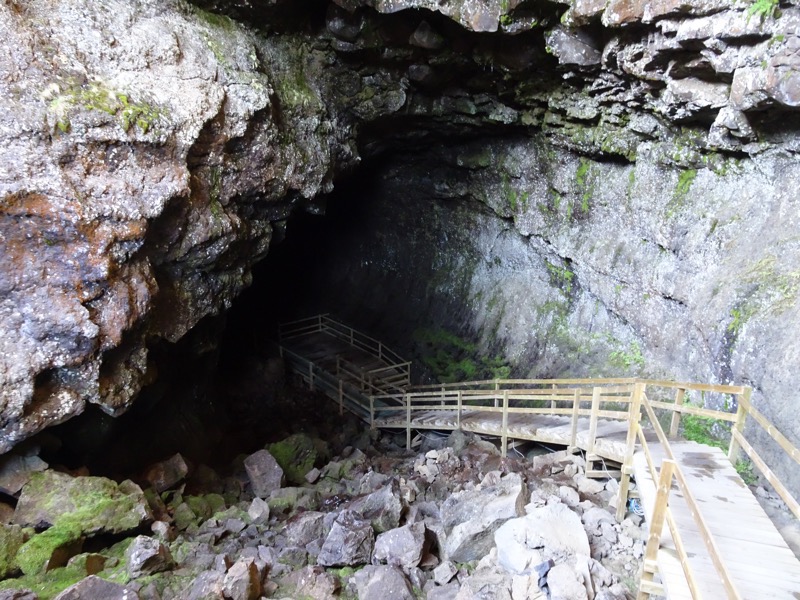
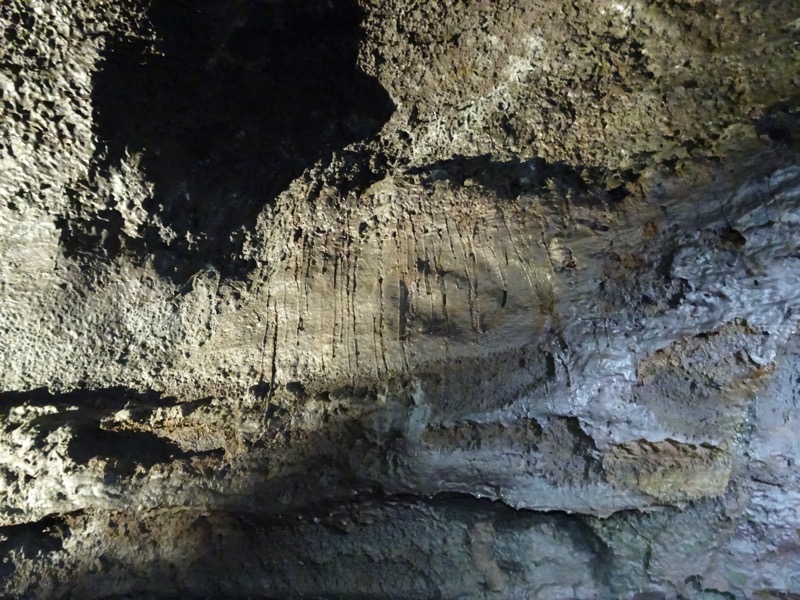 The cave has some wide entrance but narrows down in one area that we traversed… it could be a bit claustrophobic for some, but given I am all of 5′ tall, I was able to just duck my head a little and skooch down the passage. At this tight point, the owners have installed an iron gate in the early 90s to preserve the of the delicate lava formations which tourists and geologist had a habit of souvenir’ing or accidentally destroying.
The cave has some wide entrance but narrows down in one area that we traversed… it could be a bit claustrophobic for some, but given I am all of 5′ tall, I was able to just duck my head a little and skooch down the passage. At this tight point, the owners have installed an iron gate in the early 90s to preserve the of the delicate lava formations which tourists and geologist had a habit of souvenir’ing or accidentally destroying.
So TIL from our very friendly geologist-guide, Johannes, that Icelanders have a running rivalry with Hawaiians. Who’d have thunk, right? Iceland vs Hawaii. Why? you may ask, well as it turns out, Hawaiians think they have authority when it comes to naming lava formations. However, the Icelanders have had their own Icelandic words for most lava formations for over 1000 years. So for every ‘traditional’ (ie: Hawaiian) term that Johannes gave us for the lava formations, he also gave us an Icelandic term. Which made for a bloody confusing time of it. This one was quite distinct though – apparently the Hawaiians cause these piles of drip formed lava, ‘lava roses’, in Iceland, however, they are a bit blunter in their descriptions and they call them, ‘lava shits’ – and fair enough too, they look far more like a cow pat than a flower!
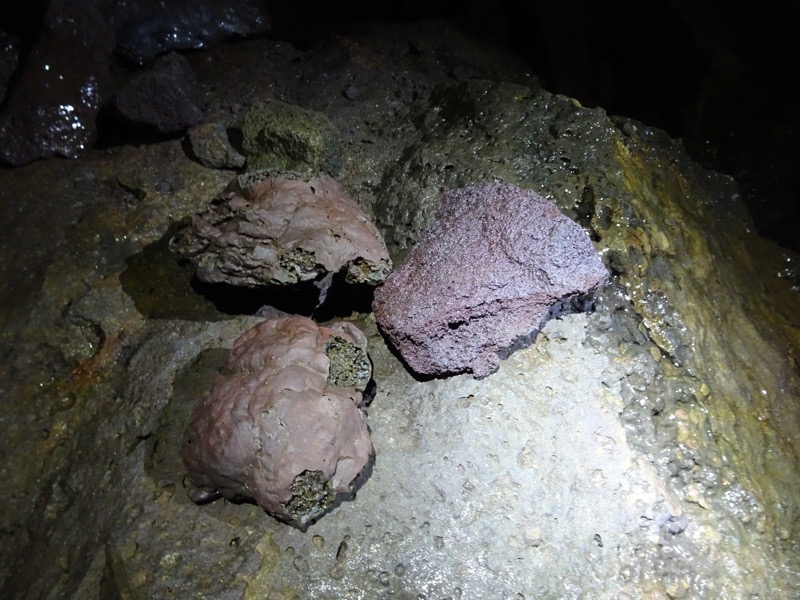 The colours in the rock formations were simply astounding.
The colours in the rock formations were simply astounding. 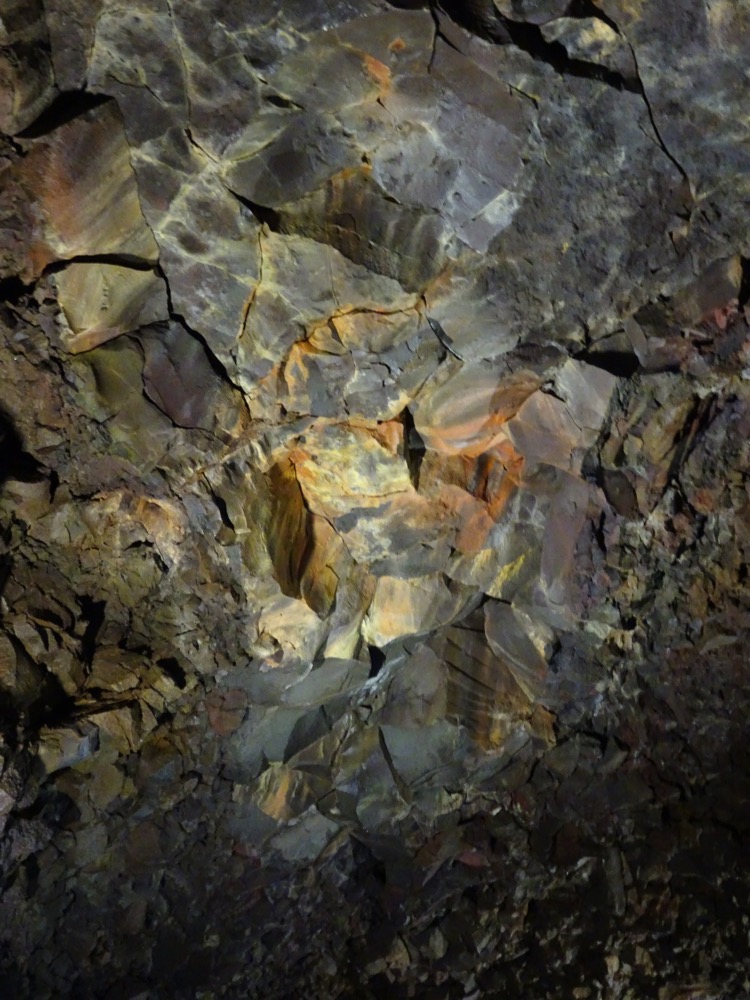
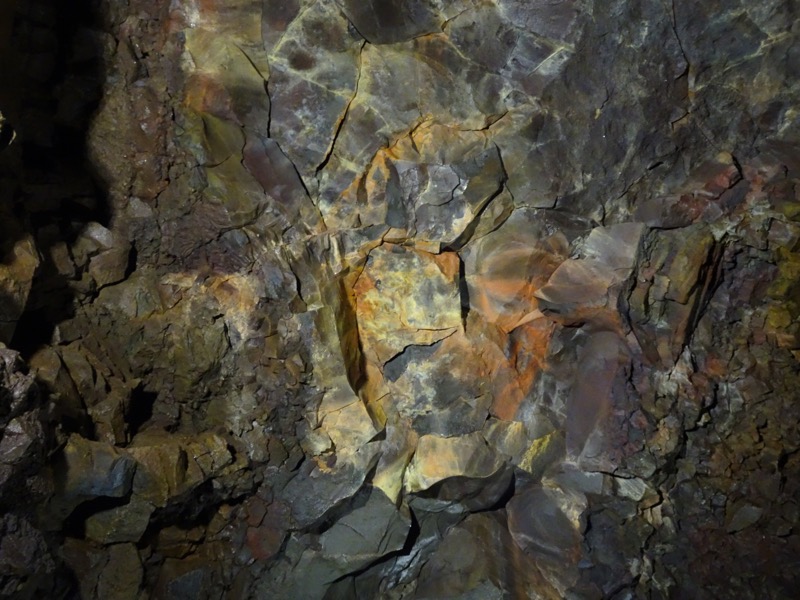 Unlike the sedimentary type caves we are used to seeing back home when water filters down through the rock into the cave, it doesn’t form sparkling stalactites and stalagmites, instead, it forms ice columns. The water drips down in the same spot each winter and given it is usually around 0° in the cave, the water freezes on top of the last drop making icicle stalagmites that can reach as high as 3m. Each year in the summer, the ice formations are diminished only to return each winter. Normally there are no ice formations in the cave this early in the year – it’s only autumn – but this year has been a ‘really shit summer’ and rather wet, so there were ice formations that hadn’t disappeared since last year.
Unlike the sedimentary type caves we are used to seeing back home when water filters down through the rock into the cave, it doesn’t form sparkling stalactites and stalagmites, instead, it forms ice columns. The water drips down in the same spot each winter and given it is usually around 0° in the cave, the water freezes on top of the last drop making icicle stalagmites that can reach as high as 3m. Each year in the summer, the ice formations are diminished only to return each winter. Normally there are no ice formations in the cave this early in the year – it’s only autumn – but this year has been a ‘really shit summer’ and rather wet, so there were ice formations that hadn’t disappeared since last year.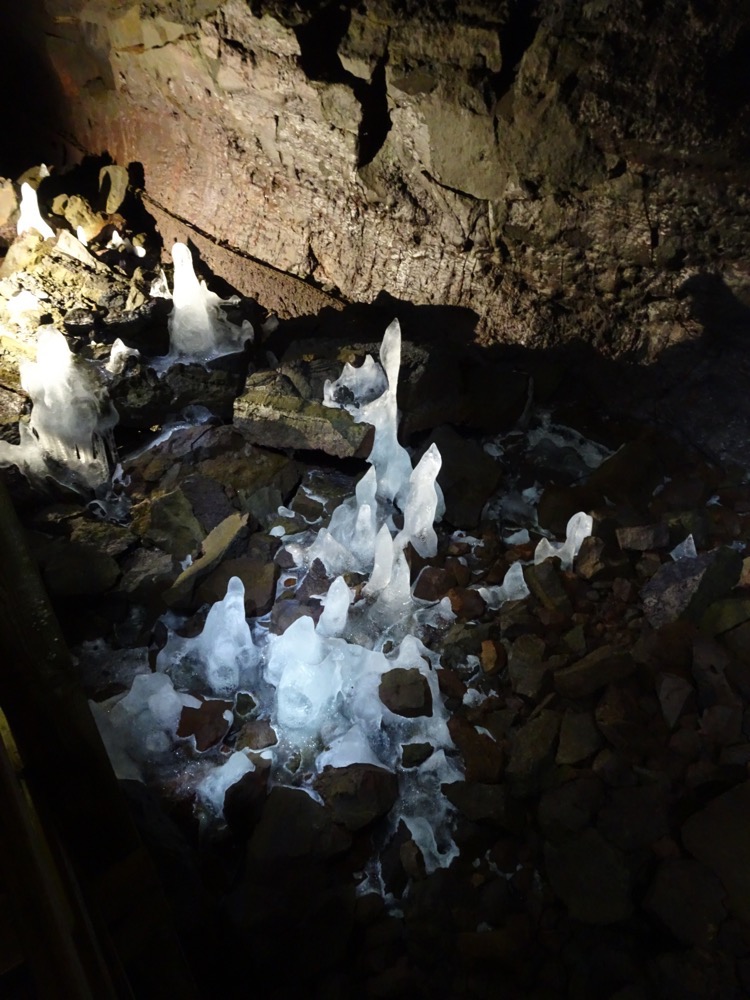 The cave has recently had quite a bit of construction work done with walkways to protect the delicate lava formations and to make it more accessible to visitors.
The cave has recently had quite a bit of construction work done with walkways to protect the delicate lava formations and to make it more accessible to visitors.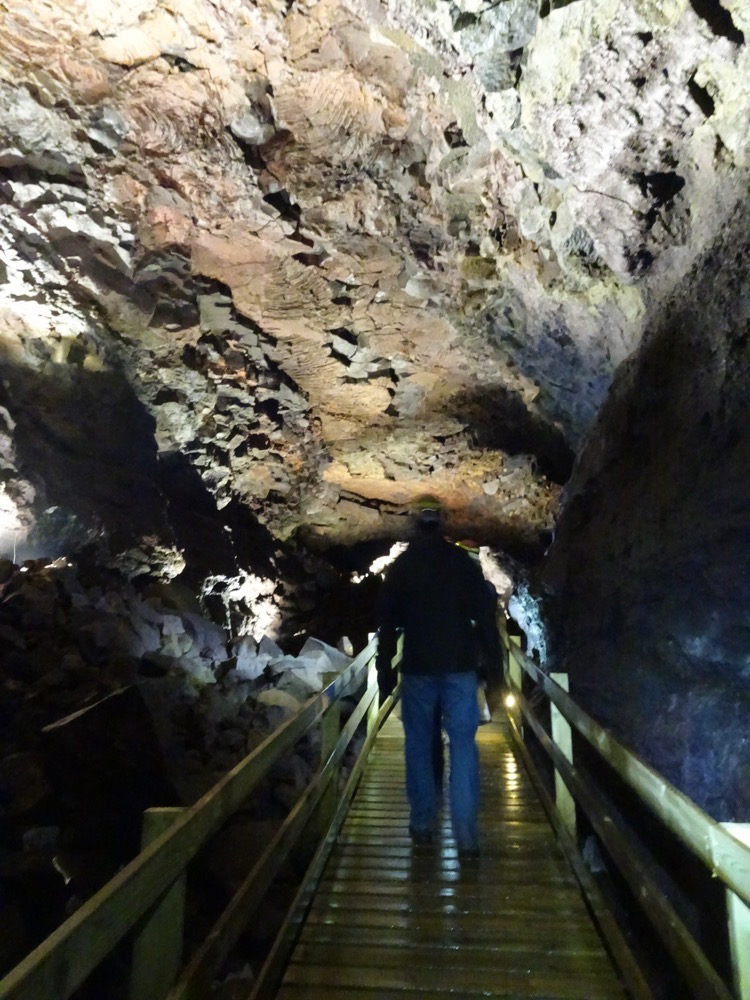
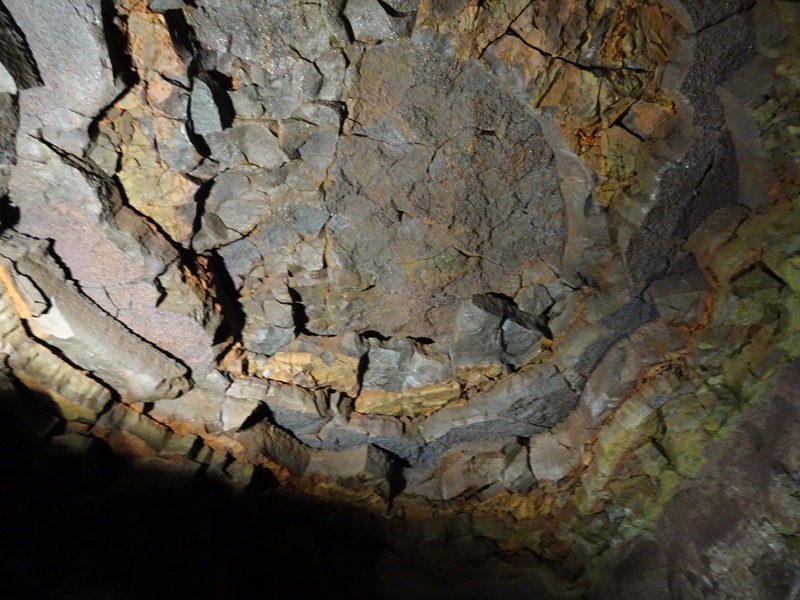 The lava tube caves are formed when a low-viscosity lava flow develops a continuous and hard crust as it cools, which then thickens and forms a roof above the molten lava stream. When the eruption subsides, the still-molten lava moving beneath the crust will continue to drain downhill, eventually emptying out and leaving an open lava tube cave. The cave will usually have larger tubes with smaller tubes protruding off from the main caves – Johannes used an analogy of a human body (body metaphors, love it!). The volcano is the heart pumping out the lava/blood, into the major arteries, which also forces the lava into smaller capillaries.
The lava tube caves are formed when a low-viscosity lava flow develops a continuous and hard crust as it cools, which then thickens and forms a roof above the molten lava stream. When the eruption subsides, the still-molten lava moving beneath the crust will continue to drain downhill, eventually emptying out and leaving an open lava tube cave. The cave will usually have larger tubes with smaller tubes protruding off from the main caves – Johannes used an analogy of a human body (body metaphors, love it!). The volcano is the heart pumping out the lava/blood, into the major arteries, which also forces the lava into smaller capillaries.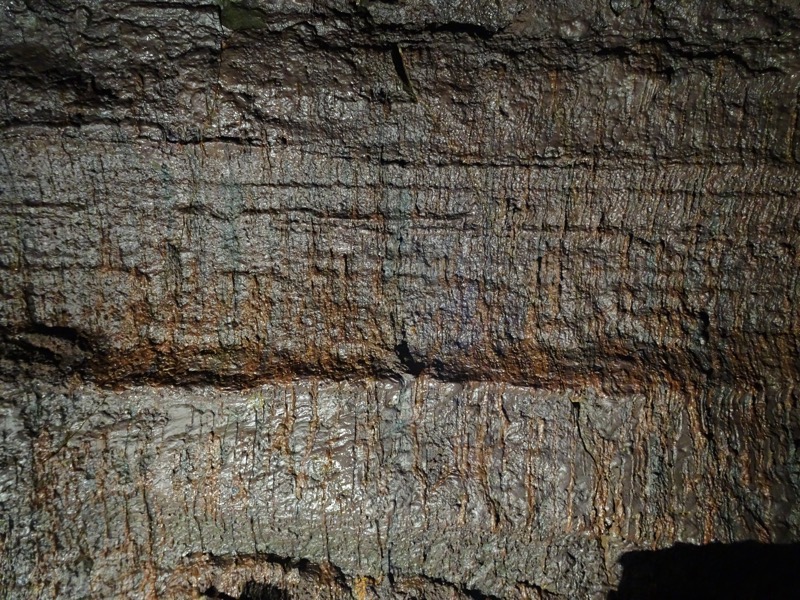 As the lava is dragged along inside the tube with its cooling roof and walls, the level/height of the lava flow is evidenced in layers on the walls, leaving a texture and coloured rock that looks like chocolate cake.
As the lava is dragged along inside the tube with its cooling roof and walls, the level/height of the lava flow is evidenced in layers on the walls, leaving a texture and coloured rock that looks like chocolate cake.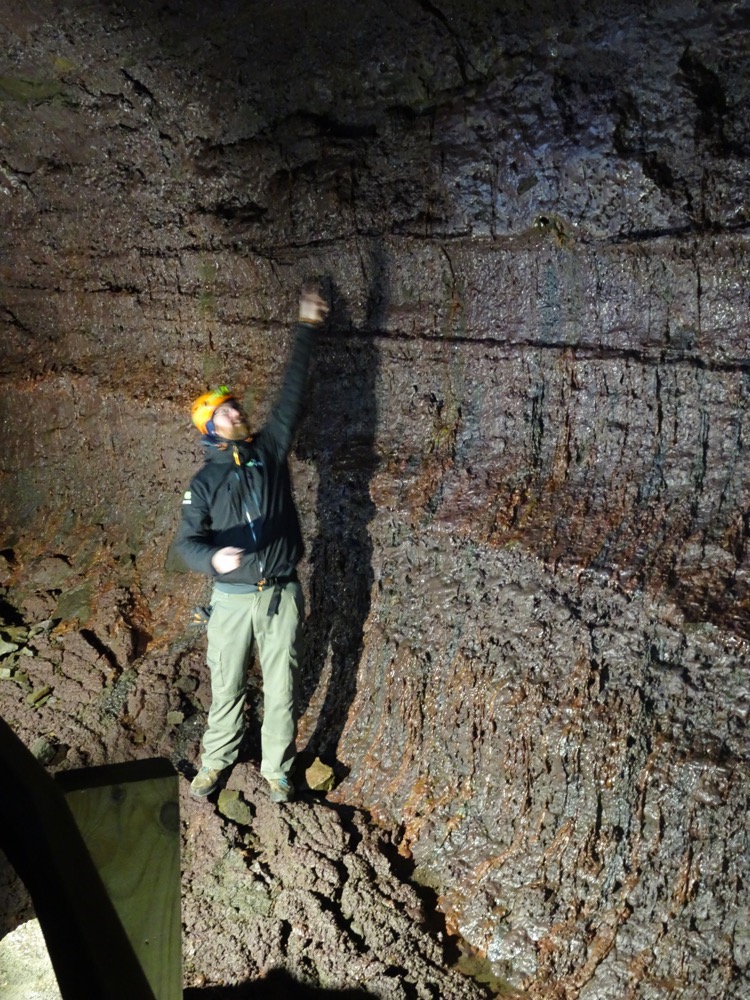 There is approximately 80-90 steps to traverse to get into the lava cave – and the same again on the way back out.
There is approximately 80-90 steps to traverse to get into the lava cave – and the same again on the way back out.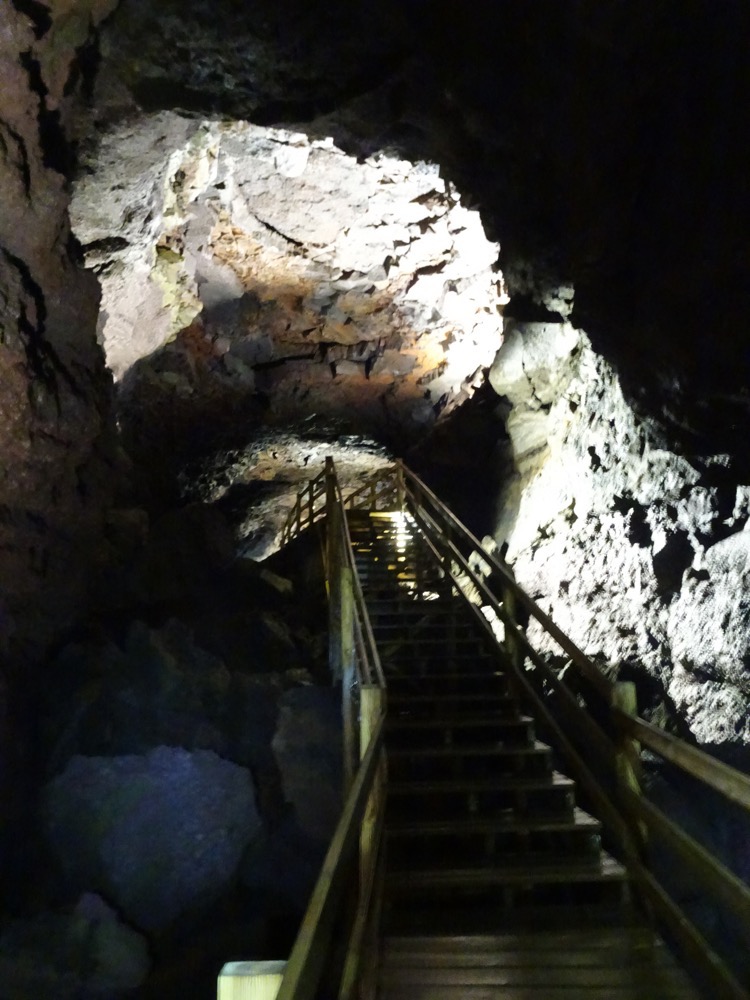 At the end of this section of lava tube is a collapsed roof which marks the end of the ‘amateur’ spelunking tour. For people with a bit more experience, you can go much deeper into the cavers, but apparently, that takes things like, fitness, agility and strength.
At the end of this section of lava tube is a collapsed roof which marks the end of the ‘amateur’ spelunking tour. For people with a bit more experience, you can go much deeper into the cavers, but apparently, that takes things like, fitness, agility and strength.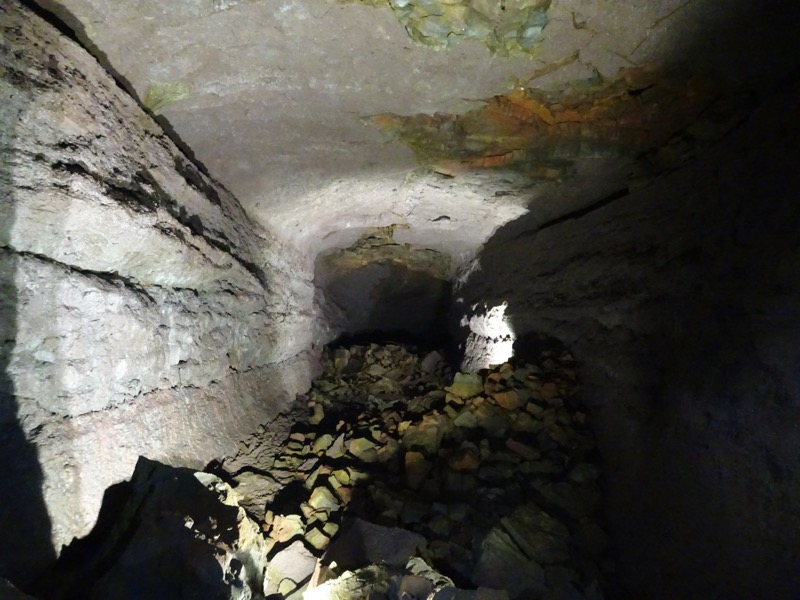 There is a large platform at this point in the cave and Johannes had us all turn off our headlamps before turning off the cavern lights. It is totally pitch black. You can open and close your eyes and not tell any difference, you can wave a hand in front of your face and not see a thing. Johannes said to us, ‘Now you don’t have to come to Iceland in the winter, this is what it’s like.’ Yep, he was a bit of a funny bugger.
There is a large platform at this point in the cave and Johannes had us all turn off our headlamps before turning off the cavern lights. It is totally pitch black. You can open and close your eyes and not tell any difference, you can wave a hand in front of your face and not see a thing. Johannes said to us, ‘Now you don’t have to come to Iceland in the winter, this is what it’s like.’ Yep, he was a bit of a funny bugger.
On the way back out all the features we had passed looked completely different.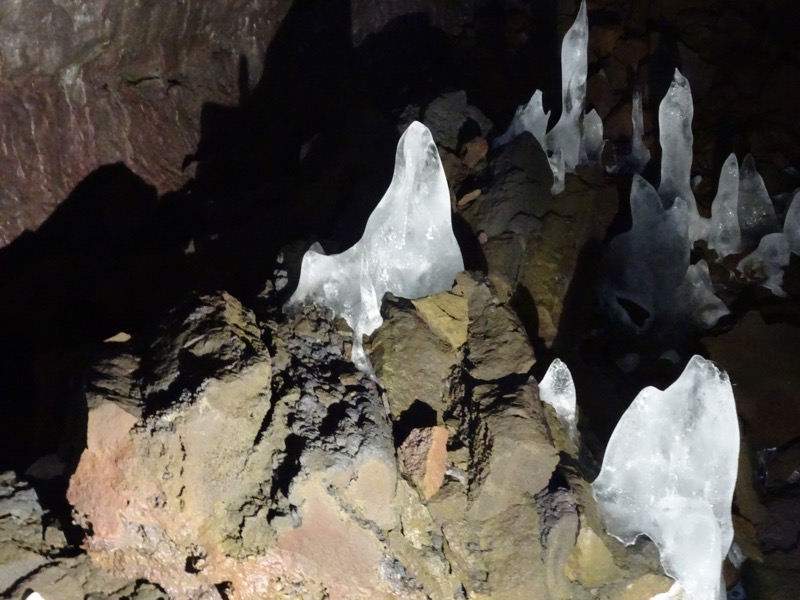
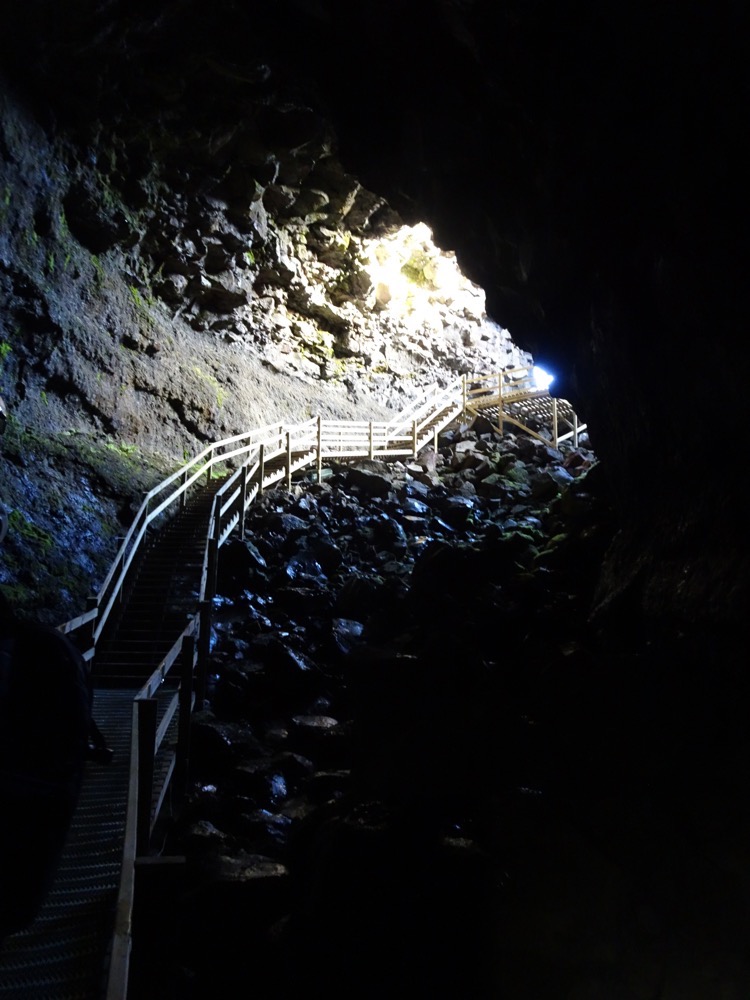 The cave opening forms a bit of a love heart if you stop at the right place on the way out… awww.
The cave opening forms a bit of a love heart if you stop at the right place on the way out… awww. 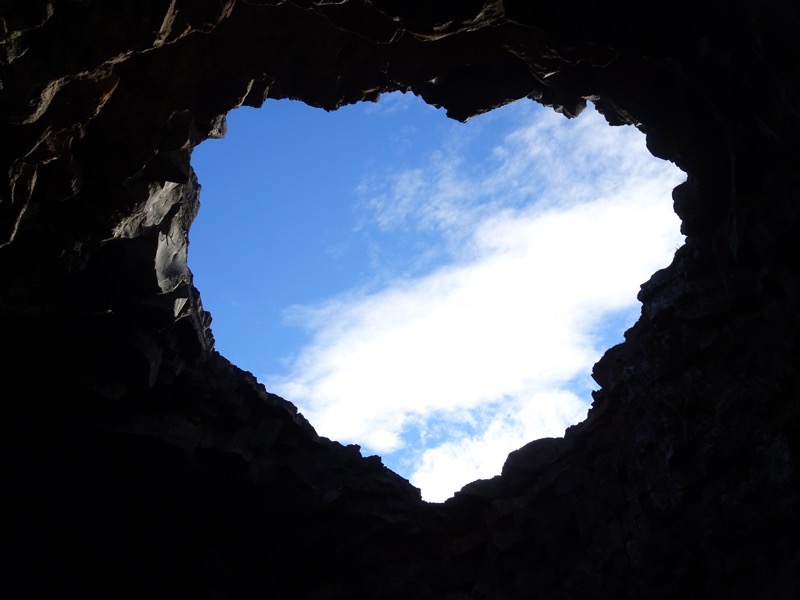 Back above ground the light is way too bright, even though normally the light quality this far north has a wonderful soft feel about it (compared to the harsh Australian light, I guess everything does though!).
Back above ground the light is way too bright, even though normally the light quality this far north has a wonderful soft feel about it (compared to the harsh Australian light, I guess everything does though!).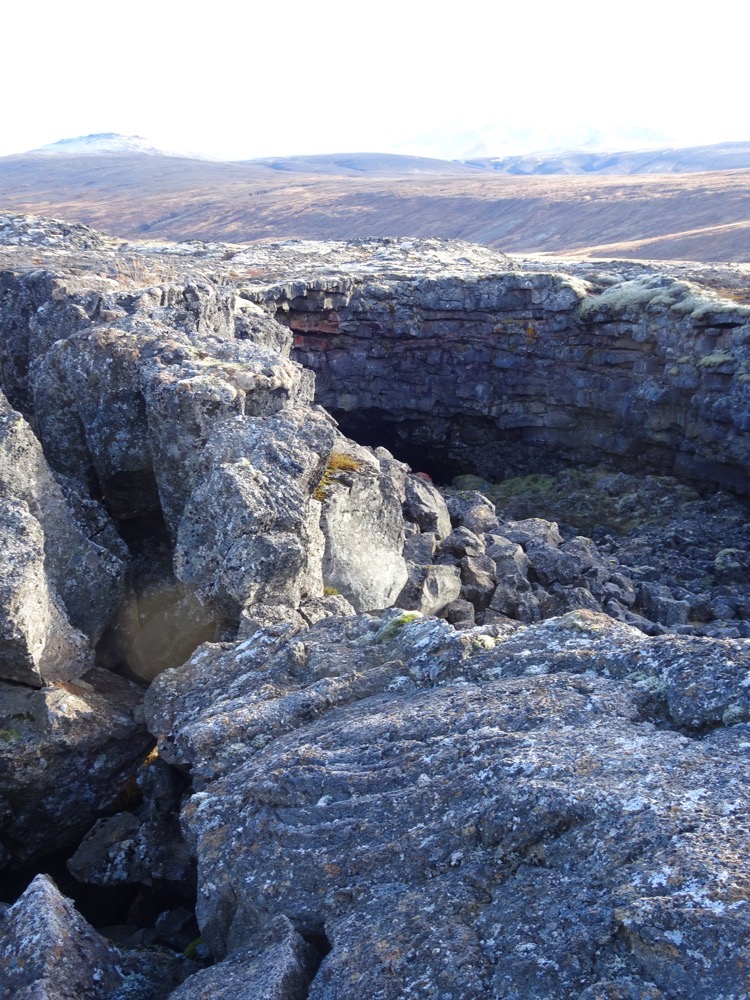
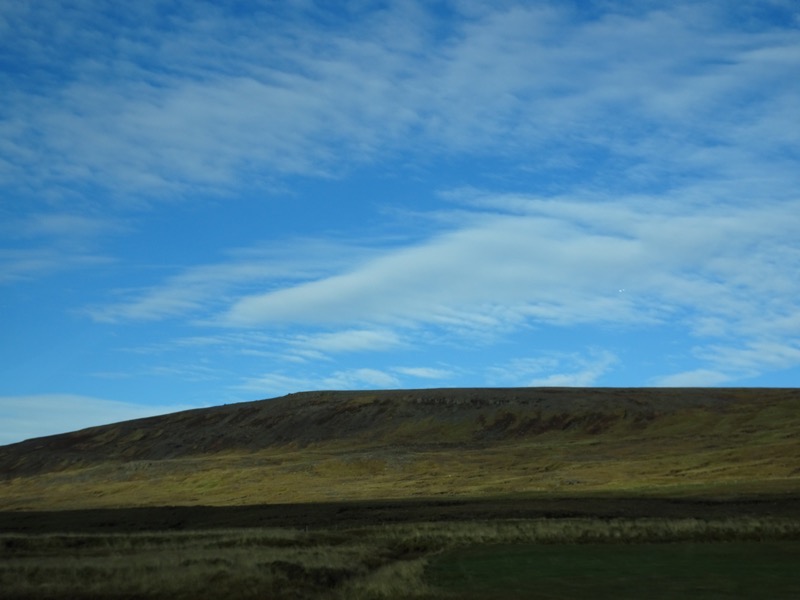
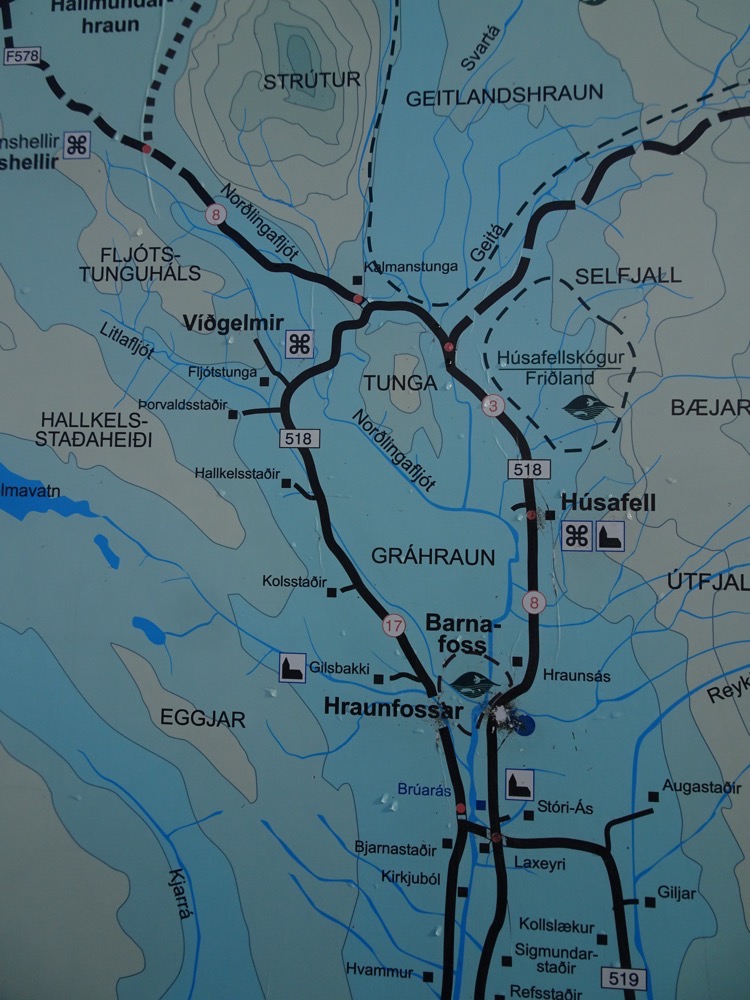
After leaving the caves we went for a short drive to Hraunfossar which is a cascading series of waterfalls formed from the runoff from the Langjökull glacier. The name for these falls is made up of the Icelandic words hraun, (lava) and fossar, (which no doubt everyone has now picked up is waterfall).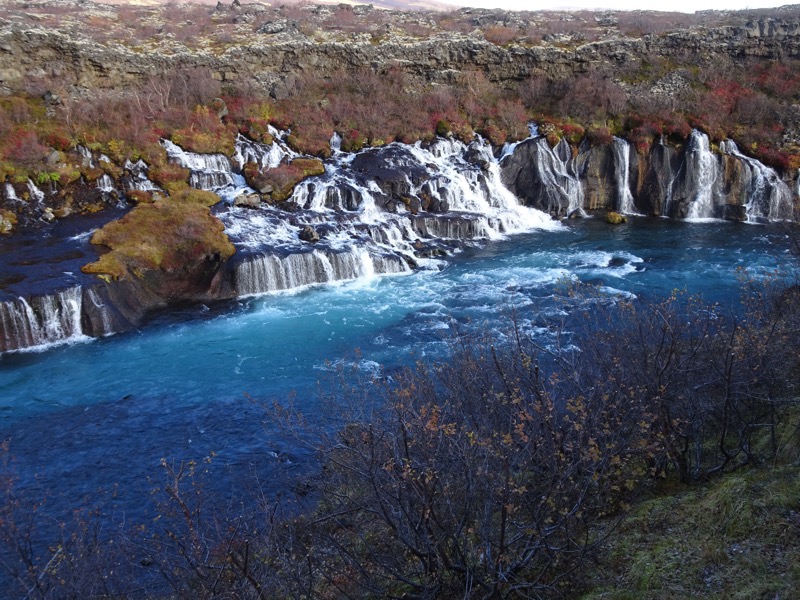
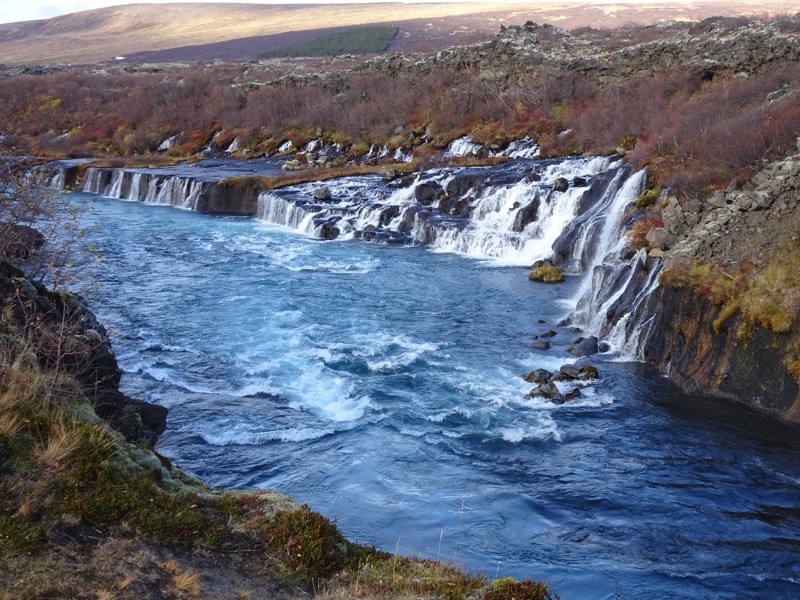
Literally, two minutes walk upstream from Hraunfossar, is another waterfall called Barnafoss. Its name means ‘child’s waterfall’, stems from a tragic accident which is said to have taken place here. There are several Icelandic folk tales associated with Barnafoss, the most famous being about two boys who lived at a nearby farm, Hraunsás. One day, the boys’ parents went with their ploughmen to a church. The boys were supposed to stay at home, but they grew bored they decided to follow their parents. They took the shortcut across the natural stone-bridge that used to be above the waterfall, but fell into the water and drowned. Their mother was obviously distraught and was said to have destroyed the natural arch so this could never happen again. Depending on which story you read, you either don’t hear how she achieved this, or they say she put a spell on the bridge and it was shortly destroyed in an earthquake.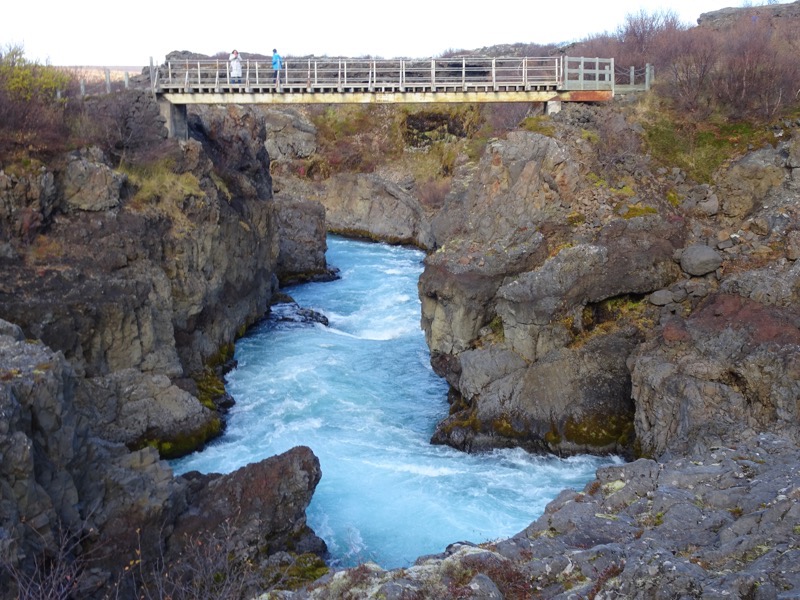
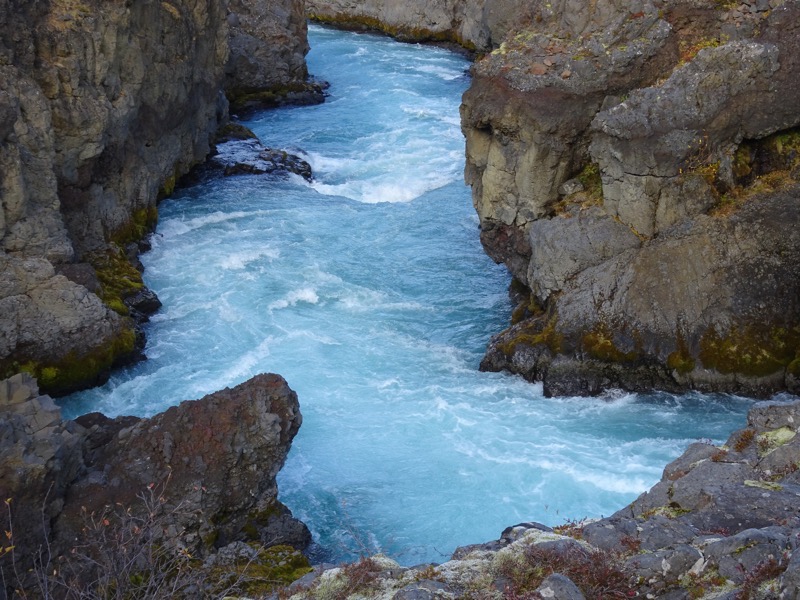 The natural arch went across the rocks in the top of this image – you can see how dangersous this woud be the water volume is incredible.
The natural arch went across the rocks in the top of this image – you can see how dangersous this woud be the water volume is incredible.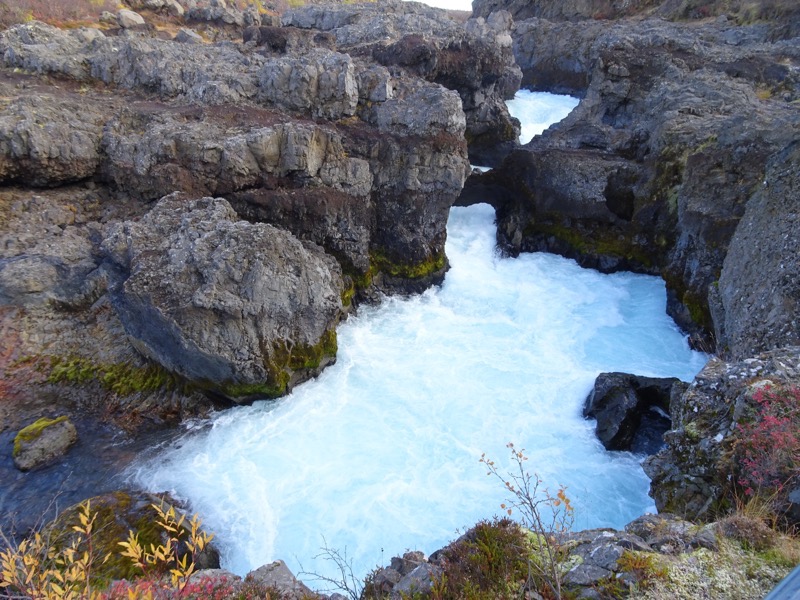
After this, we made a very quick pit stop at the Háafell Icelandic Goat Farm – a very quick stop because we didn’t realise they were closed today for a funeral. Go us, way to intrude on people! We had seen some flags flying at half mast as we drove around today, and I had looked up to see if someone of importance had passed away, but Icelandic tradition is to fly flags at half-mast whenever someone from a local community has died. However, even surprised as the owner was to see us, she didn’t mind us having a look around as they were getting ready to go to church.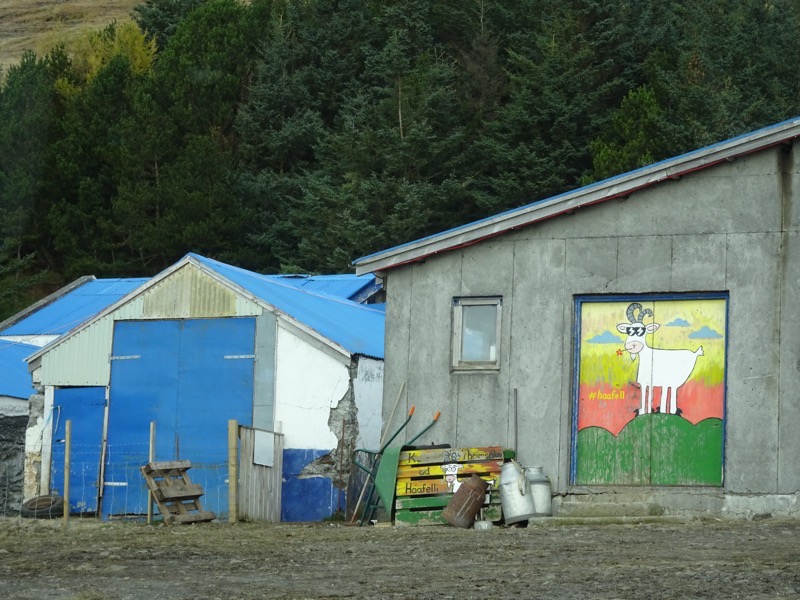
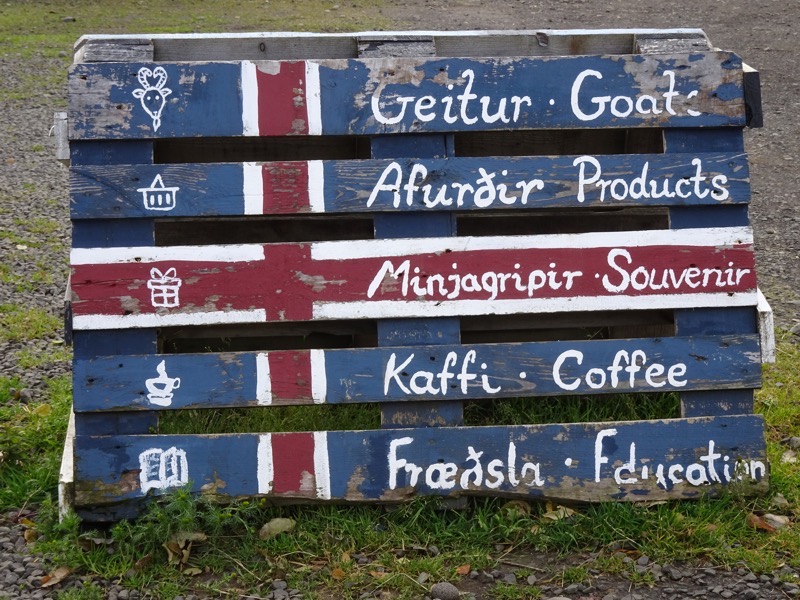 Icelandic goats are also known as the ‘settlement goat’. They are an ancient breed of Norweigan domestic goat that were imported to Iceland over 1100 years ago. This breed was nearly extinct by the late 19th century, but recovered around World War II, only to then see numbers drop off again. A census in 2003 saw only 348 goats in 48 flocks throughout the entire country. A concerted effort to increase their numbers has seen that number improve to 849 in 2012. Because the breed has been isolated for centuries, the Icelandic populations are highly inbred.
Icelandic goats are also known as the ‘settlement goat’. They are an ancient breed of Norweigan domestic goat that were imported to Iceland over 1100 years ago. This breed was nearly extinct by the late 19th century, but recovered around World War II, only to then see numbers drop off again. A census in 2003 saw only 348 goats in 48 flocks throughout the entire country. A concerted effort to increase their numbers has seen that number improve to 849 in 2012. Because the breed has been isolated for centuries, the Icelandic populations are highly inbred. 
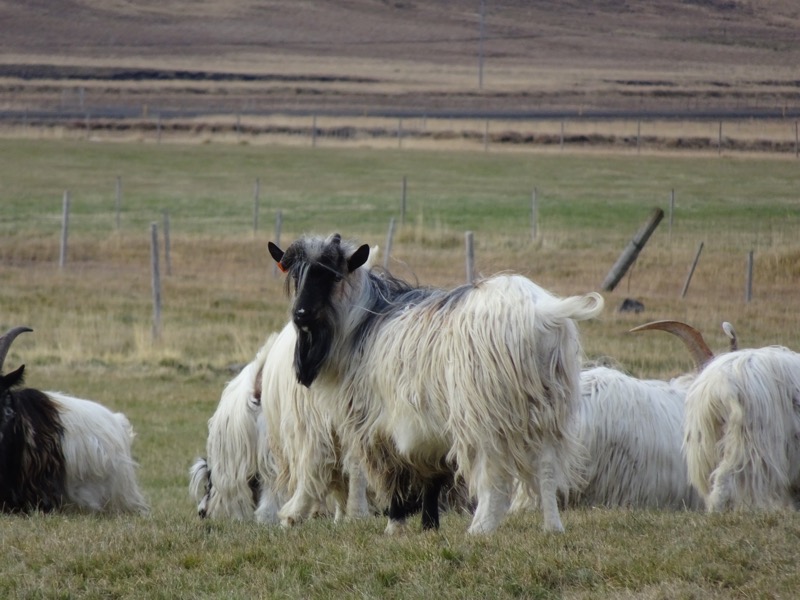
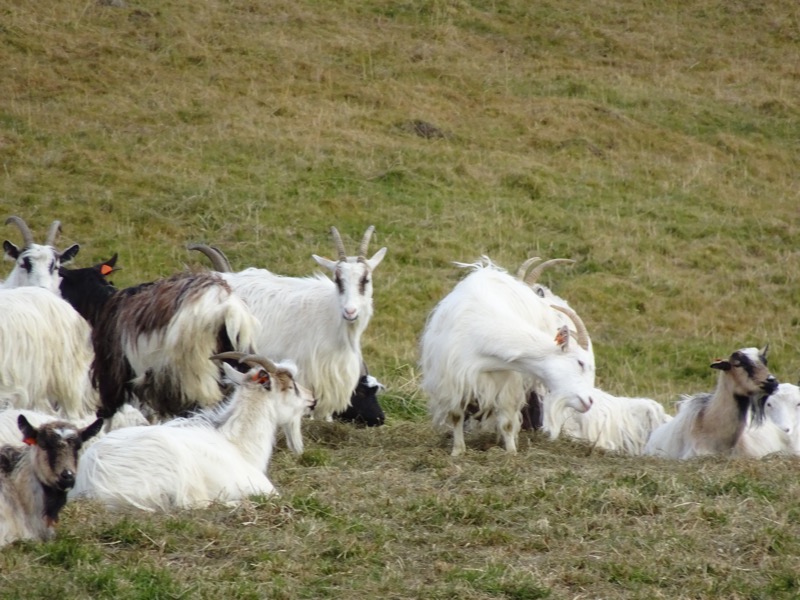 Even though the Icelandic goat has a coat of high-quality cashmere fibre, they tend to be kept more as pets, and are currently of limited economic value – so the Icelandic government subsidizes farmers to ensure the survival of the species.
Even though the Icelandic goat has a coat of high-quality cashmere fibre, they tend to be kept more as pets, and are currently of limited economic value – so the Icelandic government subsidizes farmers to ensure the survival of the species.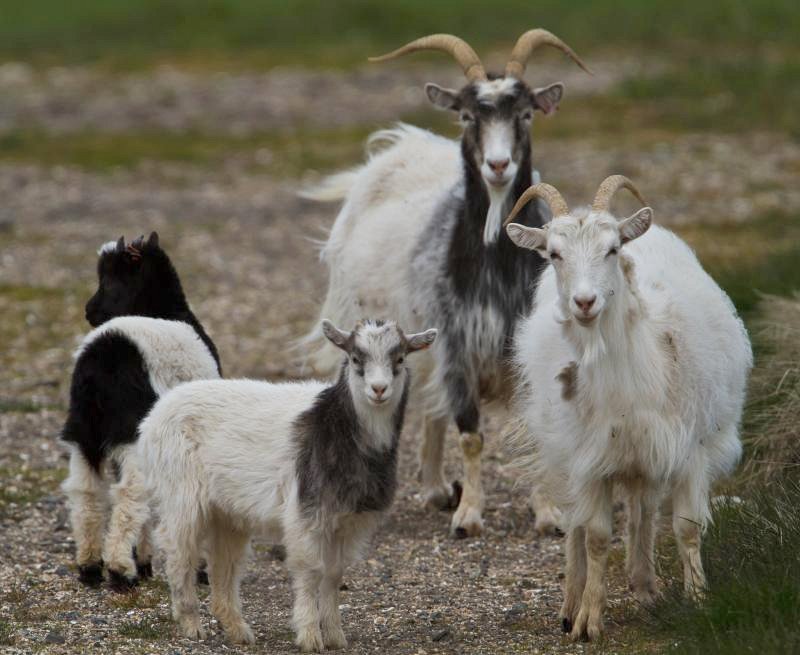 Not long after we left the goat farm, we found ourselves stopping on the side of the road to take more photos of yet more stunning scenery and when we went to drive off, we heard a rather disconcerting scraping noise under the car – it sounded like something metal stuck behind the read drivers side wheel.
Not long after we left the goat farm, we found ourselves stopping on the side of the road to take more photos of yet more stunning scenery and when we went to drive off, we heard a rather disconcerting scraping noise under the car – it sounded like something metal stuck behind the read drivers side wheel. 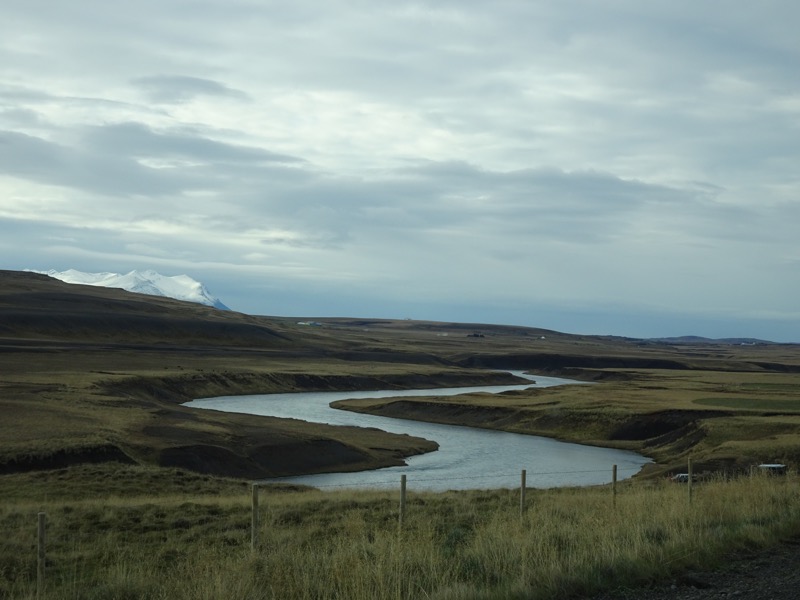
We stopped to investigated and drove forwards in tiny slow increments to try and hear where it was coming from. Ultimately there was nothing there obstructing the wheel and we think it was just dust and grit and shit on the brake pads… but once we were sure we weren’t compromising the vehicle or our safety, there was nothing we could do but move one. The noise eventually went away. It’s a mystery!?
By the time we got to the Deildartunguhvergeothermal hot spring that feeds the hydro system that heats most of the Borgarnes region, the brakes were quiet and forgotten.
Deildartunguhver is a natural hot spring that a very high flow rate – about 180 litres/second – and a very high natural water temperature – 97 °C. It is the highest-flow hot spring in Europe and a good deal of the water is piped 34kms to Borgarnes and up to 64kms to Akranes. So much steam and sulphur and hot water bubbling away. I’ve never seen anything like it.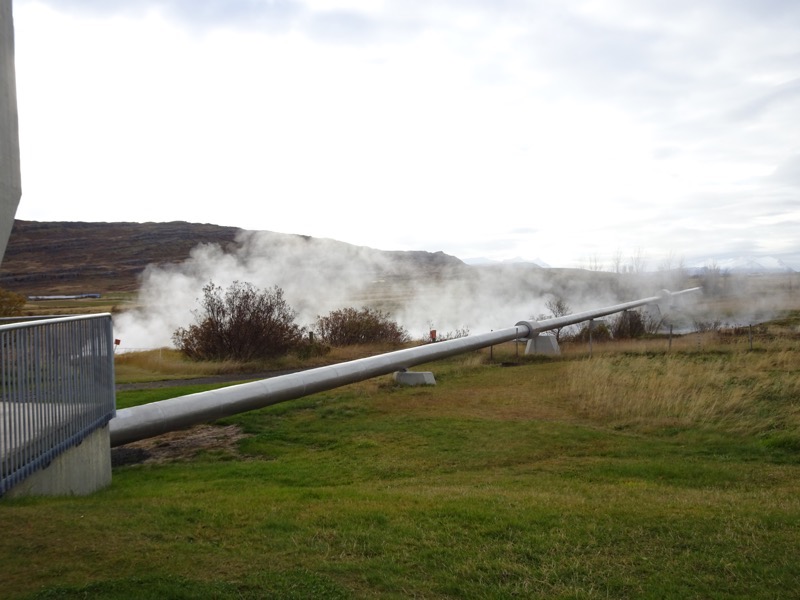
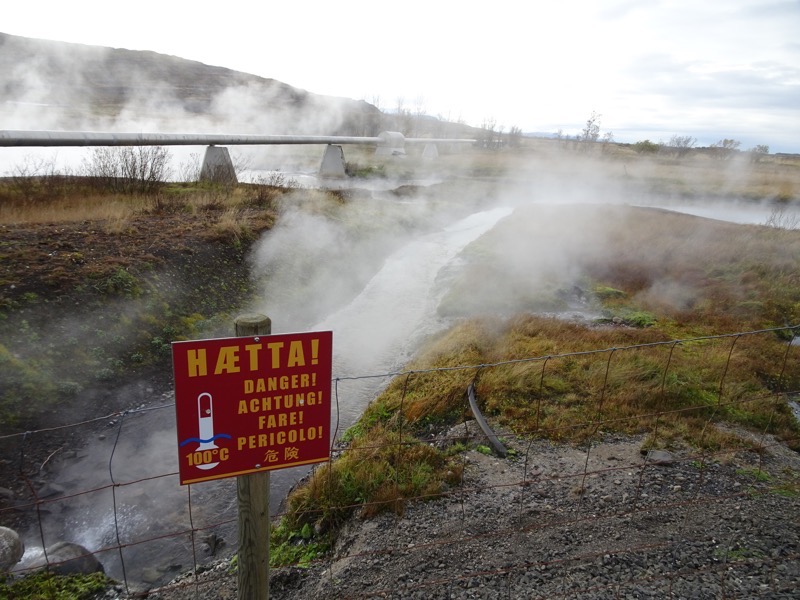
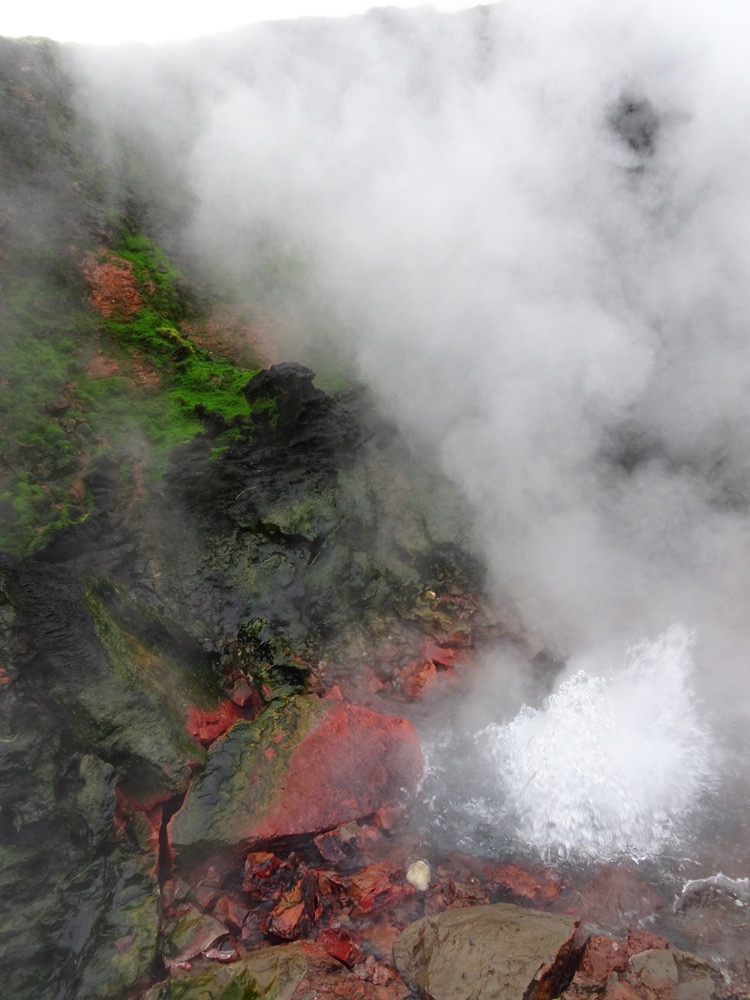
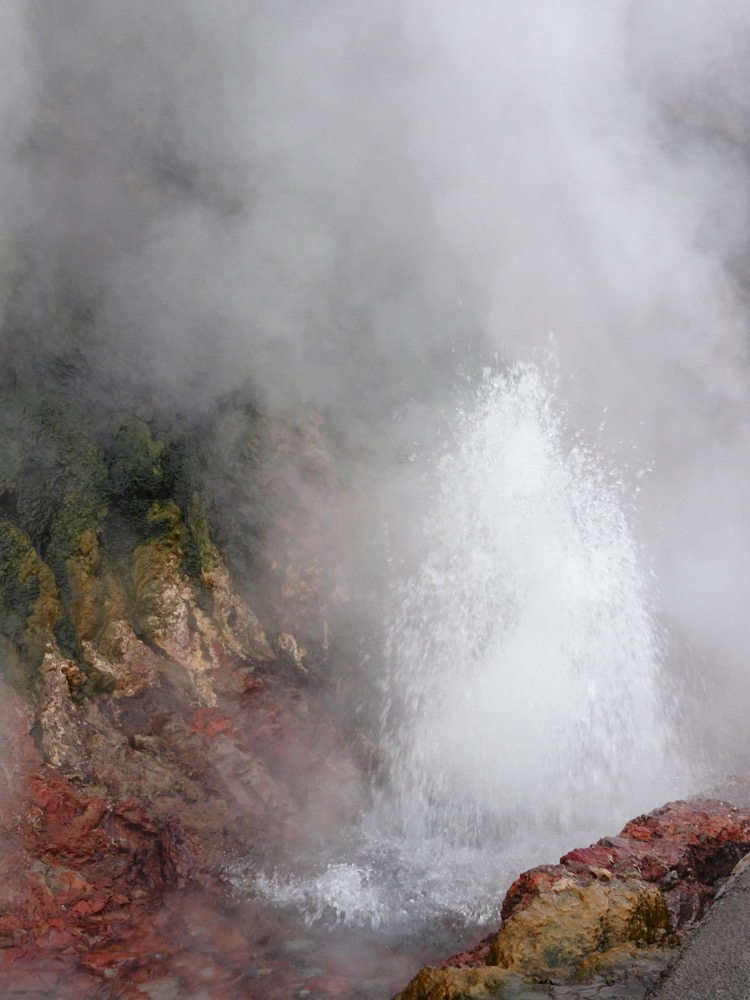
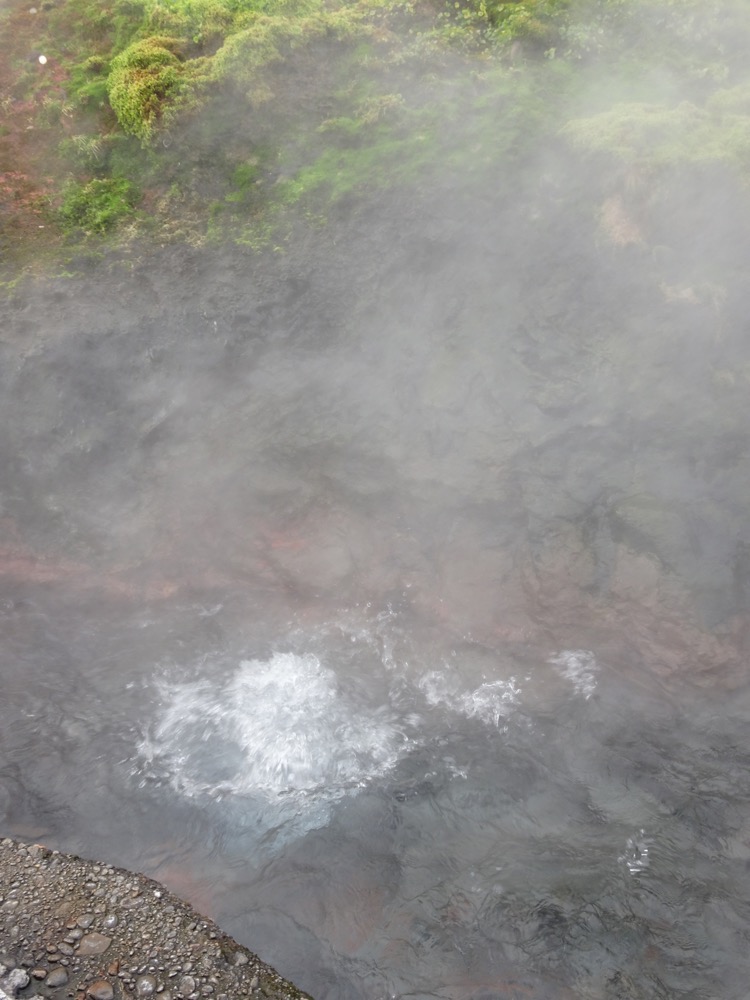
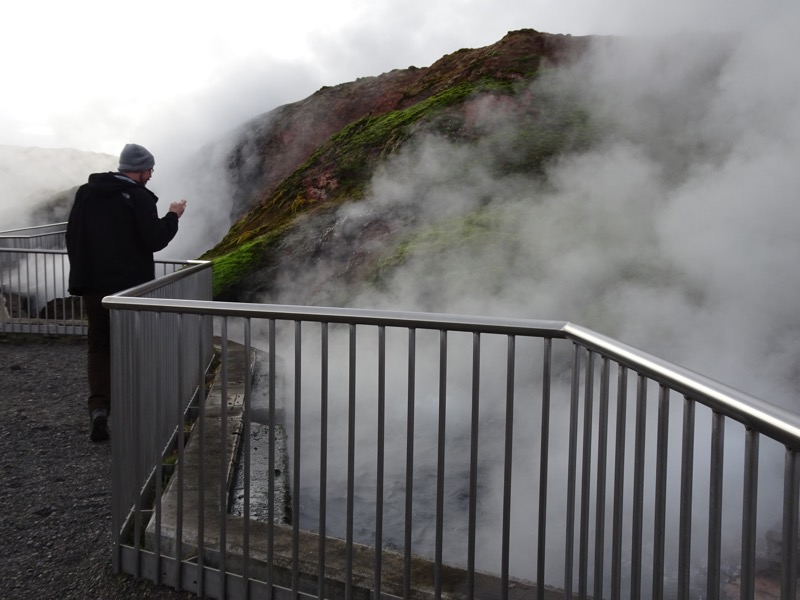
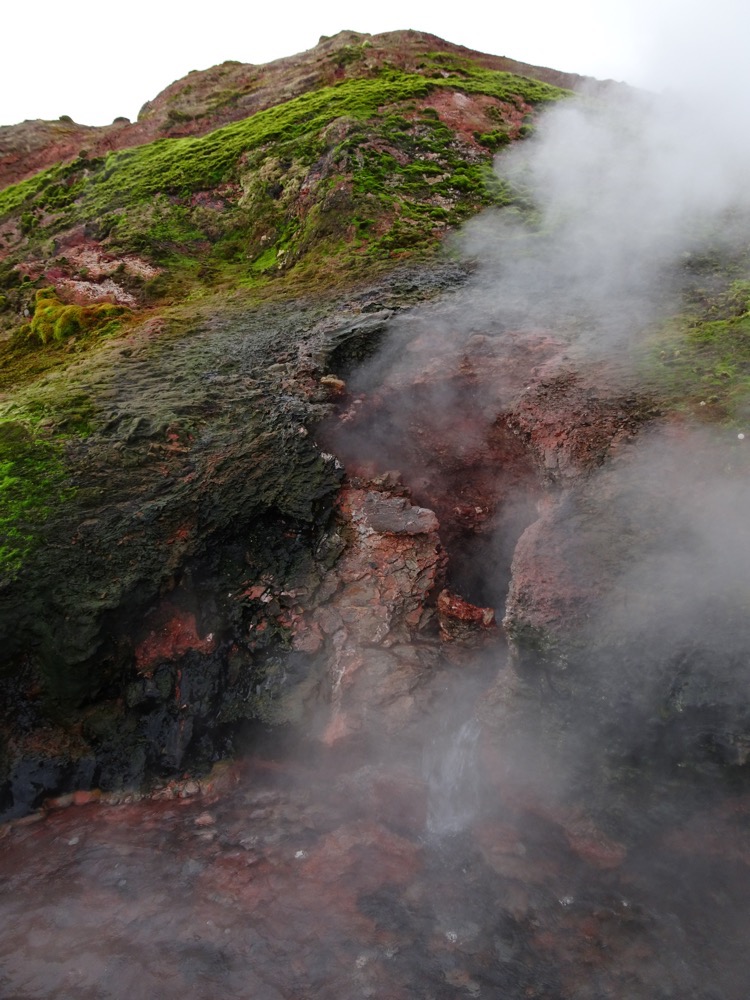
On leaving the hot springs we were headed to the Snorrastofa research centre which is dedicated to Iceland’s greatest medieval writer, poet, scholar and statesman, Snorri Sturluson (1179–1241). However, the centre is located right beside a rather large church, which today was overflowing with people attending a funeral and the research centre was closed. So we missed out on seeing the residence of the man who wrote many of the Icelandic sagas into the written record.
Instead, we decided to do a quick detour to the Stedji Craft Brewery – known for some of the most err… interesting and even controversial concoctions known to craft beer. The brewery is in a paddock at the end of a long rather quiet dirt road. There is not a lot of signage, but this rather uninviting looking sign told us we were in the right place.
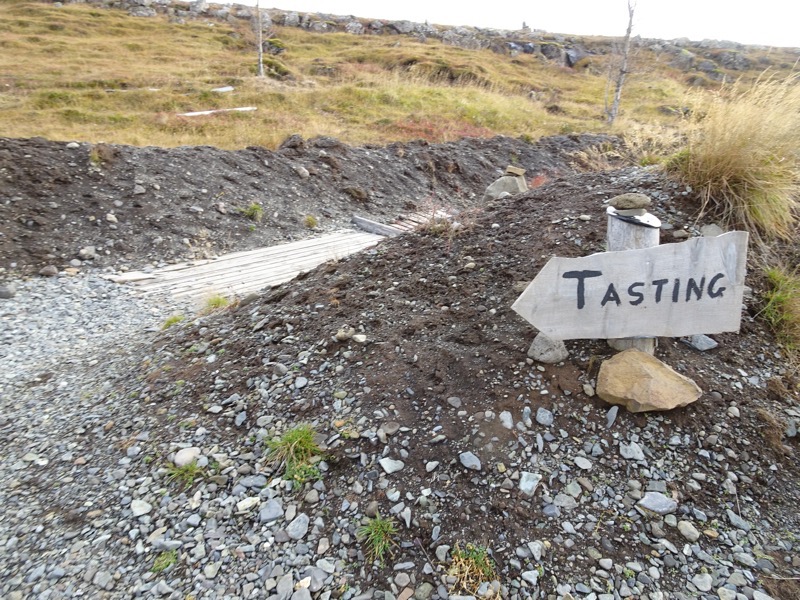
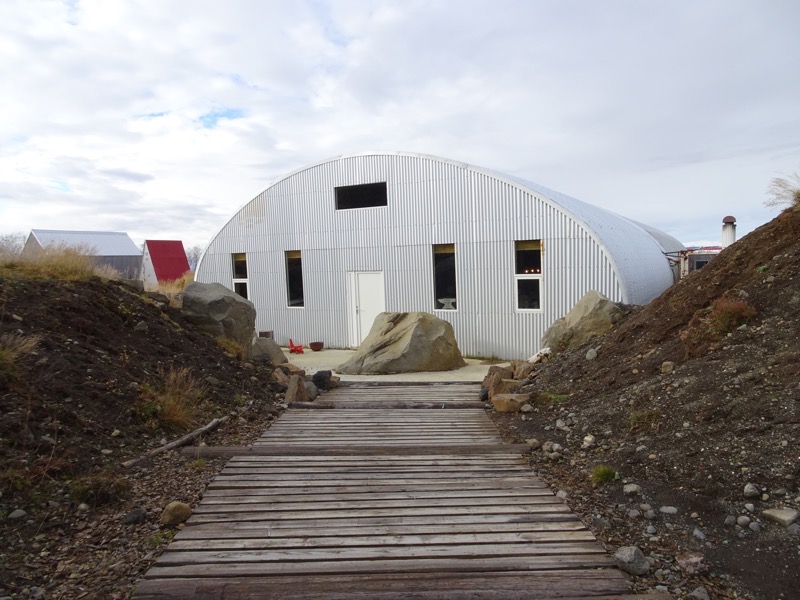
The brewery is described on the internet thusly:
“Steðji, which translates as Anvil, named after the rock formation next to Stedji Brewery and family house. A place of folklore and magic that today is the home of one of the most innovative, exciting and exuberant family brewery in the world. Steðji beer is not just a beer, it’s an alchemy of pure genius.”
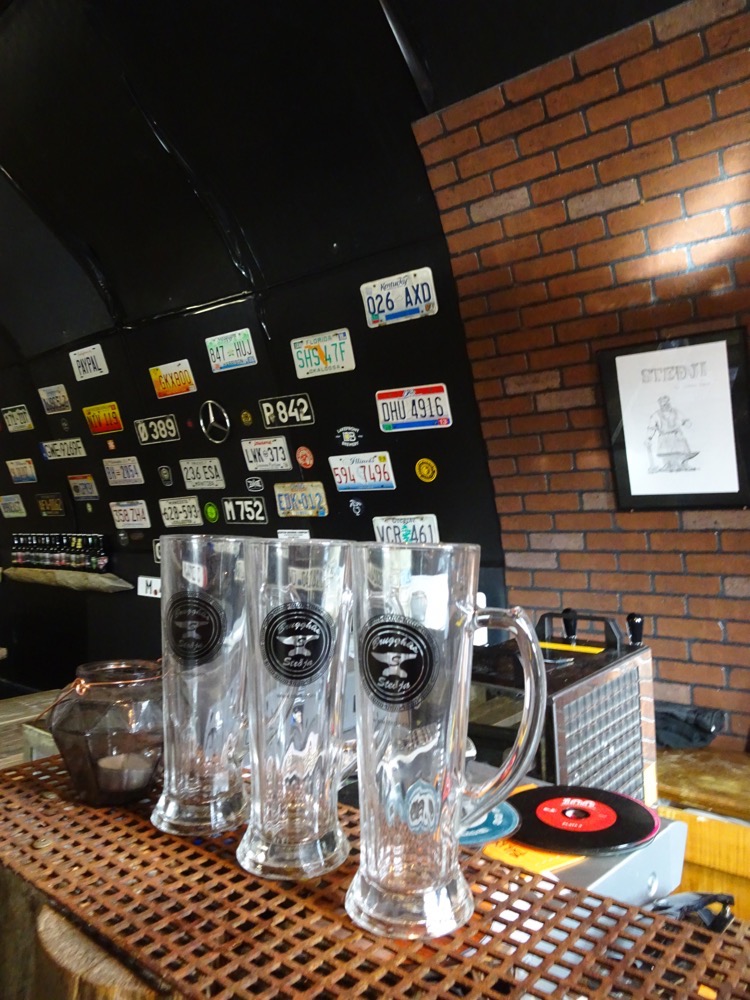
I’m here to tell you, boys and girls – it doesn’t get further from pure genius than this! We tried a tasting tray of five different beers –
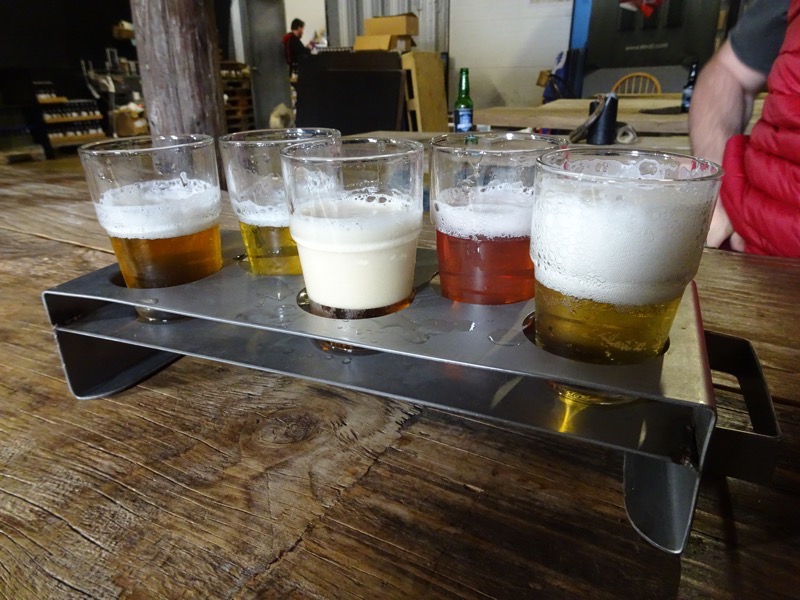 Steðji Lager – described as a very easy drinking light German lager
Steðji Lager – described as a very easy drinking light German lager
Verdict: not bad, light, tasty and definitely inoffensive
Steðji Jarðarberjabjórr – described as a light and refreshing beer with a great taste of strawberries.
Verdict: sweet beer, marketed literally as a ‘chick’s drink’, shame on them.
Steðji Dökkur bjór – German malty slightly dark stout beer.
Verdict: not my thing, but yale seemed to enjoy it better than some of the other offerings.
Steðji Icelandic Northern Lights – medium dark larger with liquorice flavours
Verdict: this shit is an abomination and if I didn’t like their puppy so much who was lurking near our table I would have spat it out all over the place.
Steðji Summer beer – an IPL with New Zealand lemon flavours. BBestseller
Verdict: This one too, was ‘not tasty’, though as yale noted, we were feeling somewhat scarred after the licquorice incident.
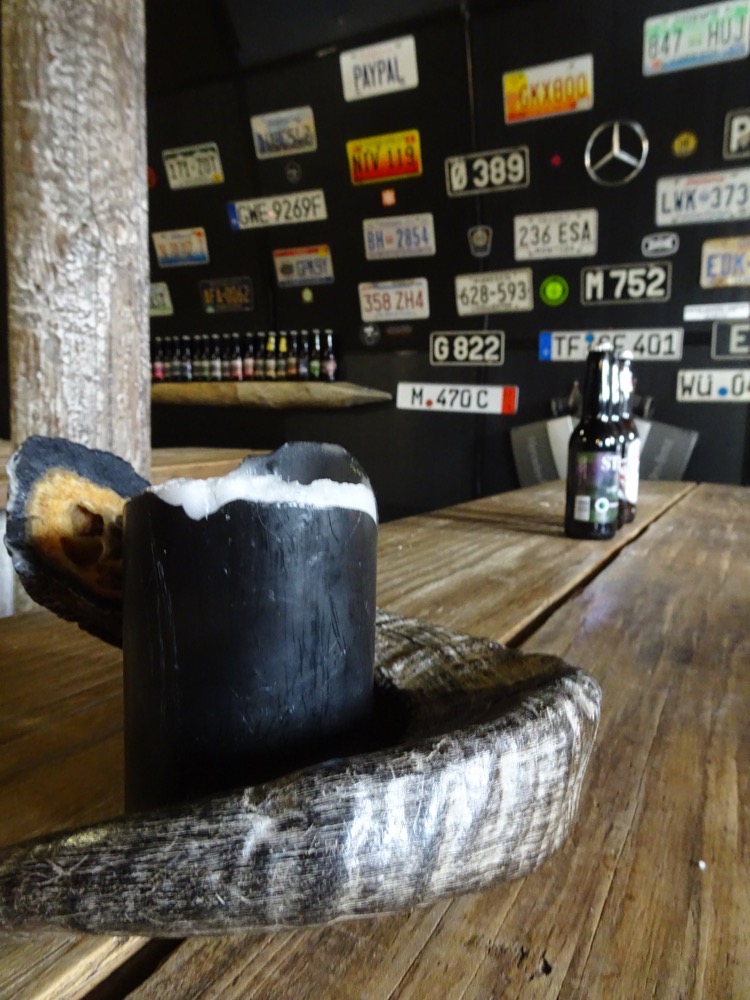
And finally, there was the Whale Beer…
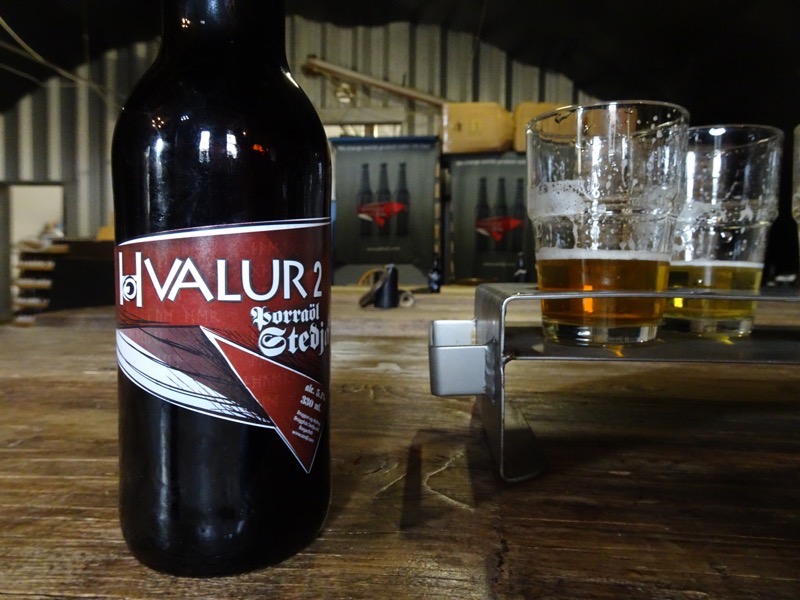 Hvalur 2 / Whale Beer – (from their website): 2015 – 2018 Hvalur 2 Þorraöl Steðji are even more controversial , again it was an ale purposely brewed for the season of Þorri, the Icelandic midwinter festival but instead of using milled whale bones we took it a step further and used sheep dung-smoked whale testicles from a Fin-whale mixed with pure Icelandic water, malted barley and hops.
Hvalur 2 / Whale Beer – (from their website): 2015 – 2018 Hvalur 2 Þorraöl Steðji are even more controversial , again it was an ale purposely brewed for the season of Þorri, the Icelandic midwinter festival but instead of using milled whale bones we took it a step further and used sheep dung-smoked whale testicles from a Fin-whale mixed with pure Icelandic water, malted barley and hops.
Verdict: Yep, whale testicles smoked in sheeps dung! Far out the winters around here must get boring! But we tried it, and honestly, it wasn’t too bad… much better thant he licquorice incident.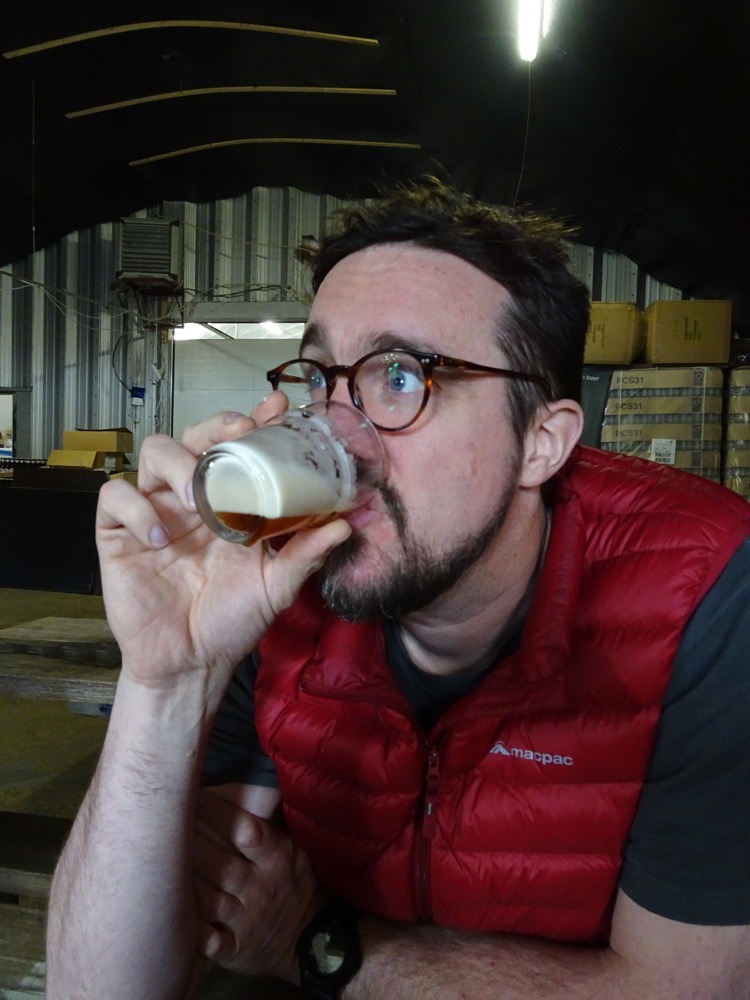 The nicest thing I can say about our brewery stop is they had a gorgeous little farm dog hanging around – she had the softest fur and such a sweet face. The beers – were interesting? Unusual? Too bloody hipster? Trying too hard? All of the above? Shudder. Traumatised.
The nicest thing I can say about our brewery stop is they had a gorgeous little farm dog hanging around – she had the softest fur and such a sweet face. The beers – were interesting? Unusual? Too bloody hipster? Trying too hard? All of the above? Shudder. Traumatised.
We then had to put up with an hour or so over more gorgeous scenery as we made our way back to Reykiavik. Our lap of the entire country nearly complete.
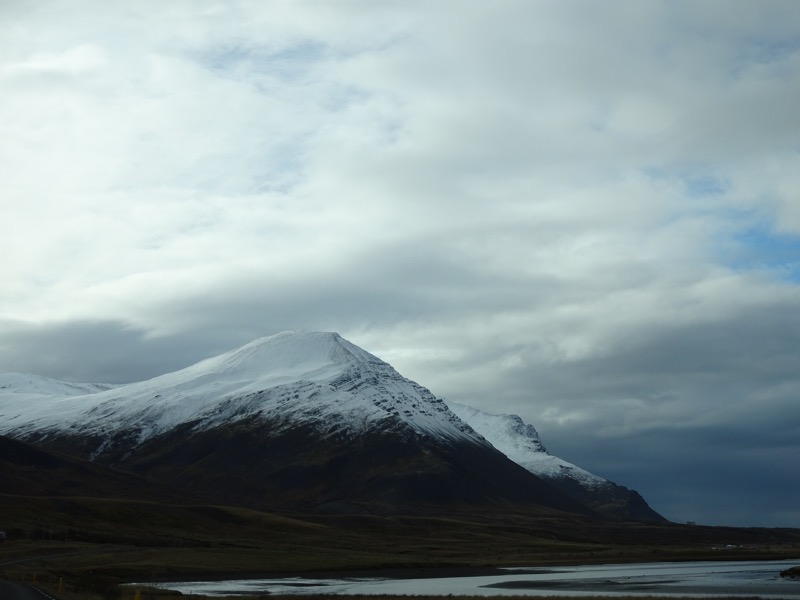
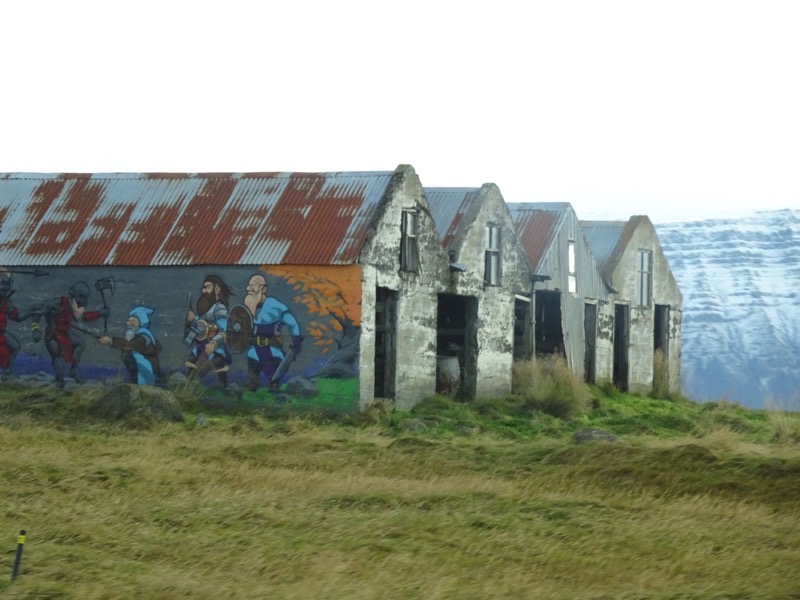 Every corner. I swear you drive around a corner, a mountain, you cut back on the road you were on to look behind you and were greeted by an entirely different vista.
Every corner. I swear you drive around a corner, a mountain, you cut back on the road you were on to look behind you and were greeted by an entirely different vista.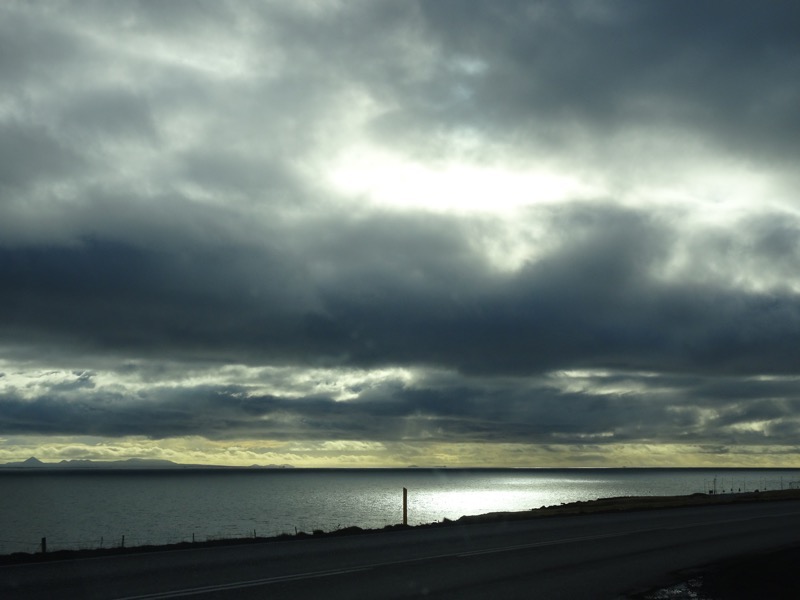
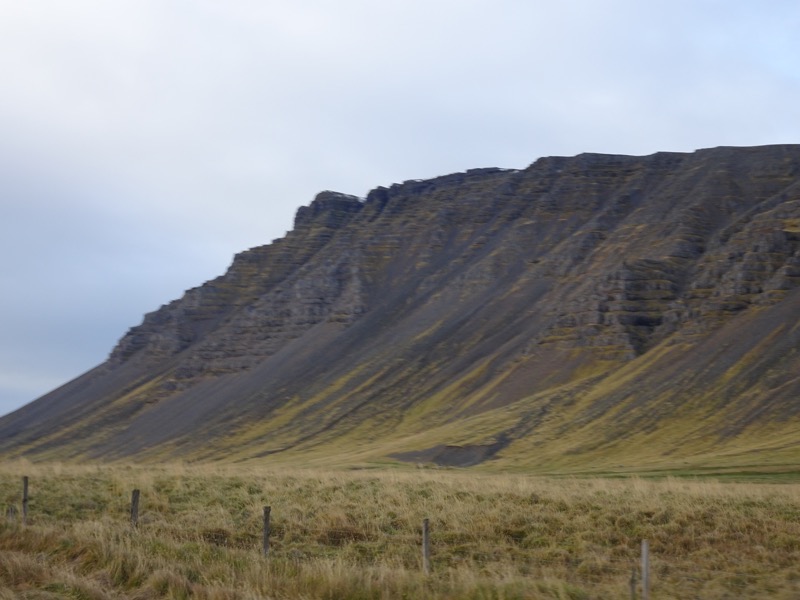
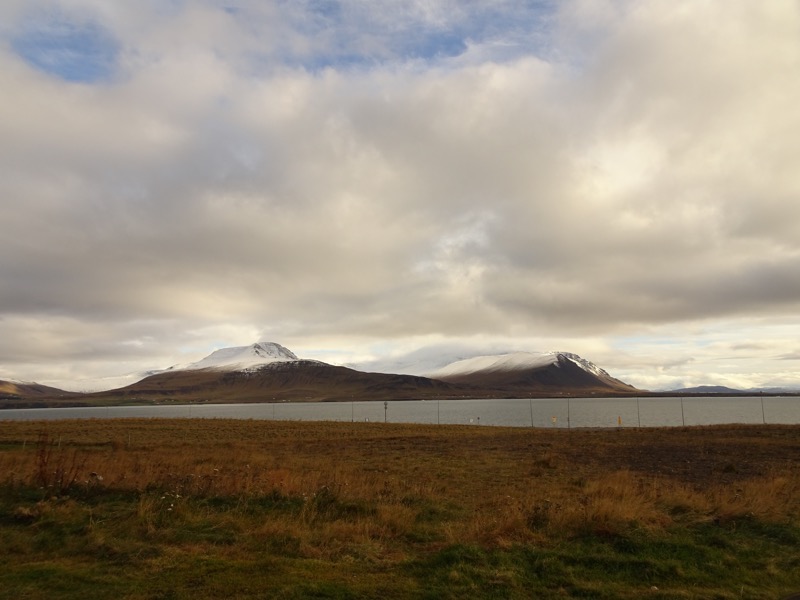 We went through the Hvalfjarðargöng tunnel, which takes drivers directly under the fjord in 7 minutes saving what used to be an hour drive.
We went through the Hvalfjarðargöng tunnel, which takes drivers directly under the fjord in 7 minutes saving what used to be an hour drive.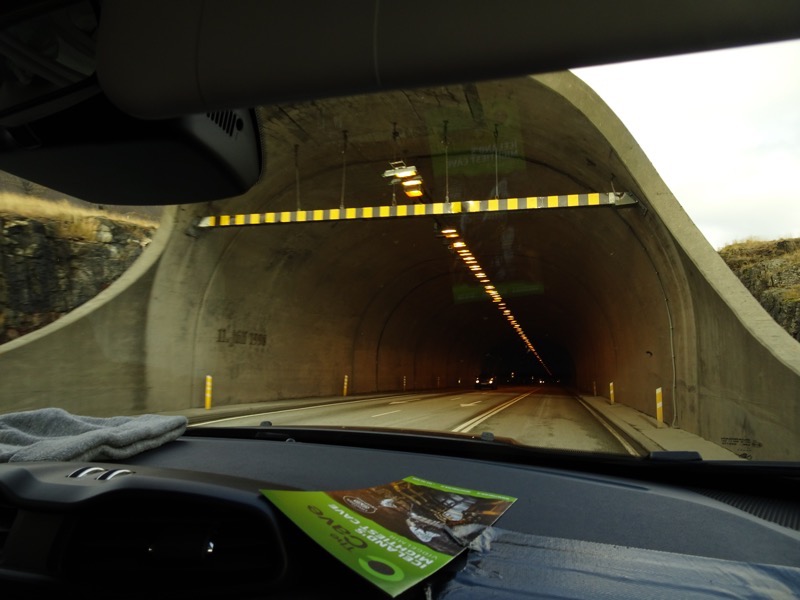 And before we knew it, we were heading back into Reykjavik.
And before we knew it, we were heading back into Reykjavik.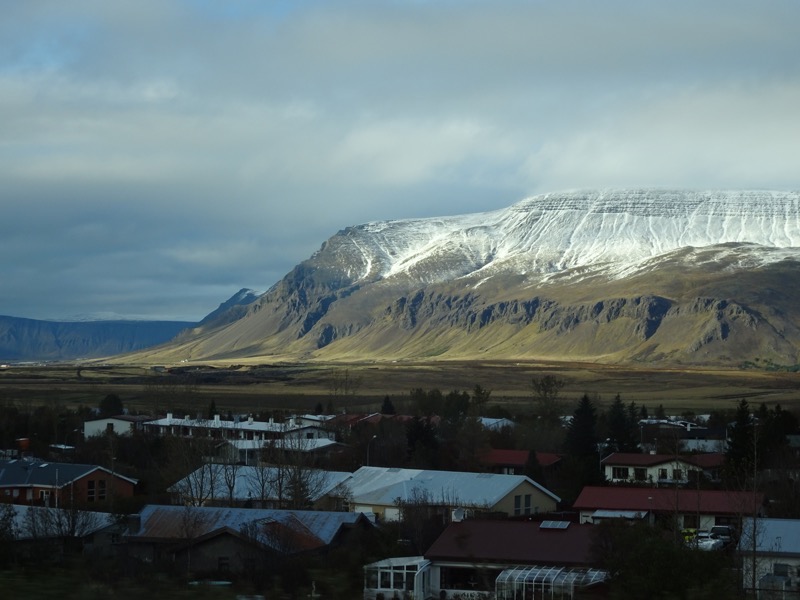 Harpa Concert Hall in the afternoon sun:
Harpa Concert Hall in the afternoon sun: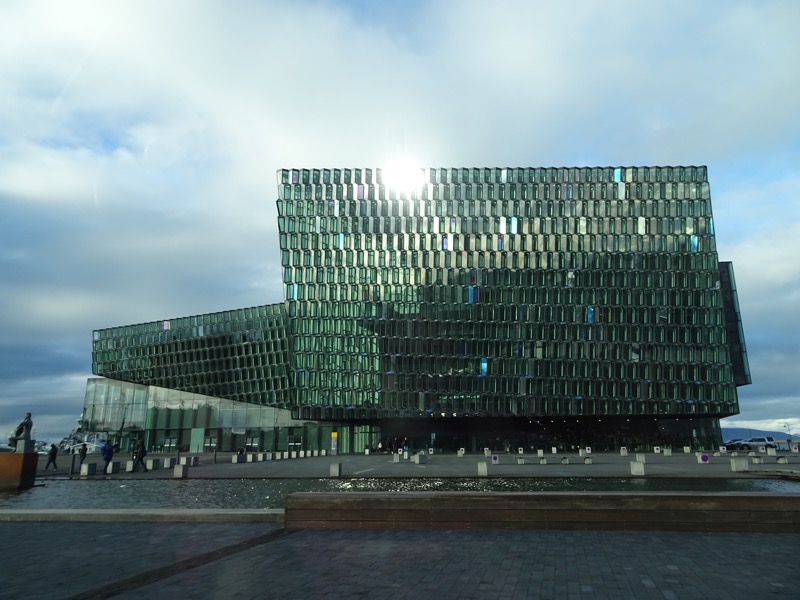
So we got back to our AirBnB place and were really hoping that there would be a letter here for us – you see, I had left Brisbane in a bit of a distracted state and had forgotten to get our International Drivers Licenses out of the safe. Iceland carhire companies don’t care – they can read your English license – but we are not going to have the same benefit of the doubt on the rest of the trip, so I had asked Mr K to mail them for us. Between not having an address to send it to, and a public holiday last week in Australia, we were cutting it pretty fine to receive it before we leave Iceland. It should have been delivered today, but wasn’t. So we hightailed it to the post office, 15 mins before they closed to find out what had happened to the documents.
Initially, the post office lady couldn’t find it at all – the tracking number was coming up with no info, my name was coming up with no infor, but thankfully she was able to search by intended address and ta-da! Our letter was right her the back room of that very post office waiting for us! OMG, all the reliefs. One less thing to worry about tomorrow.
We had an hour or so before we were supposed to be heading out to Grindavik to see the famous Blue Lagoon. Many people recommend flying into Iceland and visiting here to recover from your long haul flight – personally, I think we have done this the right way around, and are visiting to recover from our two weeks of unusual beds, unusually cold and wet weather and the running around like tourists.
The Blue Lagoon is a huge thermal hot spring located in the middle of a lava field with warm waters are rich in minerals like silica and sulfur. It’s supposed to be good for your skin, but I have to say it did nothing but dry me out. It’s also known to trash your hair so they give you loads of conditioner to put on *before* you get in the hot springs. Being a bit of an indoor sort of girl most of the time we had opted for a nighttime booking – I am not keen on standing around in the hot water in the full sun (not that it’s been sunny much since we got here!), but the booking was made before we left home. So night bathing it was.
The place was a madhouse – hundreds of people everywhere, ‘conductors’ standing on stools telling people how it works and what to expect, and just people, people everywhere – even though it’s offseason, freezing cold (literally 1C) and nighttime?! We got out towels, had our showers and head for the springs. It was very relaxing, or at least it could have been if there were not so many young people boozing up and yelling and yahooing at each other :/ Not my idea of a relaxing time at a hot spring. Anyway, the lagoon is enormous so we managed to stay away from those peoples as much as possible. Because of the water and the abrasive nature of it – I didn’t have a camera with me, so I found some quick promo pics that are similar to our experience there today.
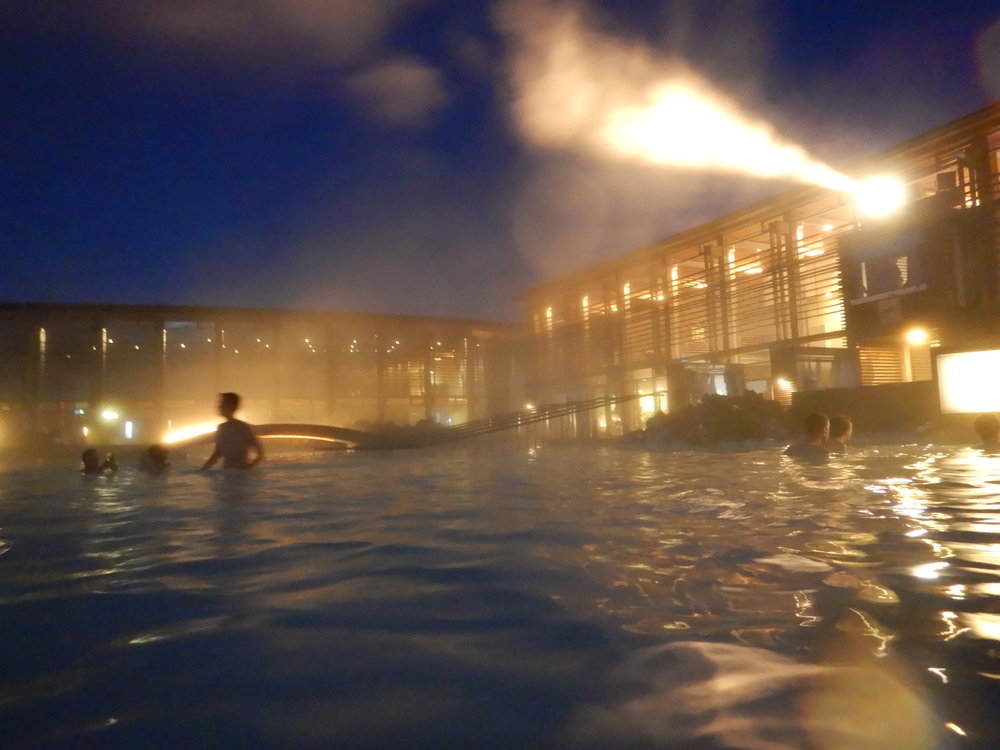
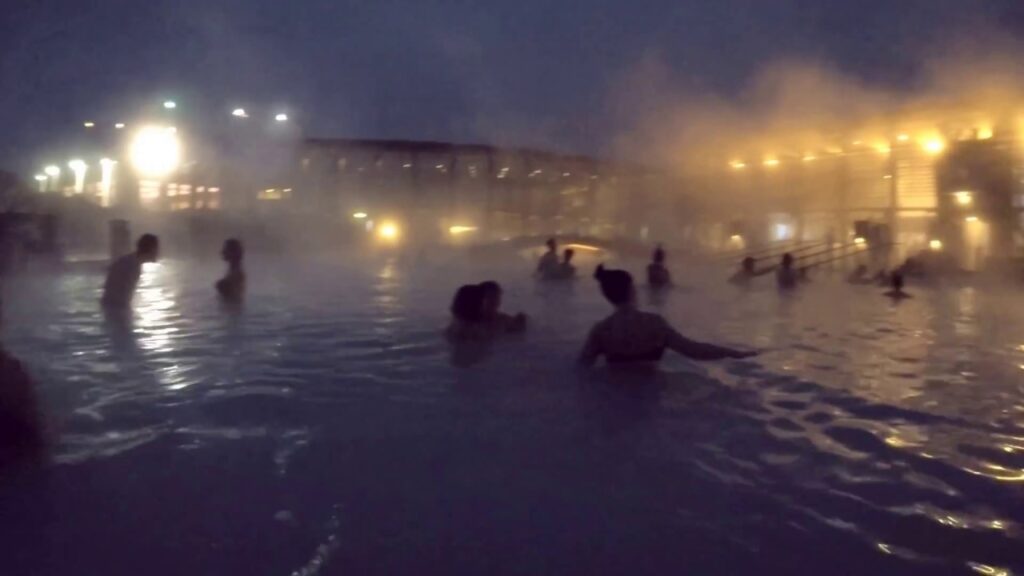 It was lovely and steamy, and the water was just the right amount of hot. After our soak, we had a dinner reservation at the Blue Lagoon Lava Restaurant. When looking at the place from home, we were shocked at how overpriced it was… thought it must have been tourist central prices. But now we have been here a while, we realise, it’s not really – it’s just Iceland prices. So we made a dinner booking. The Lava restaurant is lovely, it caters to the spa clients and you can turn up in your bathrobe at lunchtime if you so desire.
It was lovely and steamy, and the water was just the right amount of hot. After our soak, we had a dinner reservation at the Blue Lagoon Lava Restaurant. When looking at the place from home, we were shocked at how overpriced it was… thought it must have been tourist central prices. But now we have been here a while, we realise, it’s not really – it’s just Iceland prices. So we made a dinner booking. The Lava restaurant is lovely, it caters to the spa clients and you can turn up in your bathrobe at lunchtime if you so desire.
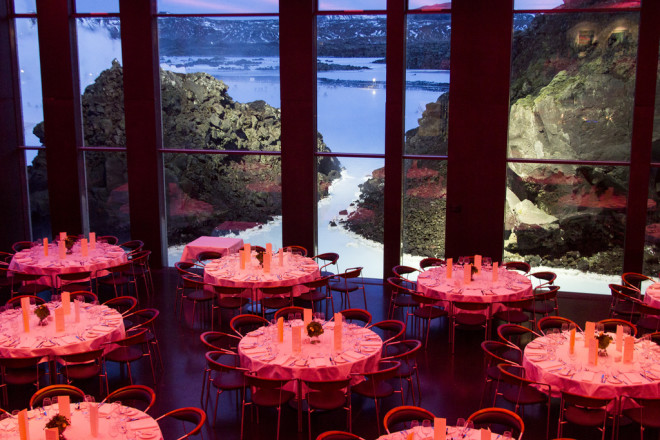
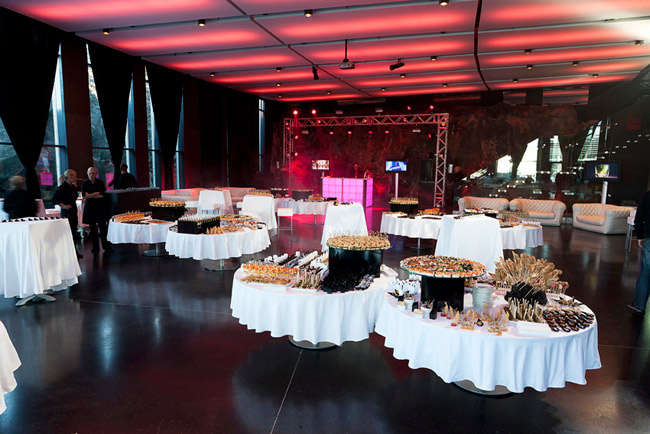
My only complaint is the lighting… the ceiling has strong pink lights in it, which makes everyone look ruddy and red-faced. It also makes your food a little hard to look at, which seems a bit of a design flaw rather than a design element:
Cured beef w~ Brennivín, blueberries, black garlic mayonnaise, beer bread
Langoustine soup – Garlic marinated langoustine, dulse
Lamb fillet and shoulder of lamb w~ Rutabaga, carrots, rhubarb, thyme
Grilled beef tenderloin w~ Wild mushrooms, crispy potatoes, onion jam, dijon mustard
Crispy potatoes – that is what you call french fries when you are a pretentious git writing a menu. All delicious though (well except the fries, I didn’t eat them).
The only down side of our night bathing and then dinner on site? Having to brave the cold to get back to the car park (about 500m away) and then drive the 40 mins back to Reykjavik in a car that was just warming up nicely as we got back to our AirBnB. 🙂
Huge day, with much seen and so much done.
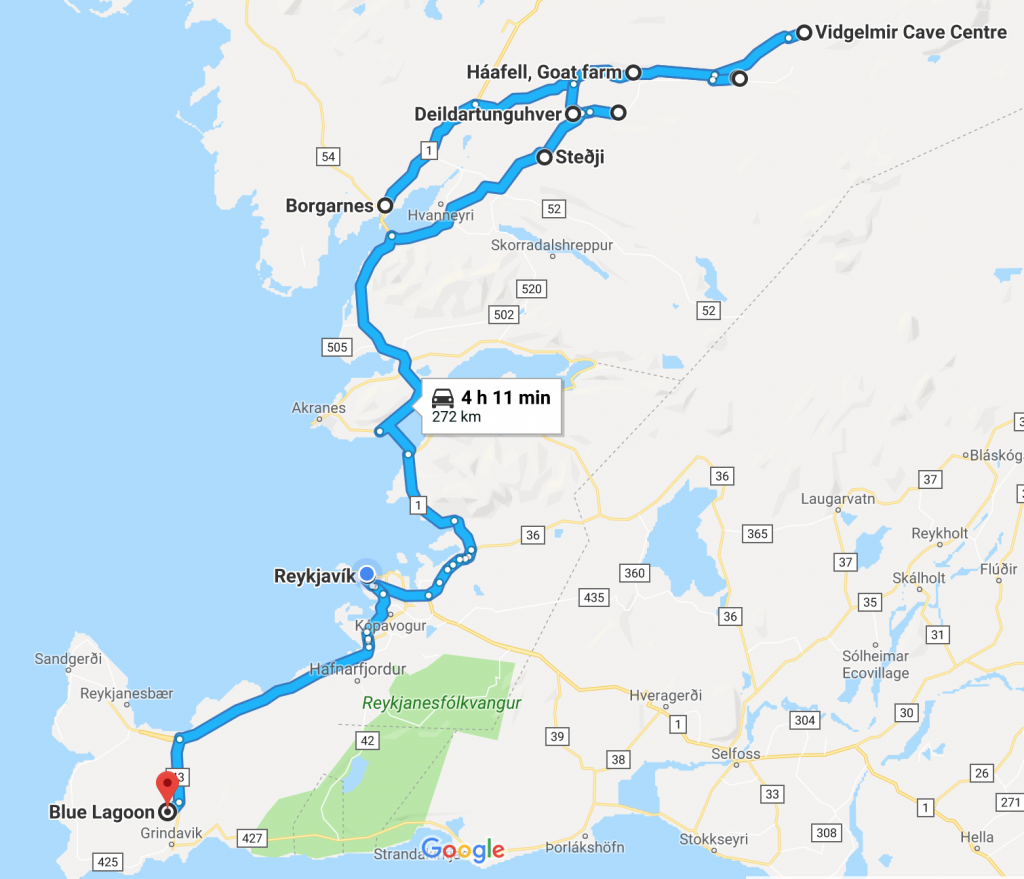

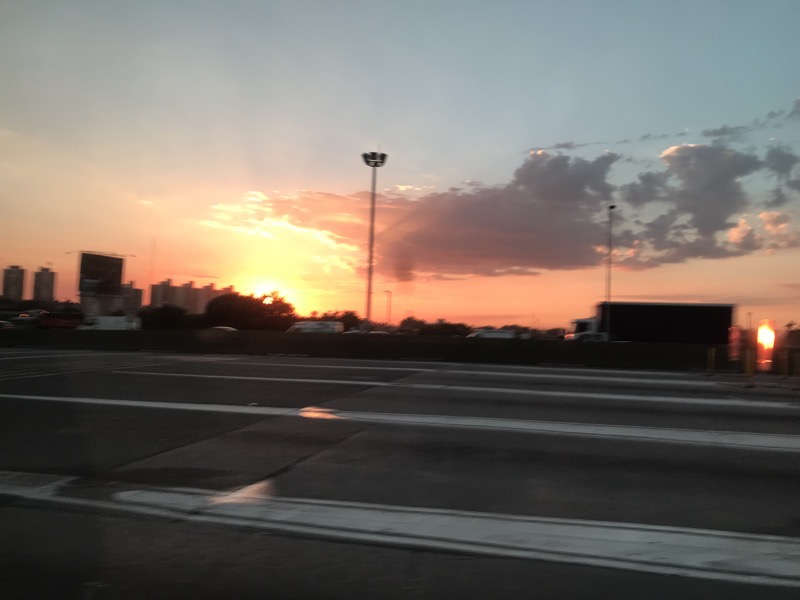





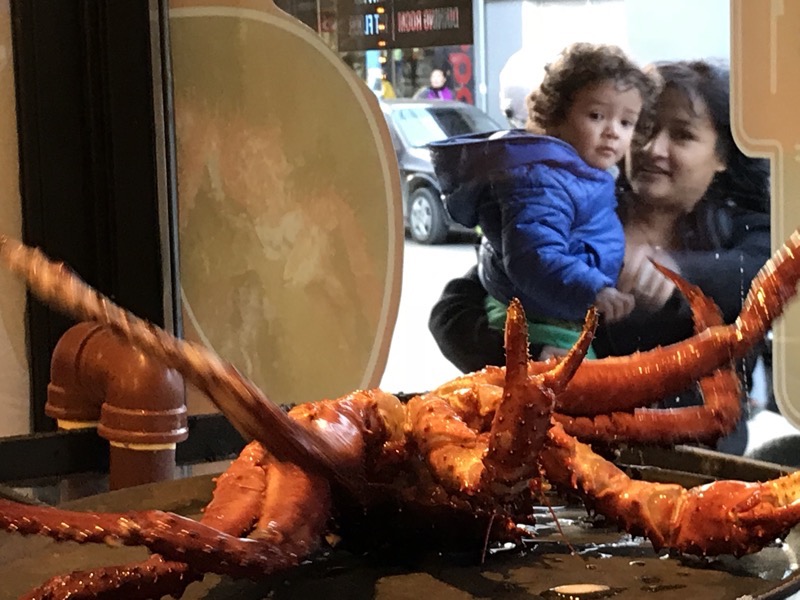
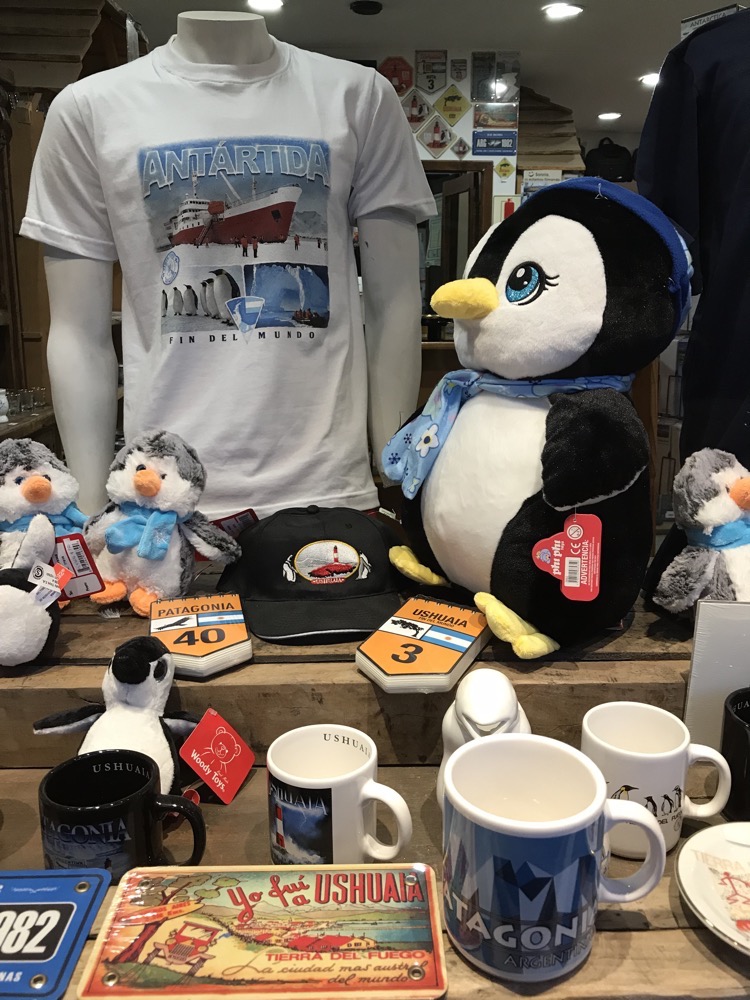
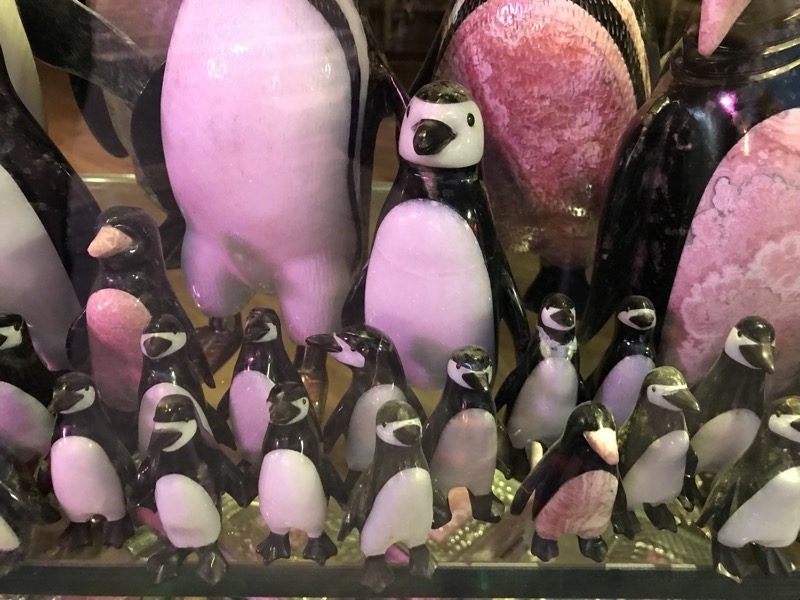 Gifts made from Rhodocrosite also known as Rosa del Inca or Inca Rose stone. It is the national stone of Argentina and is particualrly stunning for it’s beautfiul red and pink hues.
Gifts made from Rhodocrosite also known as Rosa del Inca or Inca Rose stone. It is the national stone of Argentina and is particualrly stunning for it’s beautfiul red and pink hues.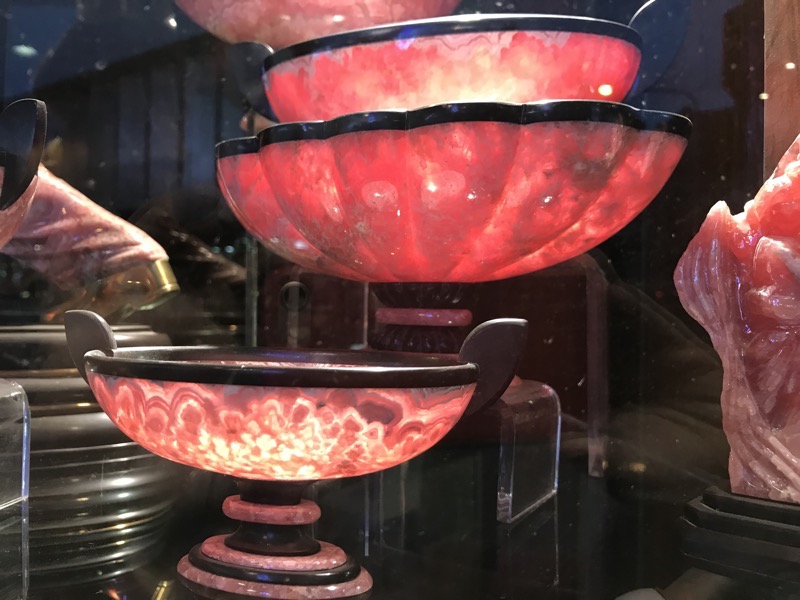

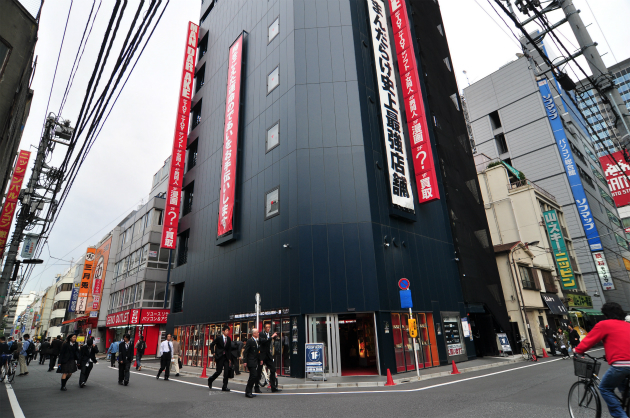
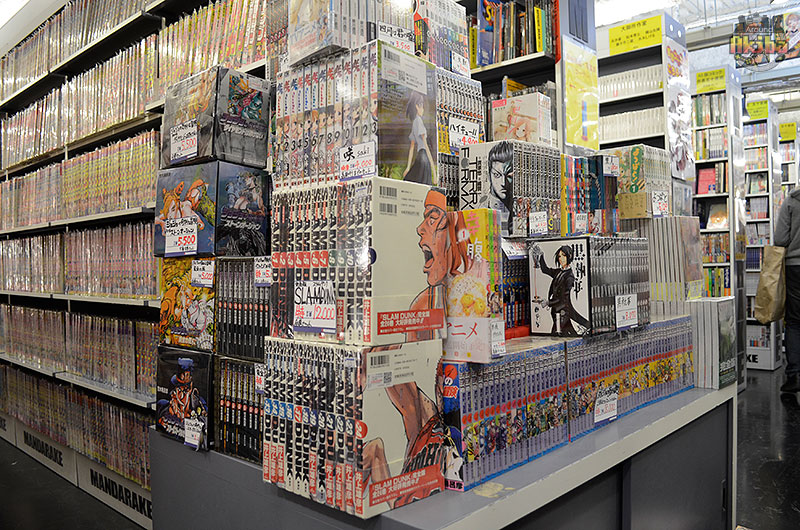
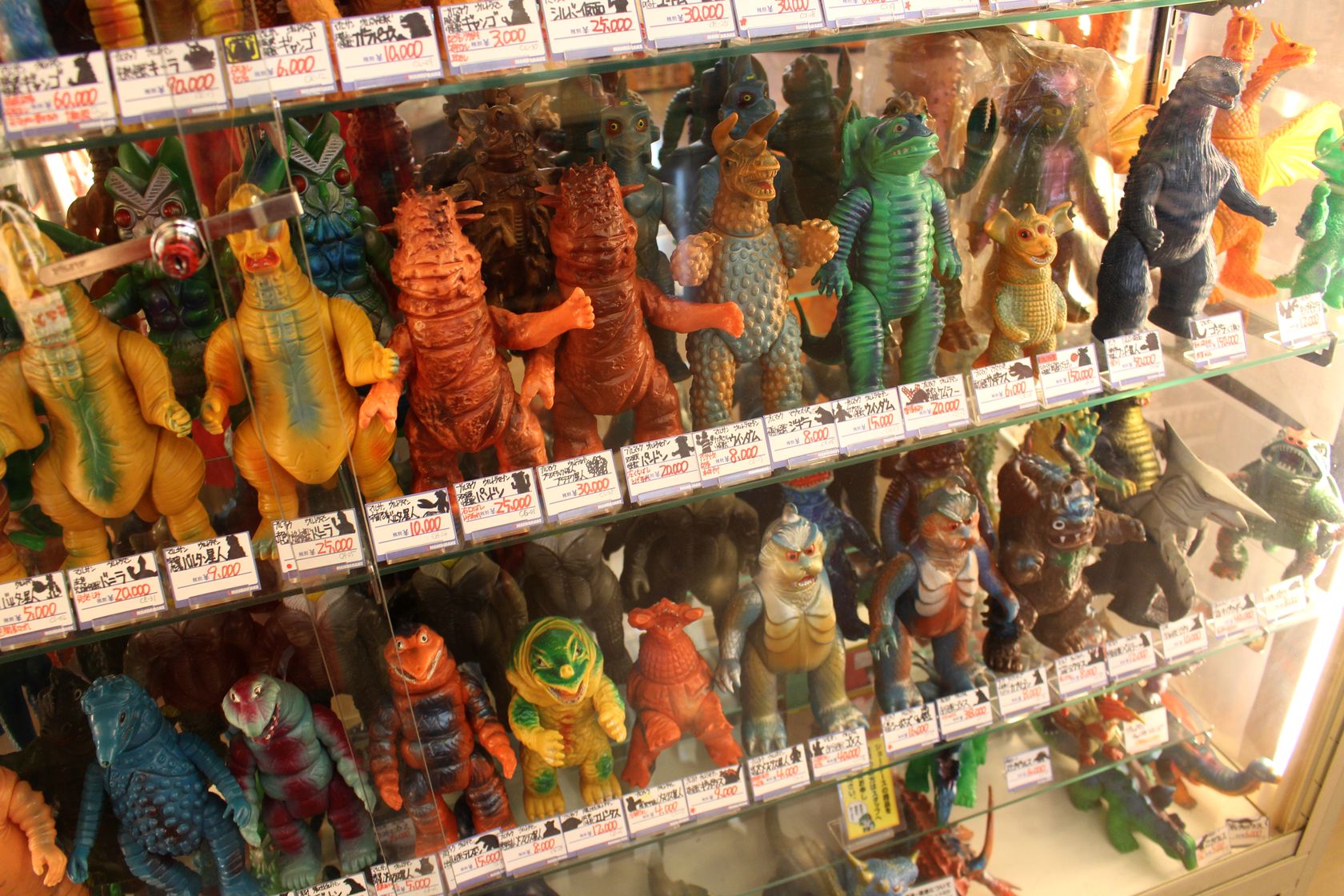
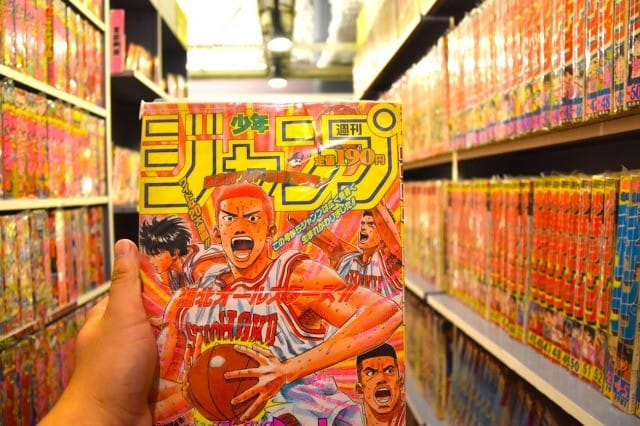
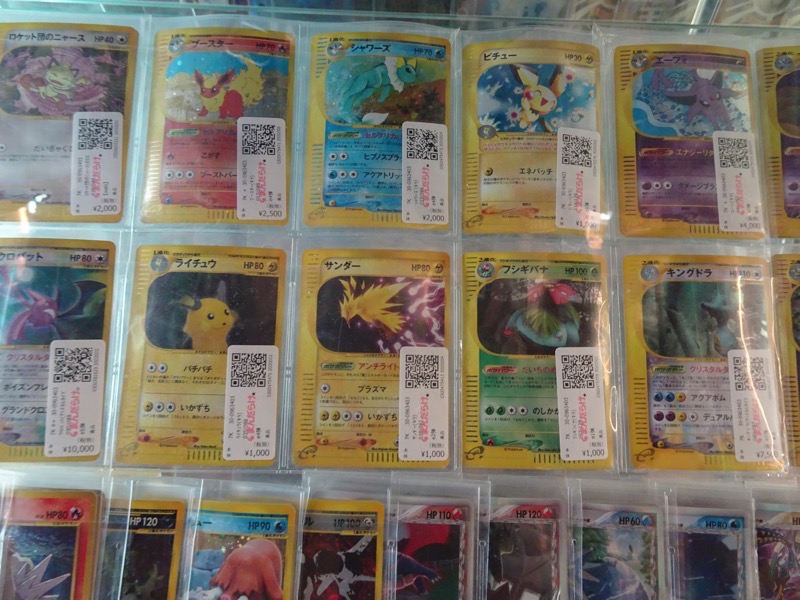 Back out on the street, even your regular little corner agift store is packed to the gills with merchadise in every nook and cranny. Everyone is a bull on the china here, there’s no avoiding it. They have so much merchandise all crammed into such tiny little stores that you can’t help but knock half the products… which is why they are all secured to shelves using clips and hooks and everything swings and moves as you walk through the store.
Back out on the street, even your regular little corner agift store is packed to the gills with merchadise in every nook and cranny. Everyone is a bull on the china here, there’s no avoiding it. They have so much merchandise all crammed into such tiny little stores that you can’t help but knock half the products… which is why they are all secured to shelves using clips and hooks and everything swings and moves as you walk through the store.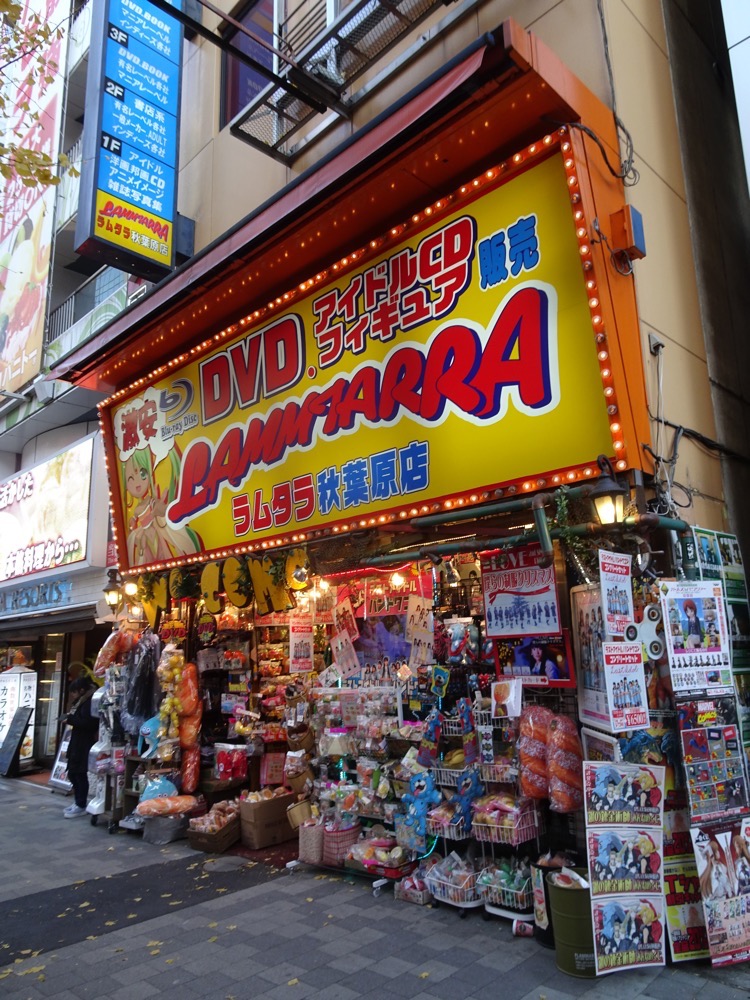 And of course, EVERY store has its adults-only upstairs areas (which are sometimes as many as three or more floors bigger than the floor of Dragonball Z toys and Pokemon plush that attracts people into the place! So much porn! When I wondered out loud, ‘Who actually pays for porn in this day and age?’, the Teenager replied, ‘Well, if you want something specific, you have to pay for it.’ 😮
And of course, EVERY store has its adults-only upstairs areas (which are sometimes as many as three or more floors bigger than the floor of Dragonball Z toys and Pokemon plush that attracts people into the place! So much porn! When I wondered out loud, ‘Who actually pays for porn in this day and age?’, the Teenager replied, ‘Well, if you want something specific, you have to pay for it.’ 😮 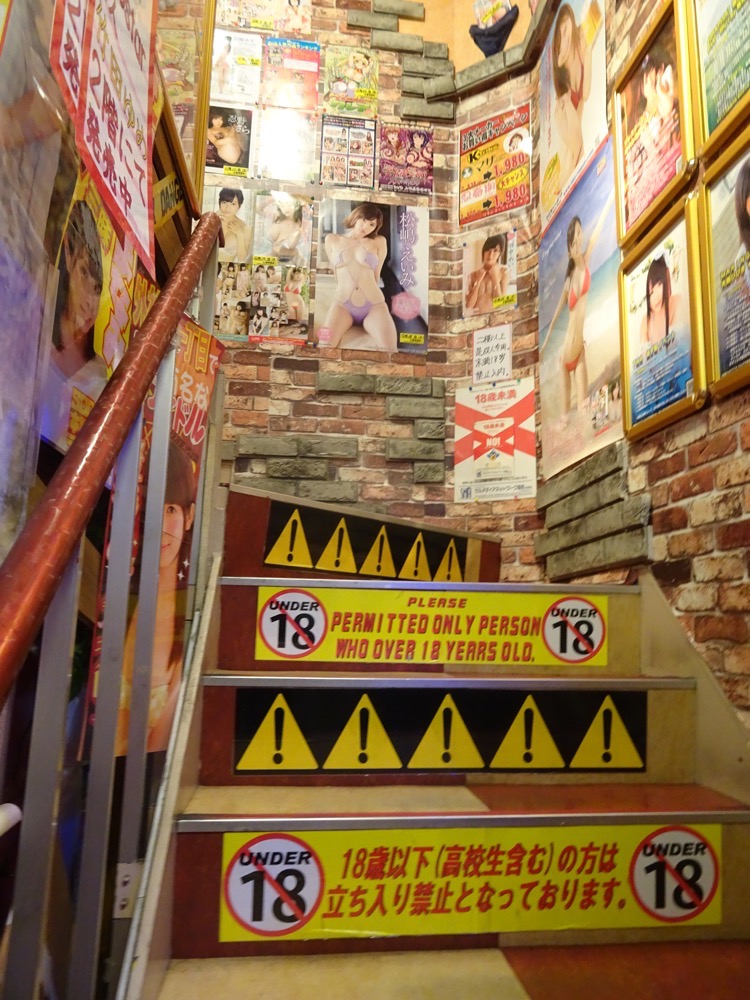 Gaming and vending machines are everywhere… throw in your yen, and manouvre the dodgy gaming controls for a chance to win an enticing soft yellow squishy thing! 🙂
Gaming and vending machines are everywhere… throw in your yen, and manouvre the dodgy gaming controls for a chance to win an enticing soft yellow squishy thing! 🙂 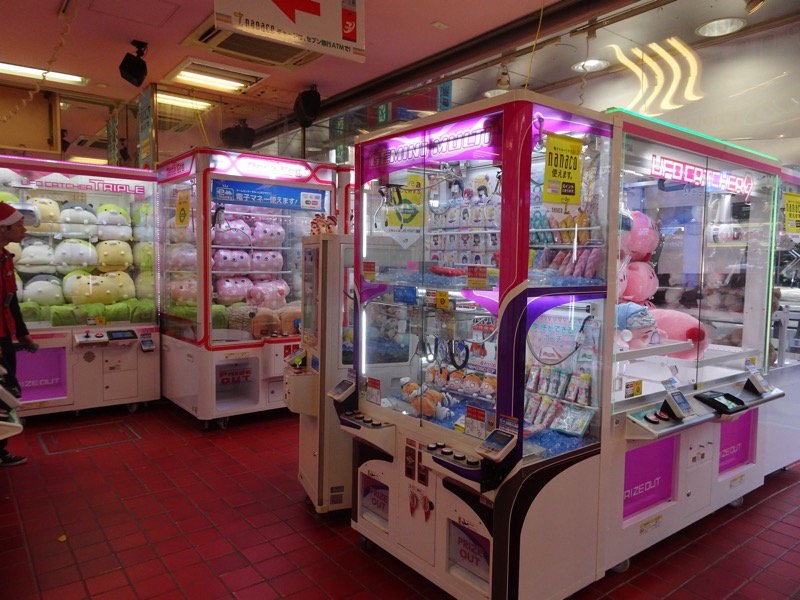 Or throw in slightly more yen and get a chance to win this off license Pikachu. 🙂
Or throw in slightly more yen and get a chance to win this off license Pikachu. 🙂 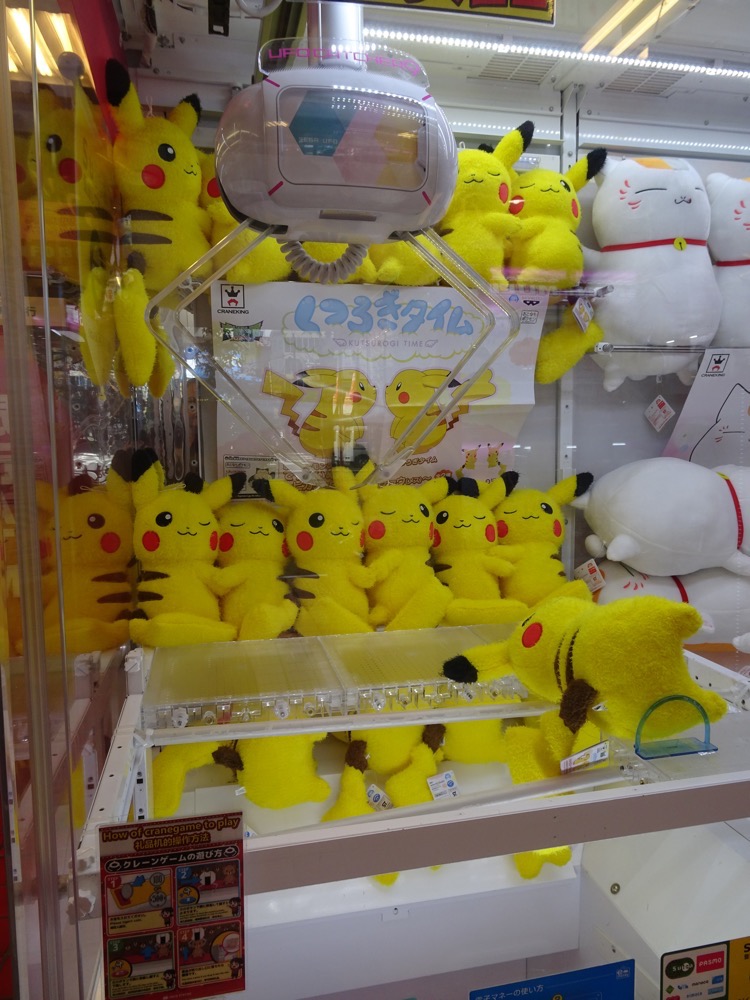 Racks and racks of toy dispensing machines line the streets. They usually take between Y200 and Y500 and dispense a random little plastic toy-in-a-ball. They must be profitable, but I can’t help but wonder who is buying all these toy-in-a-balls? They’re obviously designed to be collectable but still…
Racks and racks of toy dispensing machines line the streets. They usually take between Y200 and Y500 and dispense a random little plastic toy-in-a-ball. They must be profitable, but I can’t help but wonder who is buying all these toy-in-a-balls? They’re obviously designed to be collectable but still…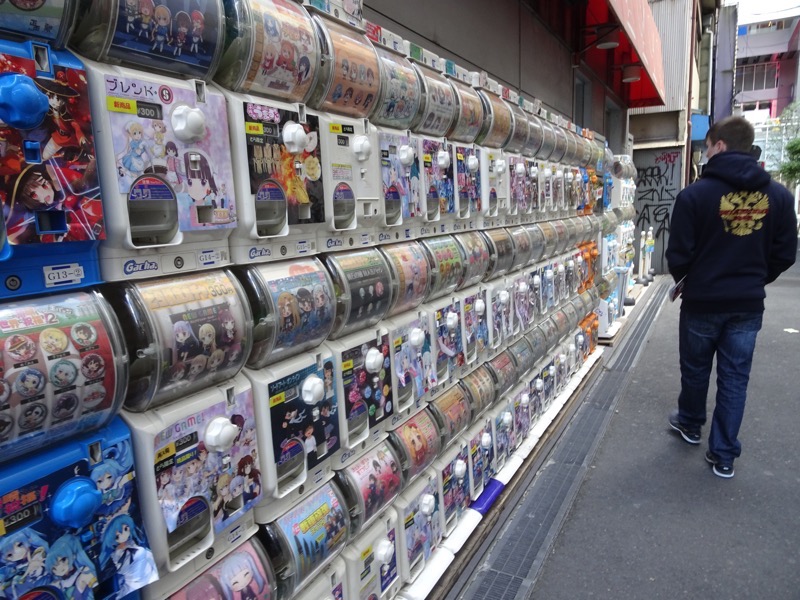 This one is a corker – there are five plastic wearable badges in this machine, with one of five cute anime girls on each button which you will get at random…
This one is a corker – there are five plastic wearable badges in this machine, with one of five cute anime girls on each button which you will get at random…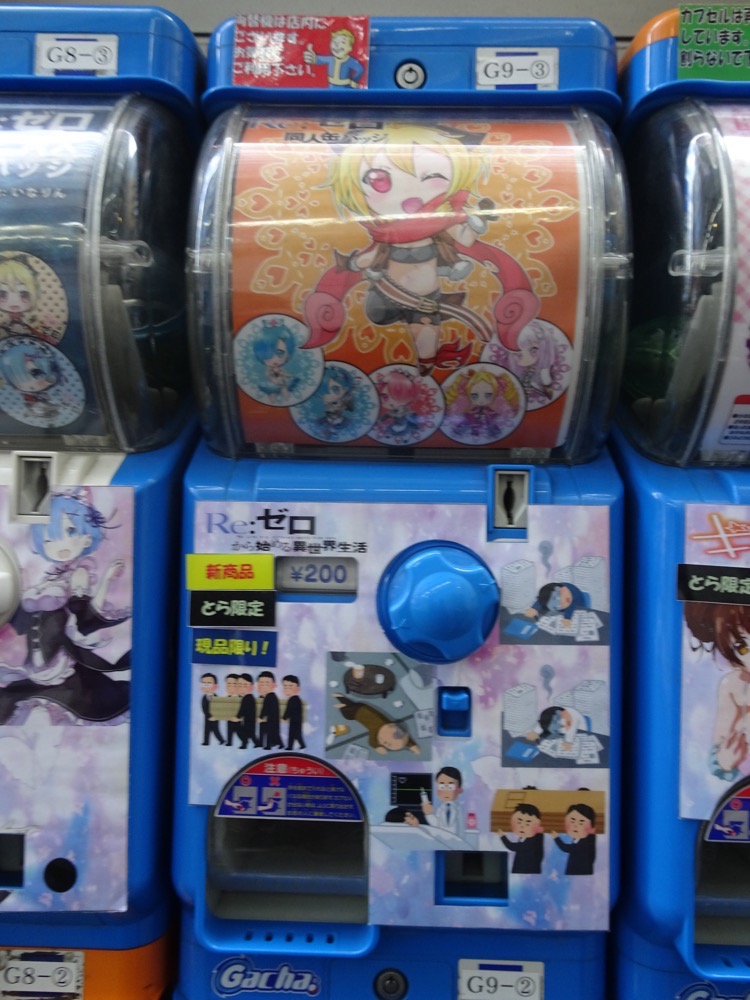 …and on the bottom of the machine are pictures of a man having a sad/tired rough time. We used the Google Translate over the text and basically, it was saying that if you buy this badge, you can escape the drudgery of your everyday life and be happy! Happiness! This little machine is selling escapism and happiness… that’s one helluva badge!
…and on the bottom of the machine are pictures of a man having a sad/tired rough time. We used the Google Translate over the text and basically, it was saying that if you buy this badge, you can escape the drudgery of your everyday life and be happy! Happiness! This little machine is selling escapism and happiness… that’s one helluva badge!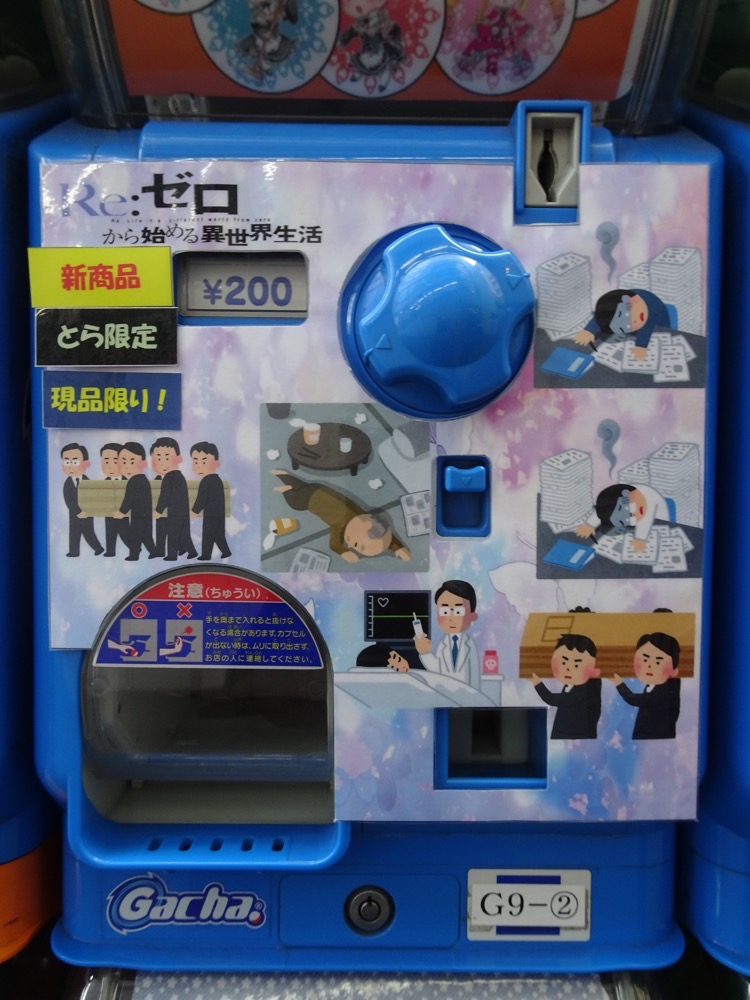 Manga stores everywhere.
Manga stores everywhere.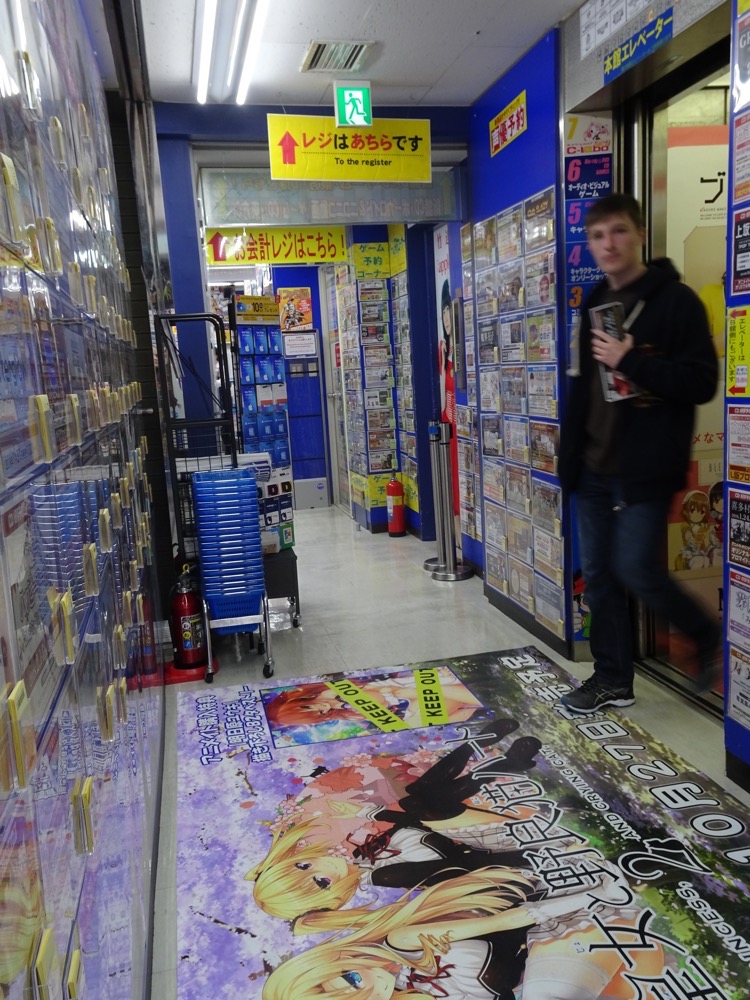 Even more floors of porn…
Even more floors of porn…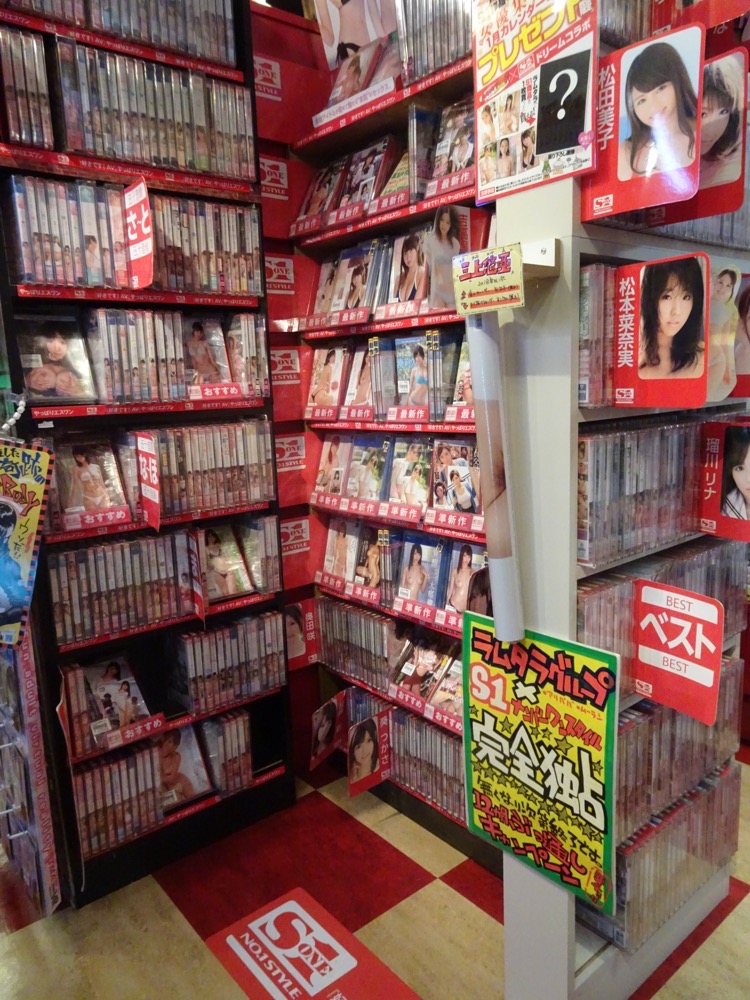
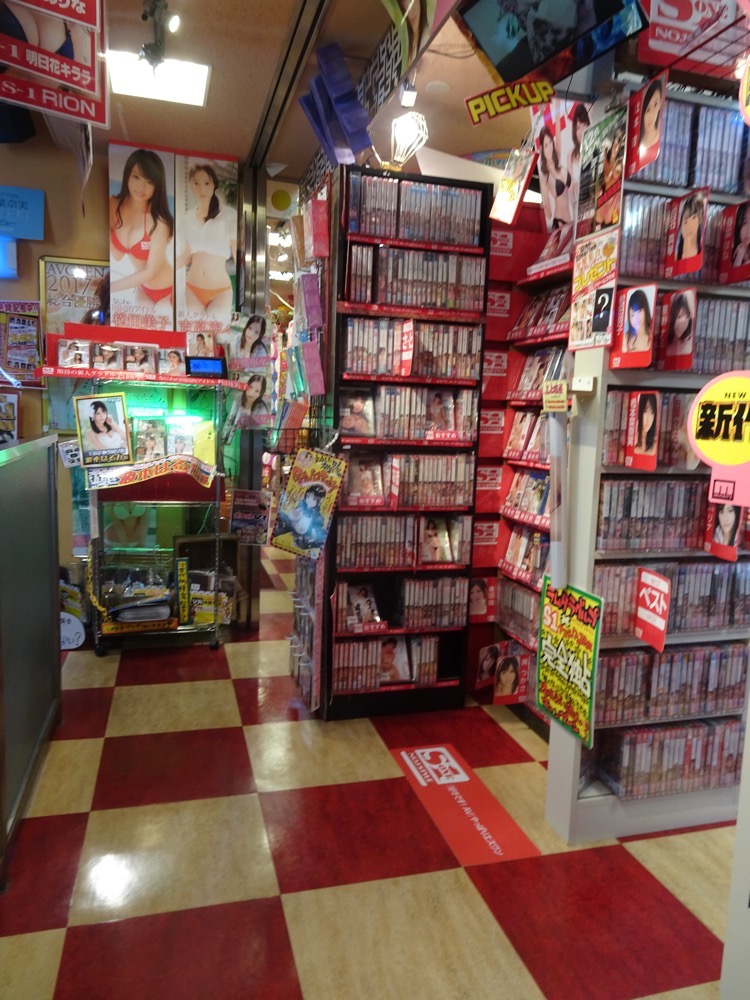 Mr K lost in the back of the porn floors… I didn’t go up, but he said, the higher up the floor the more ‘extreme’ the content gets.
Mr K lost in the back of the porn floors… I didn’t go up, but he said, the higher up the floor the more ‘extreme’ the content gets.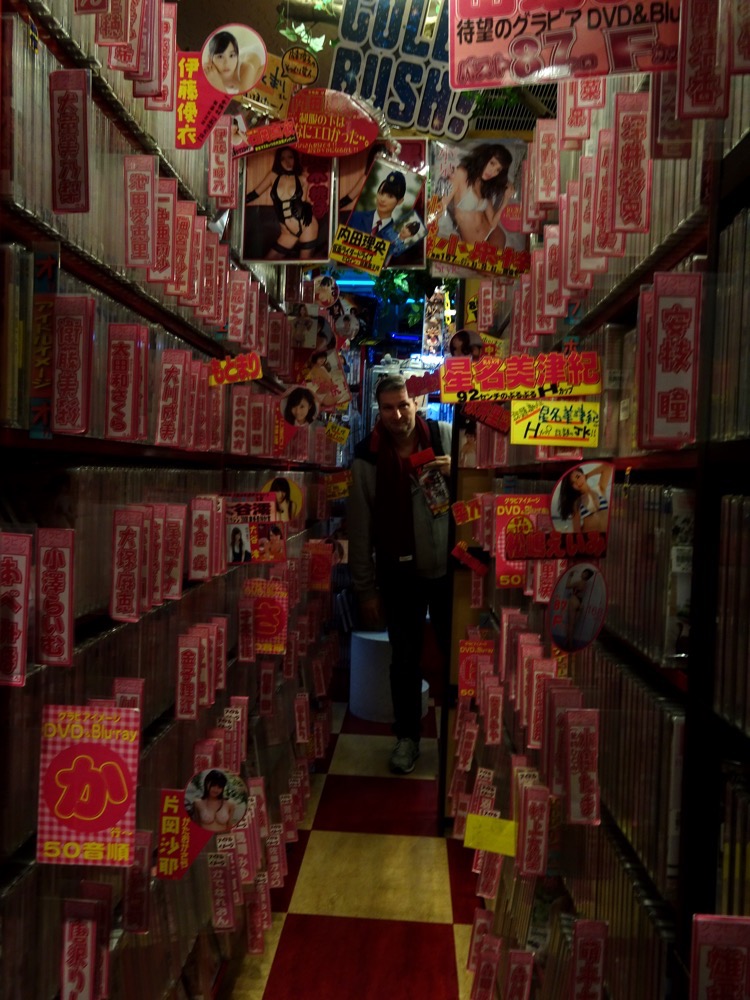 Phew after all that searching through figurines and anime and dodging the porn, we stumbled onto the Mocha Cat Cafe. Now I am not a cat person as many of you will know, but the whole concept intrigues me somewhat.. why would you pay to go hang out in a cafe full of cats?
Phew after all that searching through figurines and anime and dodging the porn, we stumbled onto the Mocha Cat Cafe. Now I am not a cat person as many of you will know, but the whole concept intrigues me somewhat.. why would you pay to go hang out in a cafe full of cats?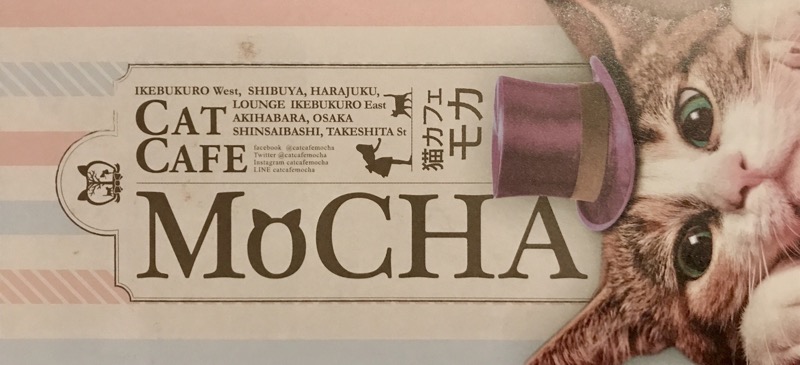
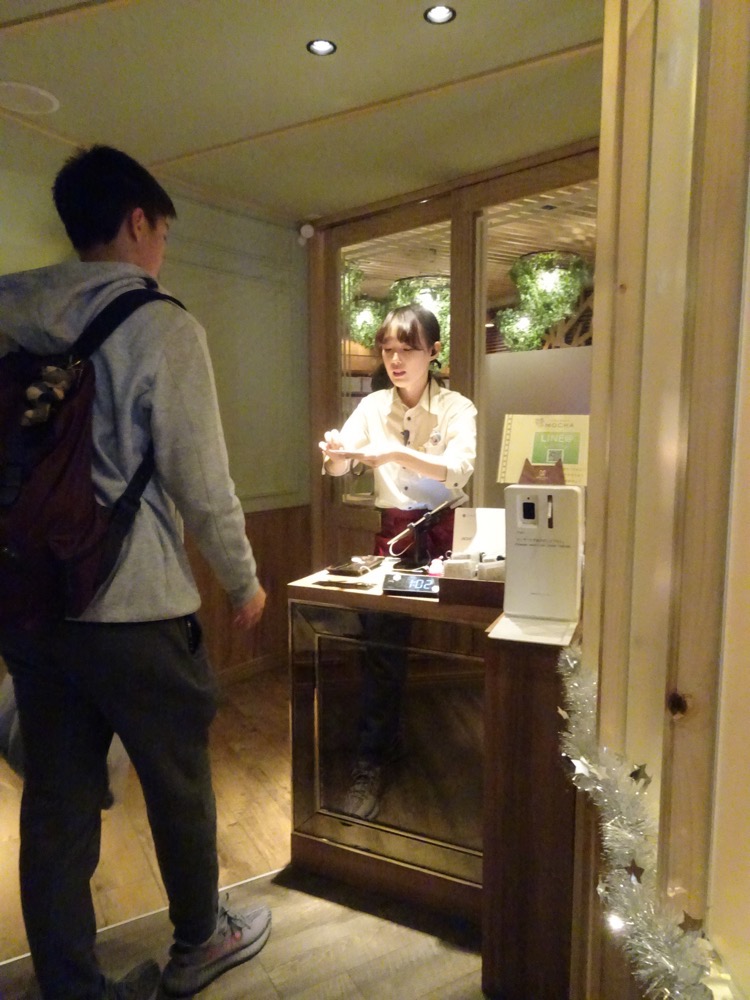 A lovely lady helped us with some hand sanitiser, slippers and of course, the Rules (rules? for being around cats?!?) and explained the cost – Y200 for every ten minutes you stay, and you must buy a refillable drink for Y350, so a minimum of Y550 per person to go in and ‘relax with cats’.
A lovely lady helped us with some hand sanitiser, slippers and of course, the Rules (rules? for being around cats?!?) and explained the cost – Y200 for every ten minutes you stay, and you must buy a refillable drink for Y350, so a minimum of Y550 per person to go in and ‘relax with cats’.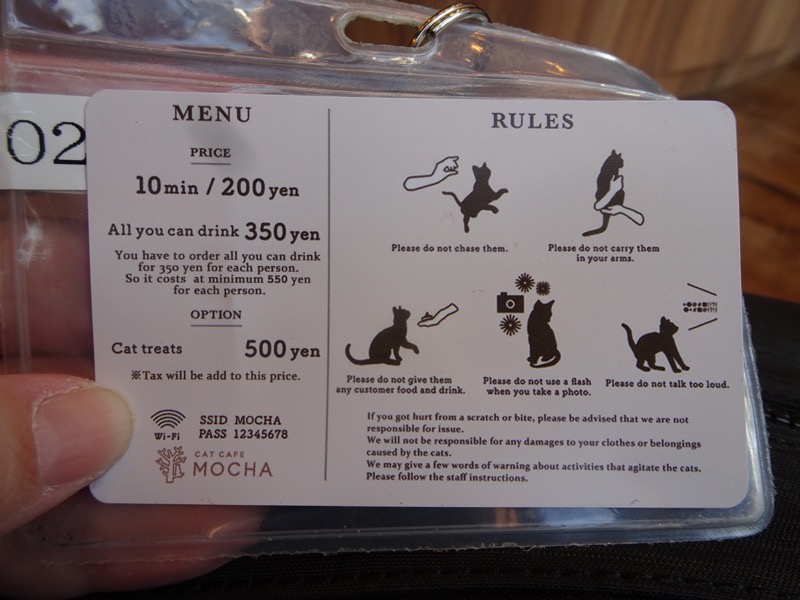 Inside was a space with a lovely decor, delighfully Japanese’d Christmas Carols playing quietly in the background and a huge anime library where you could sit down and watch some tv while you cuddle some kitties.
Inside was a space with a lovely decor, delighfully Japanese’d Christmas Carols playing quietly in the background and a huge anime library where you could sit down and watch some tv while you cuddle some kitties.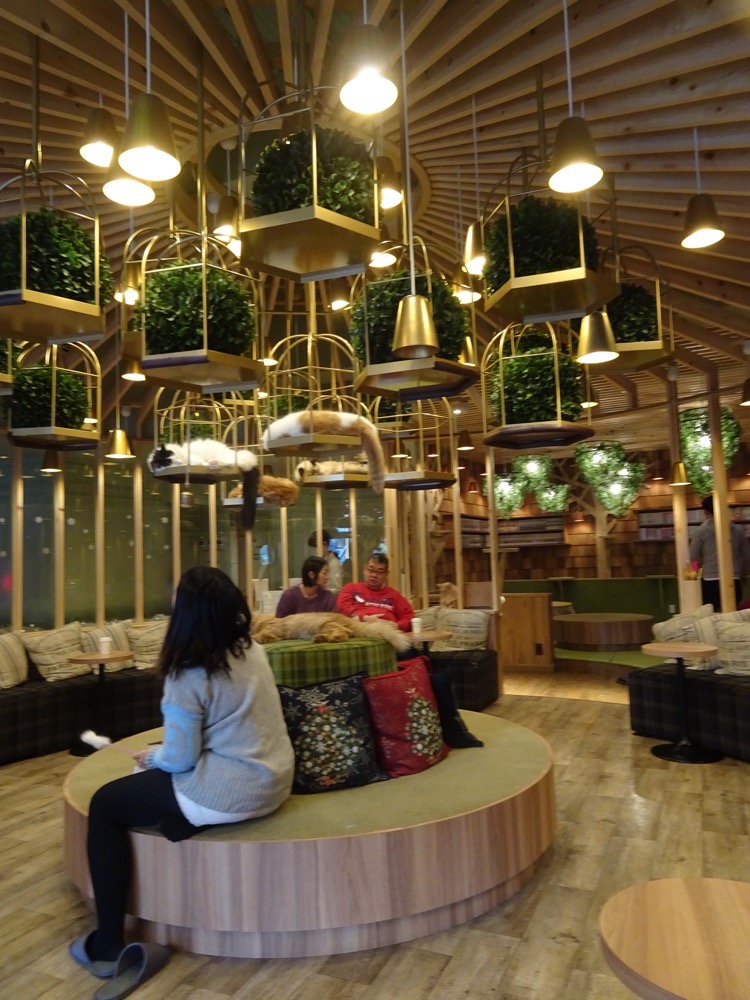 The anime library – with a huge selection, no doubt designed to keep you in the kitty cafe as long as possible.
The anime library – with a huge selection, no doubt designed to keep you in the kitty cafe as long as possible.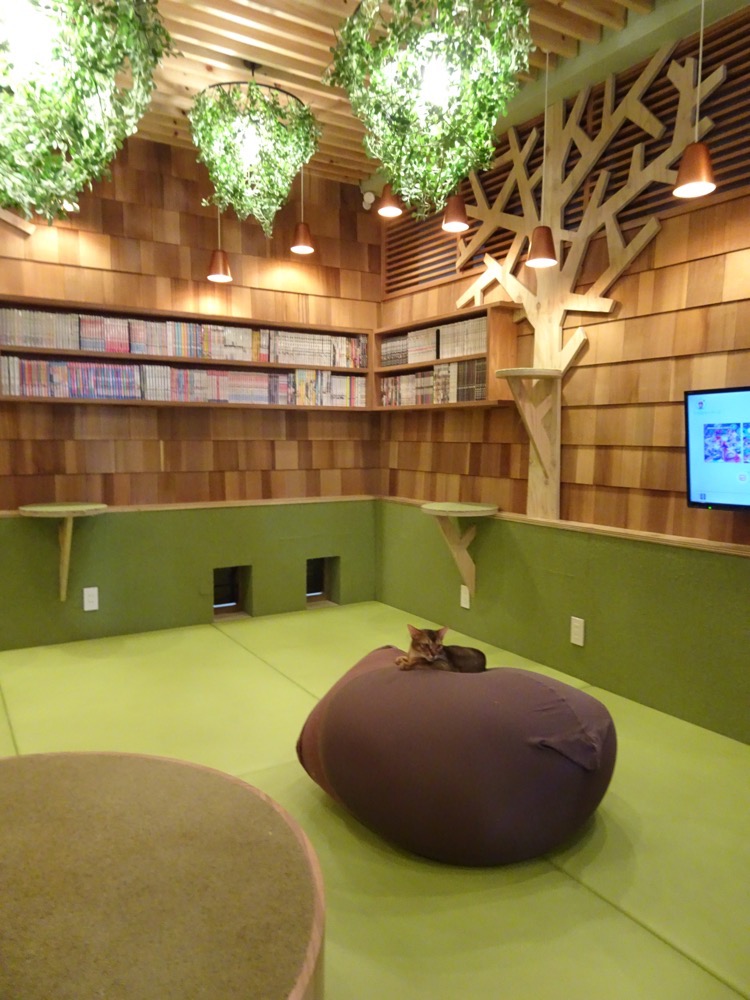 Cats chillin in their weird little hanging birdcage things… very well fed cats btw. You can feed the cats for an additional Y500.
Cats chillin in their weird little hanging birdcage things… very well fed cats btw. You can feed the cats for an additional Y500.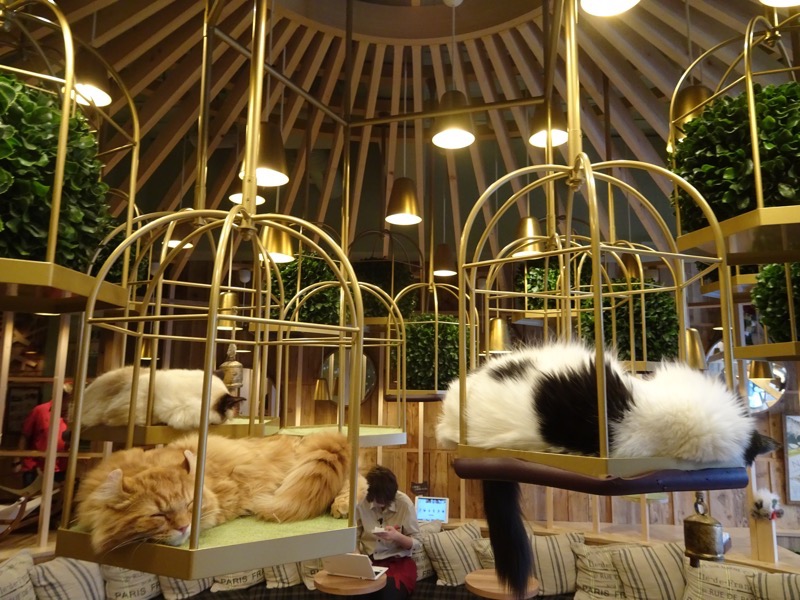
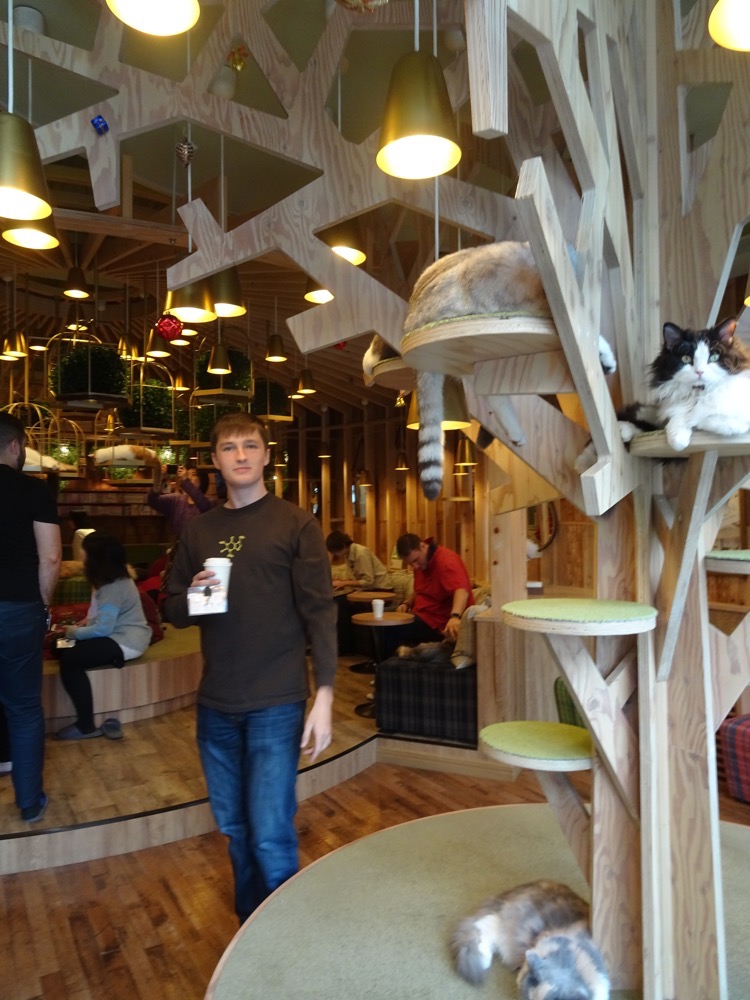
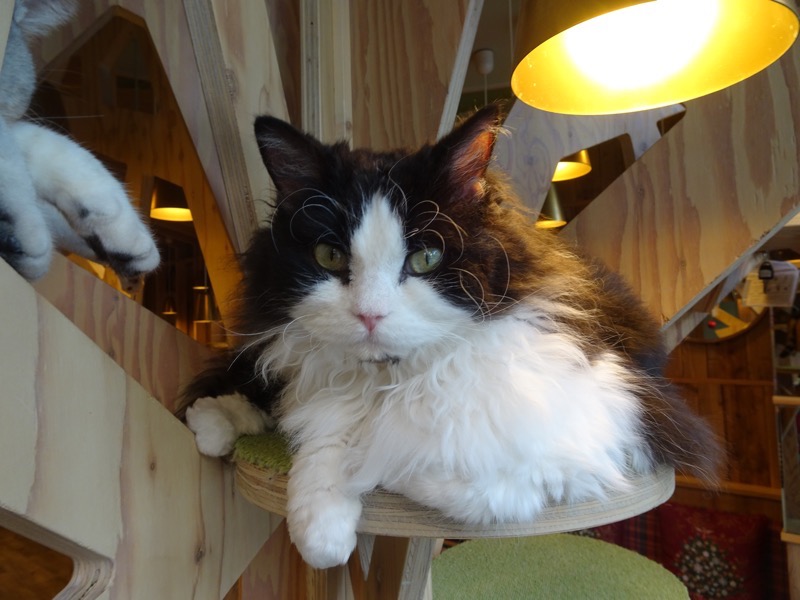
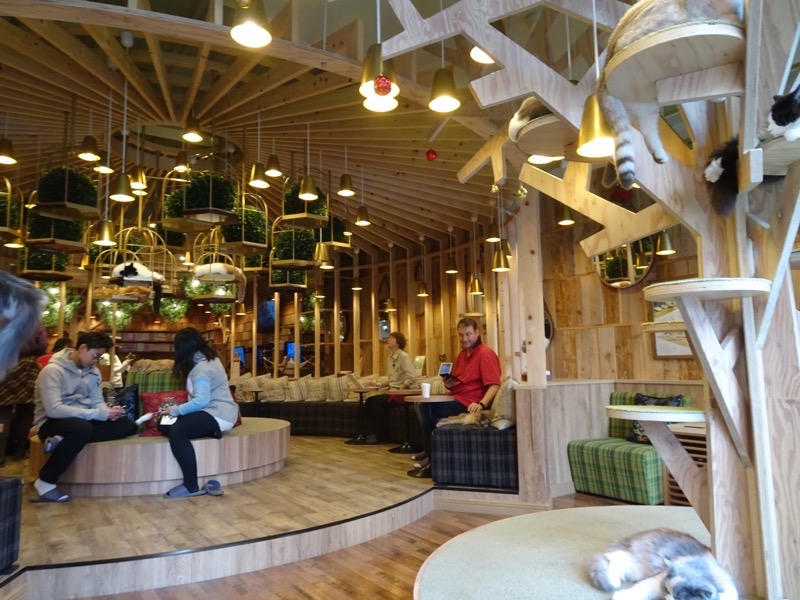
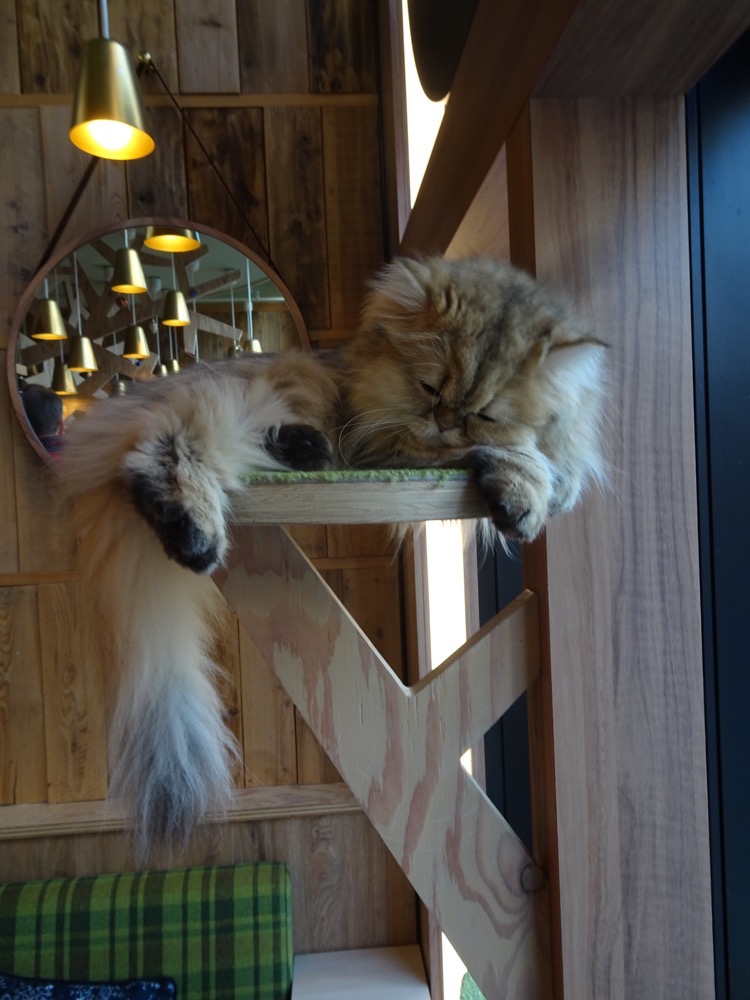 For 1pm on a Wednesday, it was amazing well patronised. There were quite a few people there, even one lady on her laptop who had obviously settled in for quite a while to get some work done.
For 1pm on a Wednesday, it was amazing well patronised. There were quite a few people there, even one lady on her laptop who had obviously settled in for quite a while to get some work done.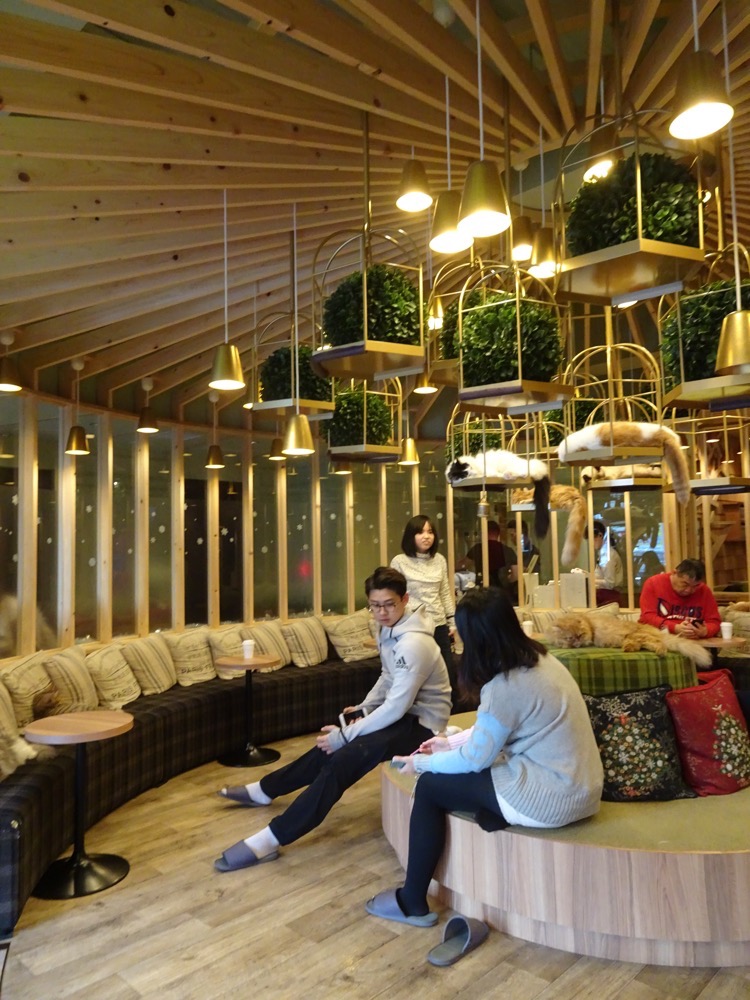
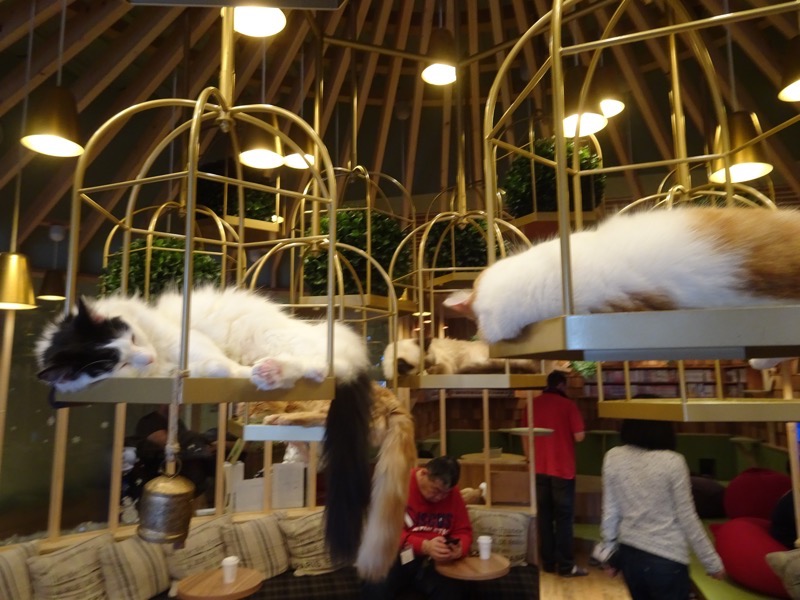 After, oh I’d say about eight and a half minutes of quality looking-at-cats time (Nope – didn’t pet any, me and cats, meh), we went looking for somewhere for some cheap and cheerful brlunch. It was pretty cold today so we went looking for some small Japanese curry bowls which we thought would fill the bill given we were planning a very late dinner tonight.
After, oh I’d say about eight and a half minutes of quality looking-at-cats time (Nope – didn’t pet any, me and cats, meh), we went looking for somewhere for some cheap and cheerful brlunch. It was pretty cold today so we went looking for some small Japanese curry bowls which we thought would fill the bill given we were planning a very late dinner tonight. 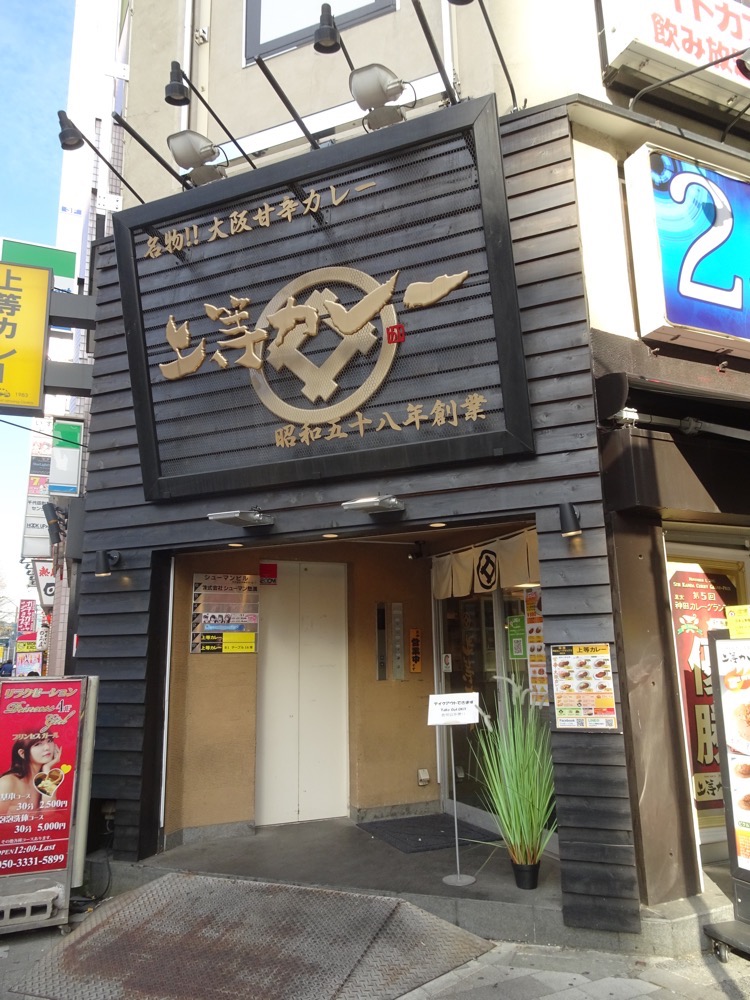 We came across this place down the road from the cat cafe that looked perfect – nothing on the menu but curry. So in we went. From the pictures on the menu, portions looked perfect for lunch and it was chicken, pork or prawn curry… order your curry and biru from the little machine and go take a seat.
We came across this place down the road from the cat cafe that looked perfect – nothing on the menu but curry. So in we went. From the pictures on the menu, portions looked perfect for lunch and it was chicken, pork or prawn curry… order your curry and biru from the little machine and go take a seat.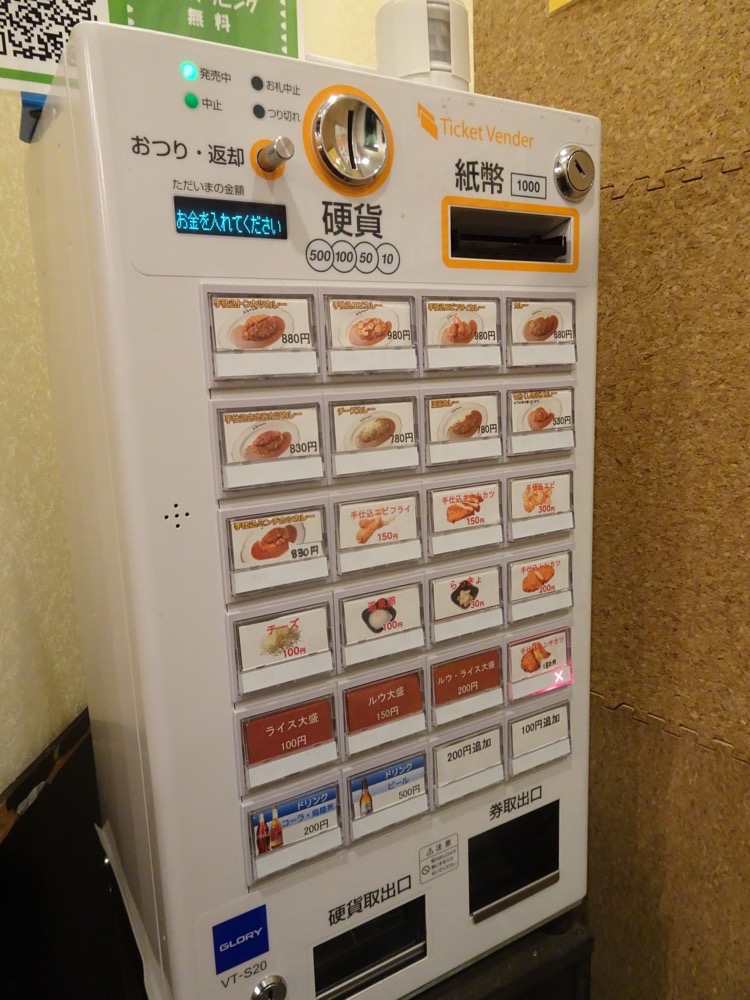 We were right about this being a great curry restaurant but not so much on the polite portion sizes. We got huge plates of curry, which I have to admit did not look so appetitisng… but once you tried it, absolutely delicious. Probably the best katsu curry I have ever had.
We were right about this being a great curry restaurant but not so much on the polite portion sizes. We got huge plates of curry, which I have to admit did not look so appetitisng… but once you tried it, absolutely delicious. Probably the best katsu curry I have ever had. 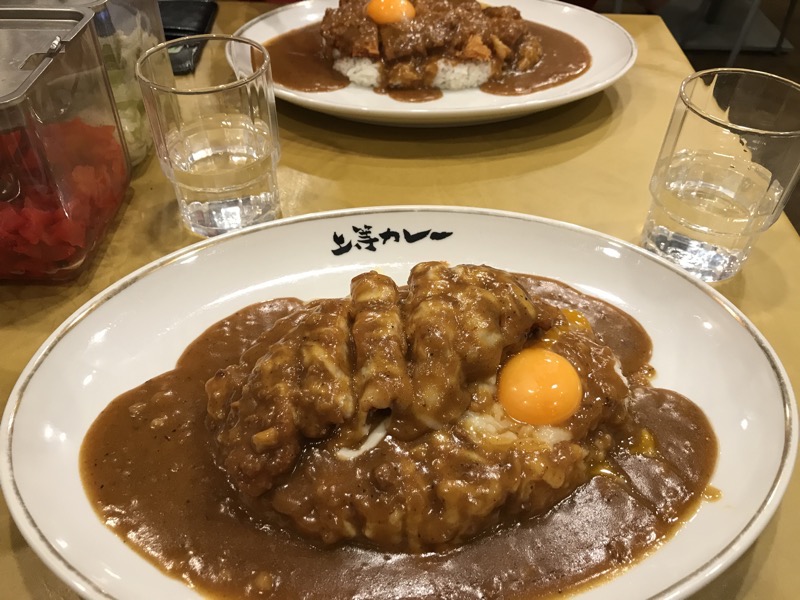 The Teenager was very happy with his wash, probably the first meal we’ve had that filled him up!
The Teenager was very happy with his wash, probably the first meal we’ve had that filled him up! After I was waiting outside and found out from the signs that this place has prize winning curry in 2015 for some big curry conference/competition – so no wonder it was good. I have no idea what the place was called though. Couldn’t fathom it for love or money.
After I was waiting outside and found out from the signs that this place has prize winning curry in 2015 for some big curry conference/competition – so no wonder it was good. I have no idea what the place was called though. Couldn’t fathom it for love or money.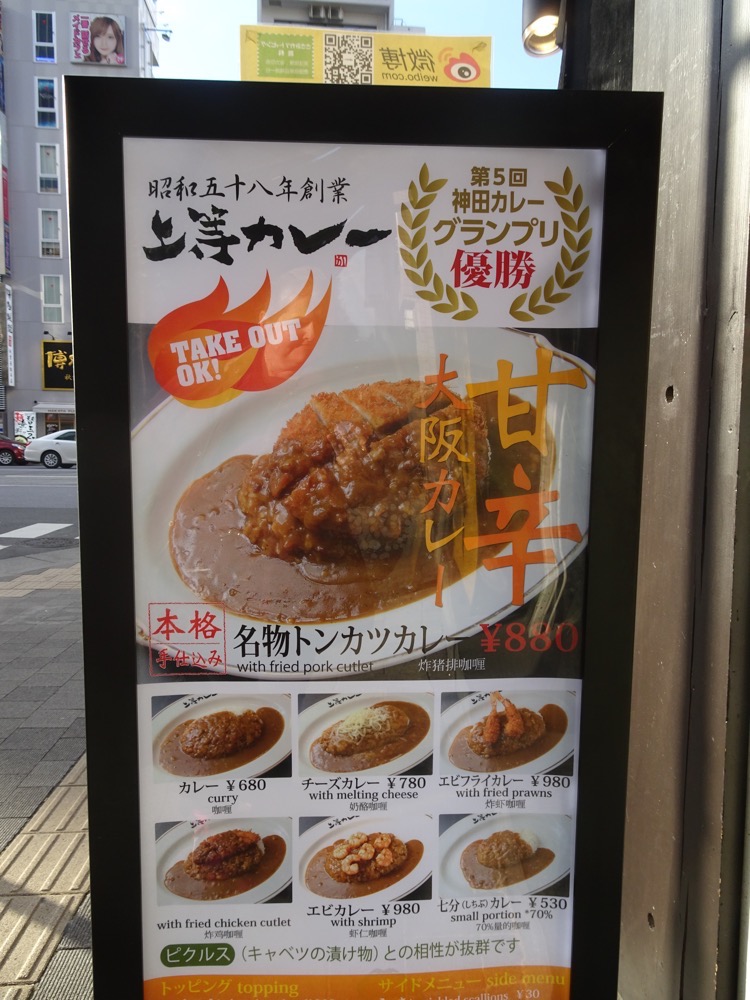 After lunch, we went for a wander into Shibuya, just because we could – to do a bit of shopping and have a look around.
After lunch, we went for a wander into Shibuya, just because we could – to do a bit of shopping and have a look around.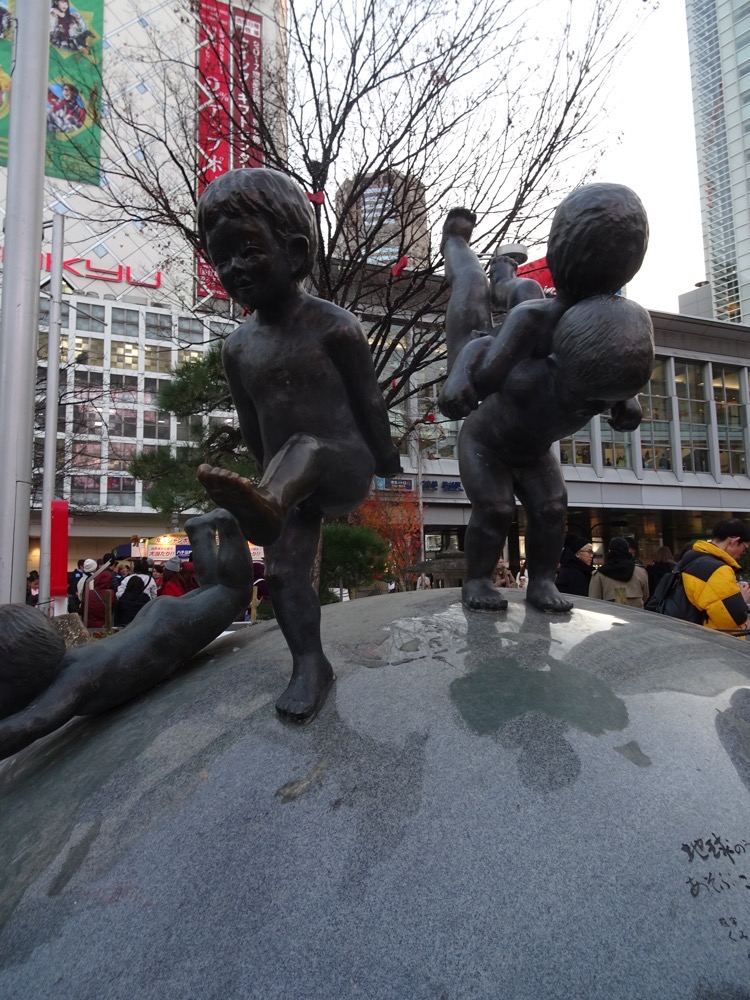
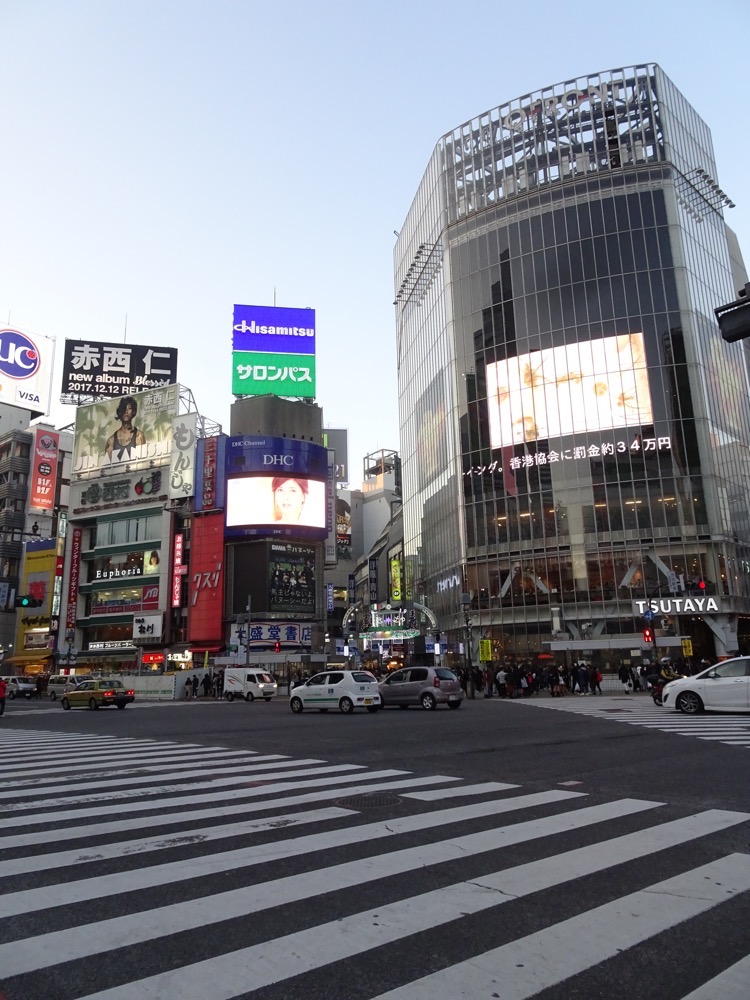
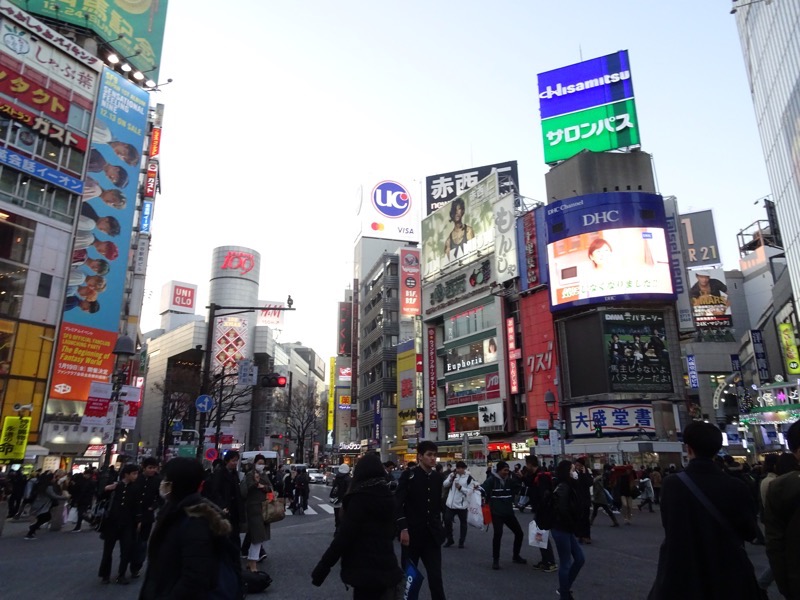
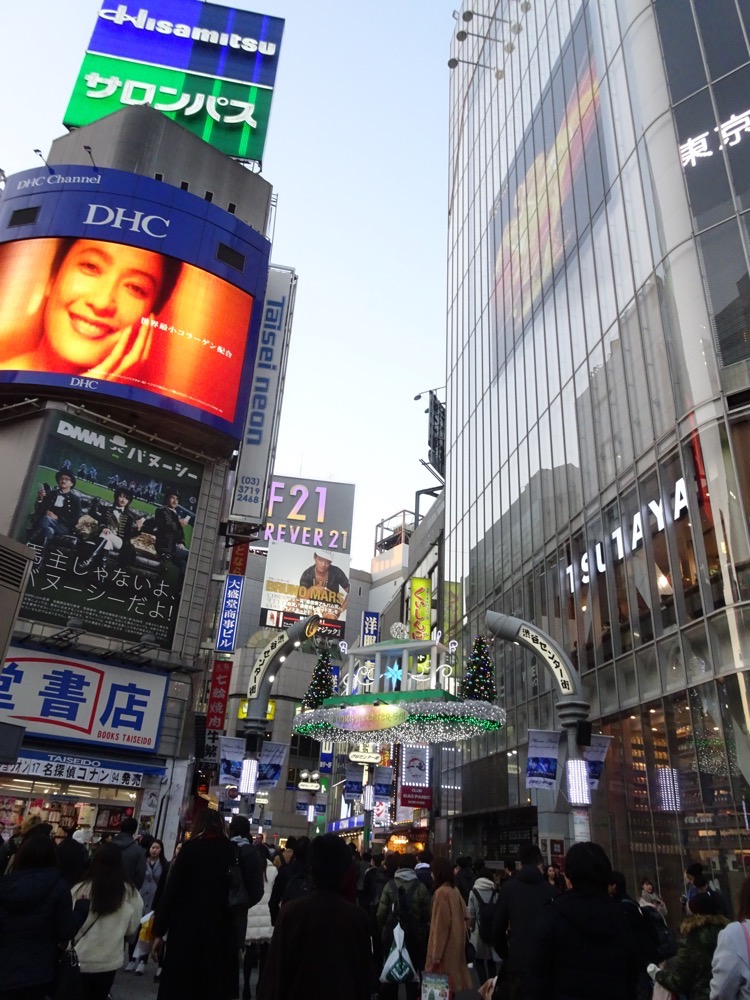 Oddly, this slick black store is a Disney Store… and no, I didn’t go in. The retail pain of working the Disney Store over Christmas is still altogether too raw.
Oddly, this slick black store is a Disney Store… and no, I didn’t go in. The retail pain of working the Disney Store over Christmas is still altogether too raw.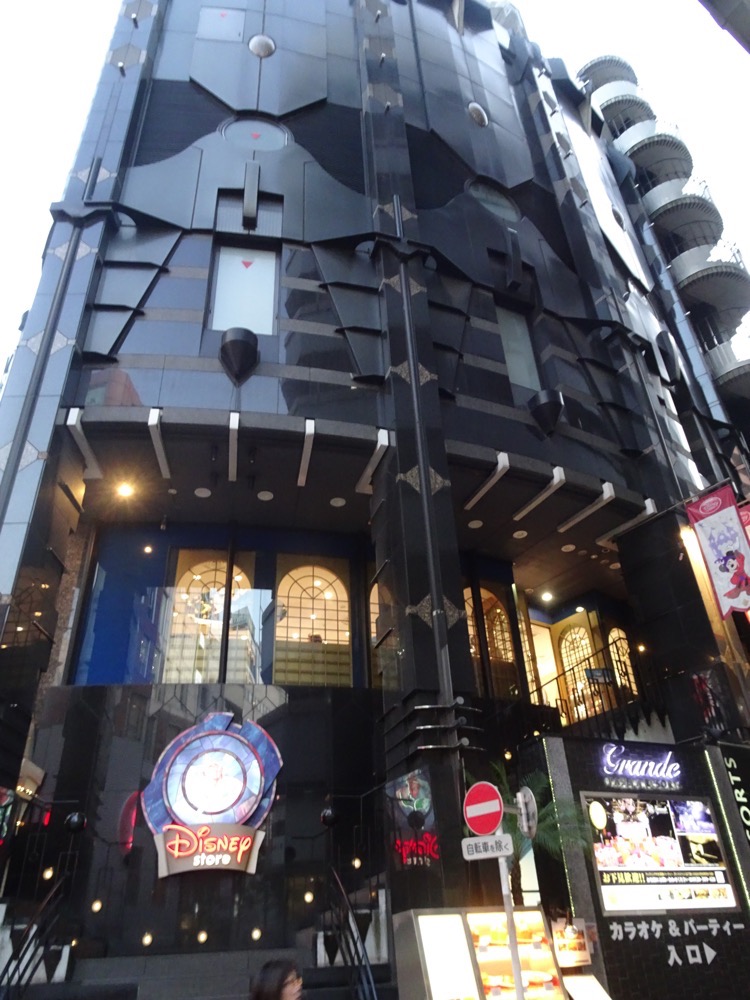 Then it was back to Shinjuku for our booking at the Robot Restaurant. When we were in Tokyo two years ago, we had booked tickets to take the then, Small Child, to go see the Robot Restaurant as we thought it would be quite the spectacle for a kid. Unhappily at the time, it was closed for renovations the week we were here. Now, we come back and I thought he’d be over it, but unhappily he still wanted to go. So we duly went and bought tickets.
Then it was back to Shinjuku for our booking at the Robot Restaurant. When we were in Tokyo two years ago, we had booked tickets to take the then, Small Child, to go see the Robot Restaurant as we thought it would be quite the spectacle for a kid. Unhappily at the time, it was closed for renovations the week we were here. Now, we come back and I thought he’d be over it, but unhappily he still wanted to go. So we duly went and bought tickets.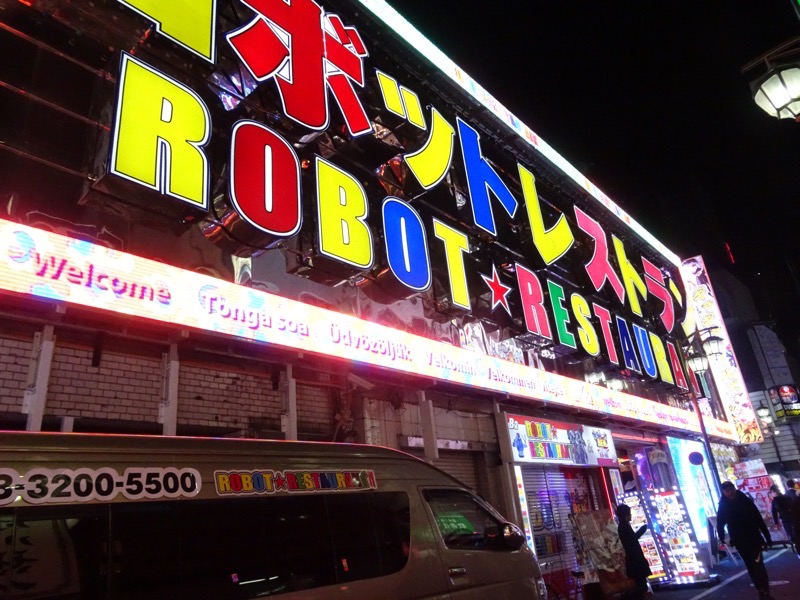
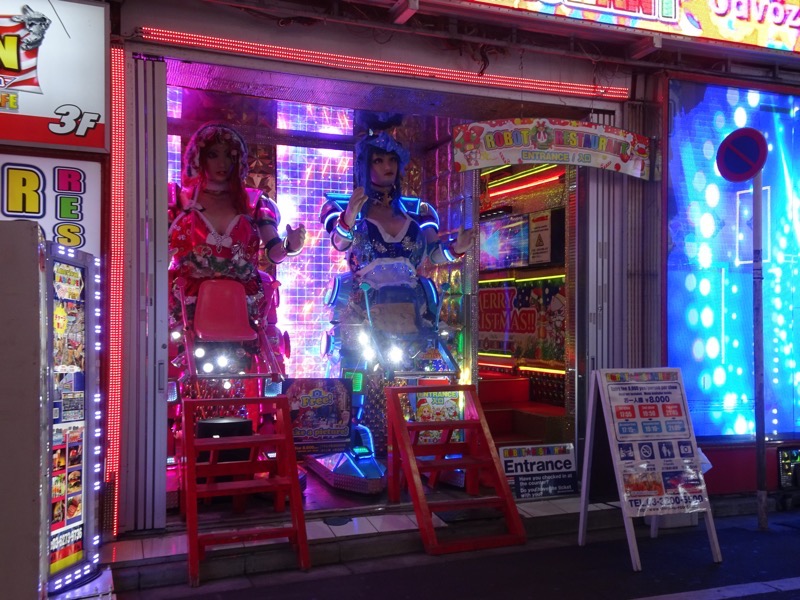 Right from the front door you get an inkling of what you are in for – more glitter, sequins, neon and mosaic mirror tiles per square inch than you would have thought humanly possible.
Right from the front door you get an inkling of what you are in for – more glitter, sequins, neon and mosaic mirror tiles per square inch than you would have thought humanly possible.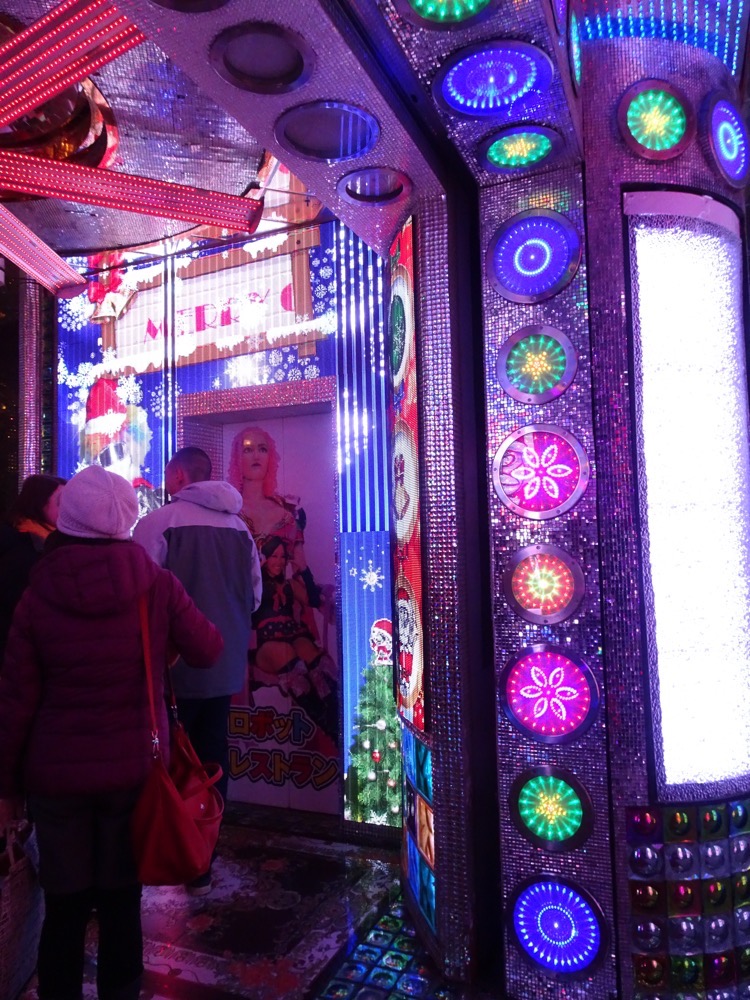 We were then welcomed into the Guest Waiting Room whereupon it took my eyes a full ten minutes to recover from the visual assault on the senses. It’s like Versace and Las-Vegas-Fat-Elvis had a litter of tattooed, vajazzled love children, and they vomited all over the place in here.
We were then welcomed into the Guest Waiting Room whereupon it took my eyes a full ten minutes to recover from the visual assault on the senses. It’s like Versace and Las-Vegas-Fat-Elvis had a litter of tattooed, vajazzled love children, and they vomited all over the place in here.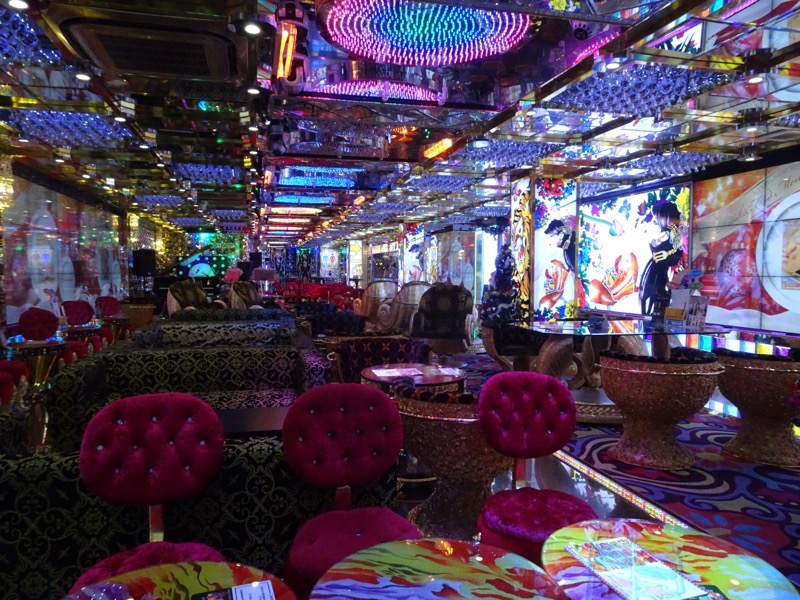 This is his, ‘somewhat overwhelmed but trying to be blase about it look’. 😉
This is his, ‘somewhat overwhelmed but trying to be blase about it look’. 😉 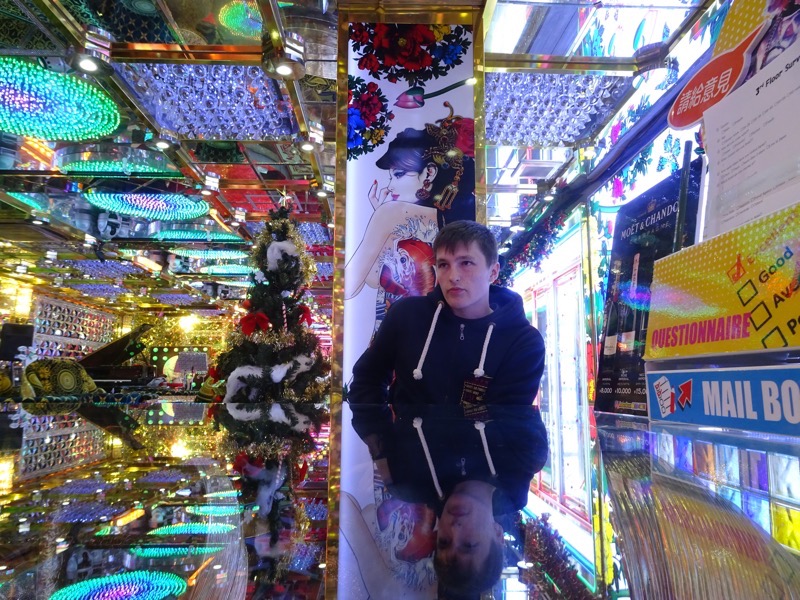 Neon ceilings floors and walls, golden seashell glass-topped tables, gilded rose embossed chairs, massive tv screens and oh, so so many mirrors just on every surface.
Neon ceilings floors and walls, golden seashell glass-topped tables, gilded rose embossed chairs, massive tv screens and oh, so so many mirrors just on every surface.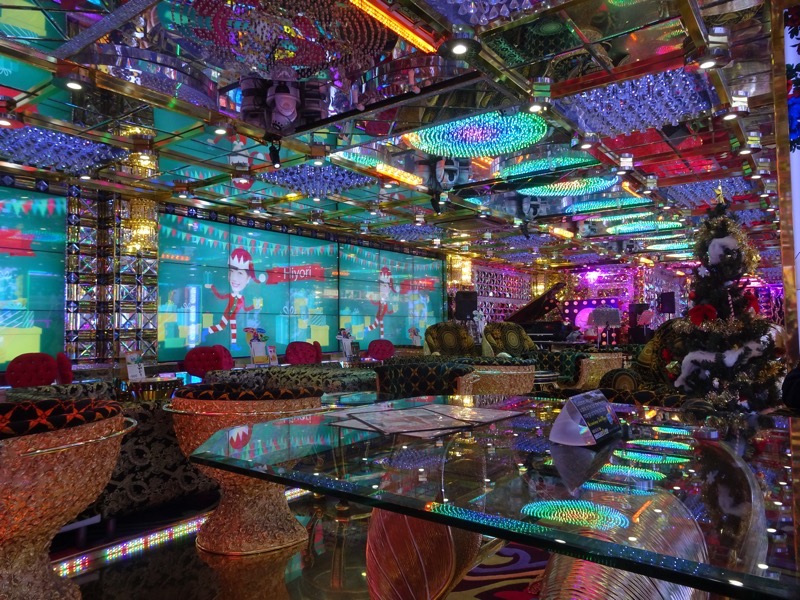 Even the bathroom was a sight to sore the eyes.
Even the bathroom was a sight to sore the eyes.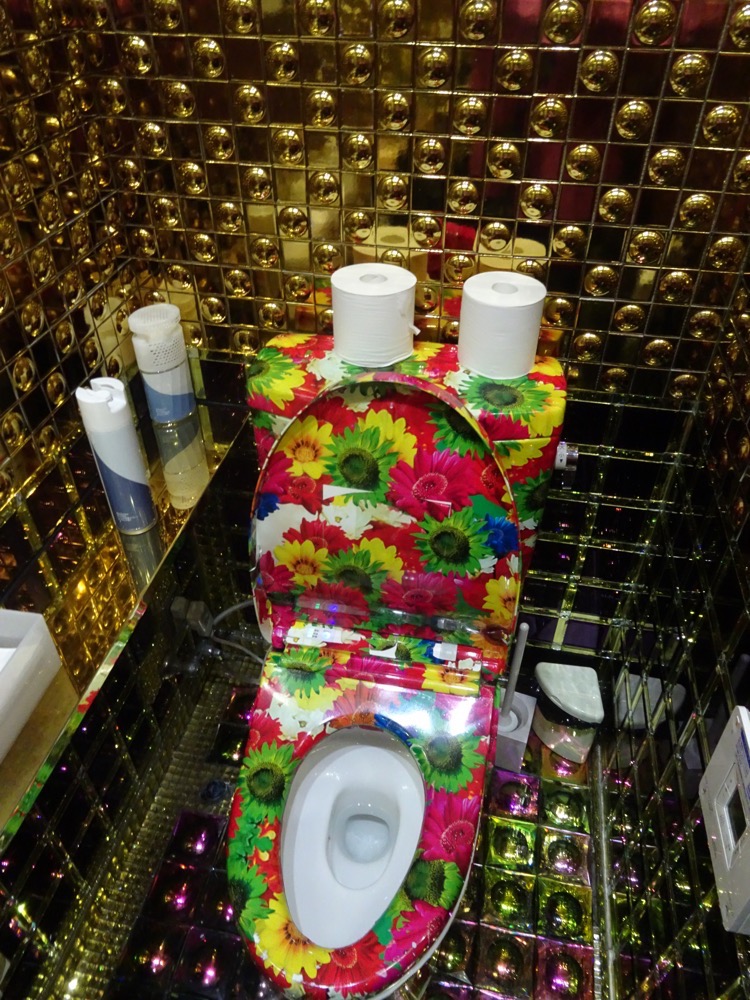 Then the bell went and it was time to descend into the basement of the building for the show itself. We were treated to quite a few Christmas Carols in the waiting area while we sipped on our freebie sake (which tasted nothing like sake…?) and I was getting concerned that we may actually have been stuck with an entire Christmas themed show… I definitely would NOT have signed up to sit through that.
Then the bell went and it was time to descend into the basement of the building for the show itself. We were treated to quite a few Christmas Carols in the waiting area while we sipped on our freebie sake (which tasted nothing like sake…?) and I was getting concerned that we may actually have been stuck with an entire Christmas themed show… I definitely would NOT have signed up to sit through that.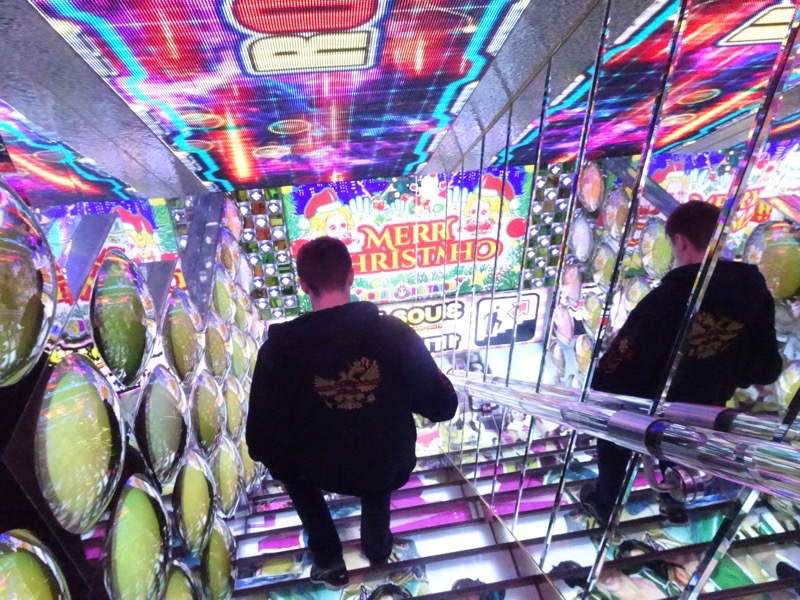 Upon being shown to our seats – the first thing wheeled in front of us? The souvenir cart swiftly followed by a drinks cart. Then it was a few safety rules (keep your hands in, don’t touch the robots, no flash photography) and it would soon be on with the show.
Upon being shown to our seats – the first thing wheeled in front of us? The souvenir cart swiftly followed by a drinks cart. Then it was a few safety rules (keep your hands in, don’t touch the robots, no flash photography) and it would soon be on with the show. 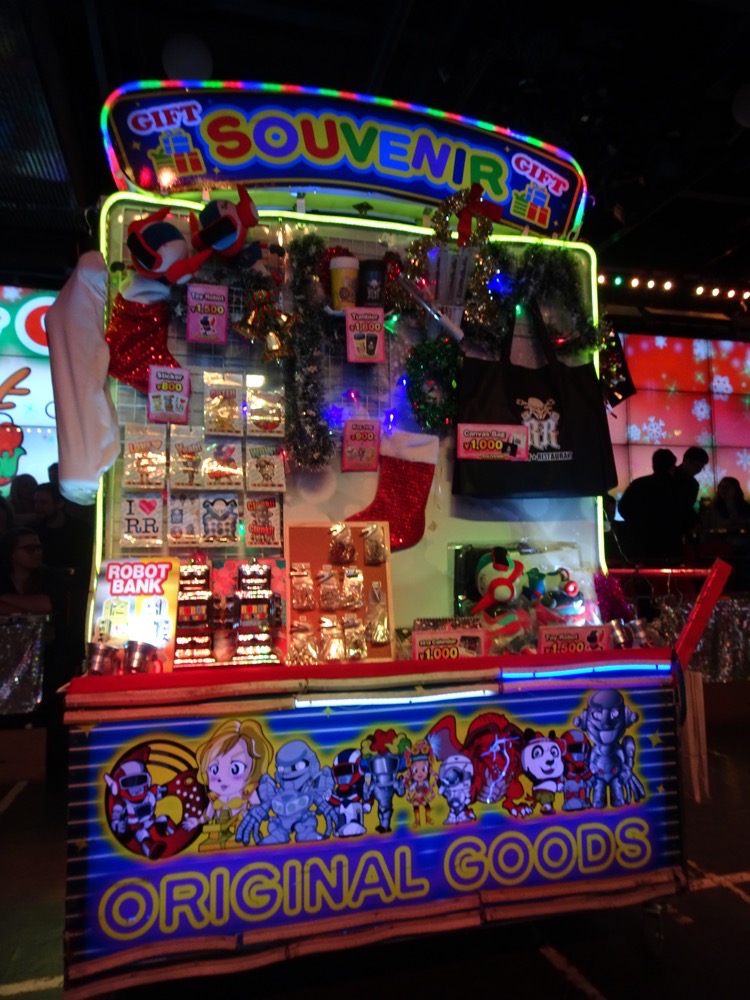
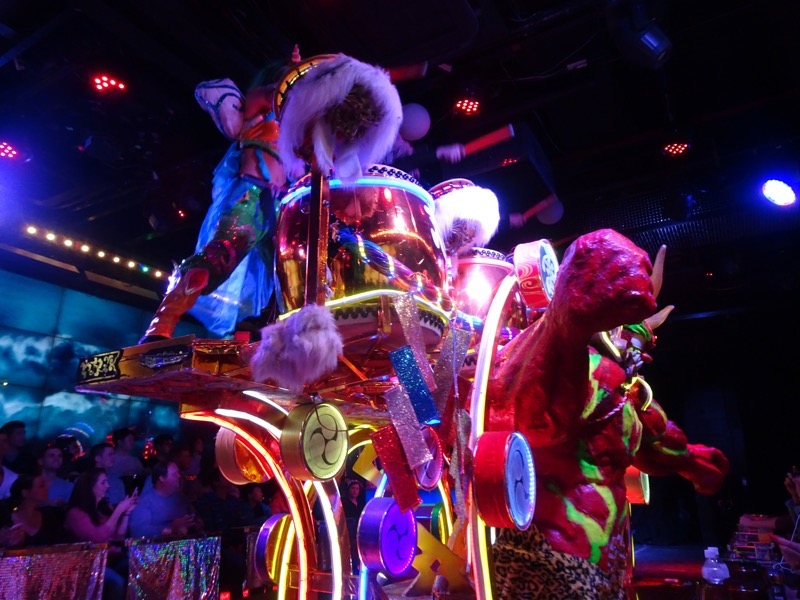
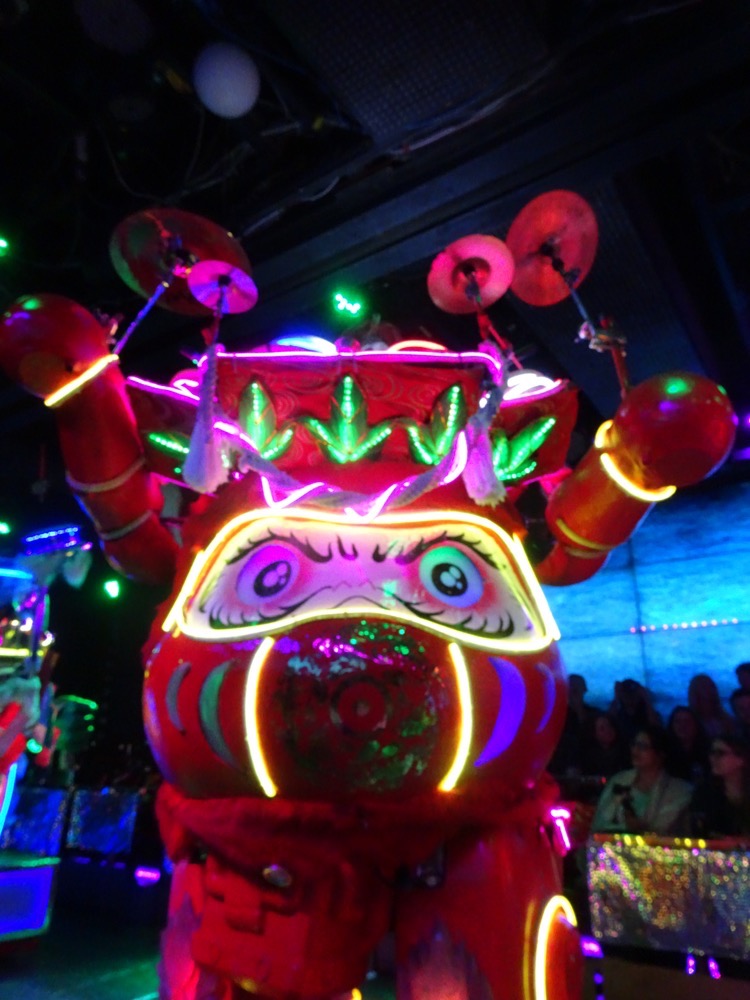
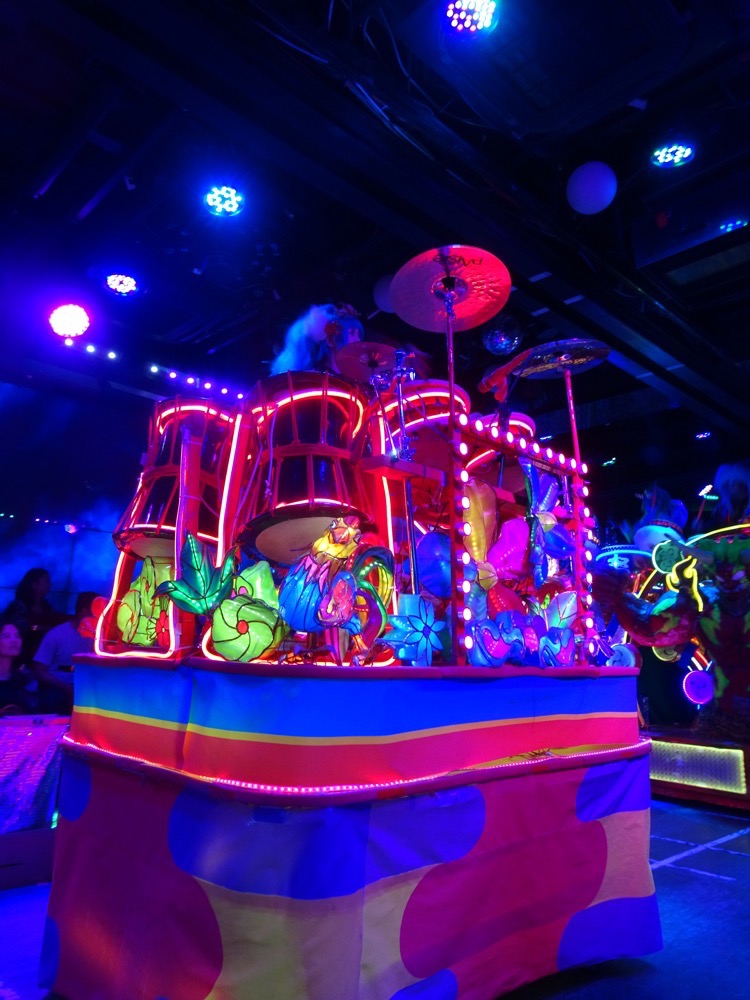
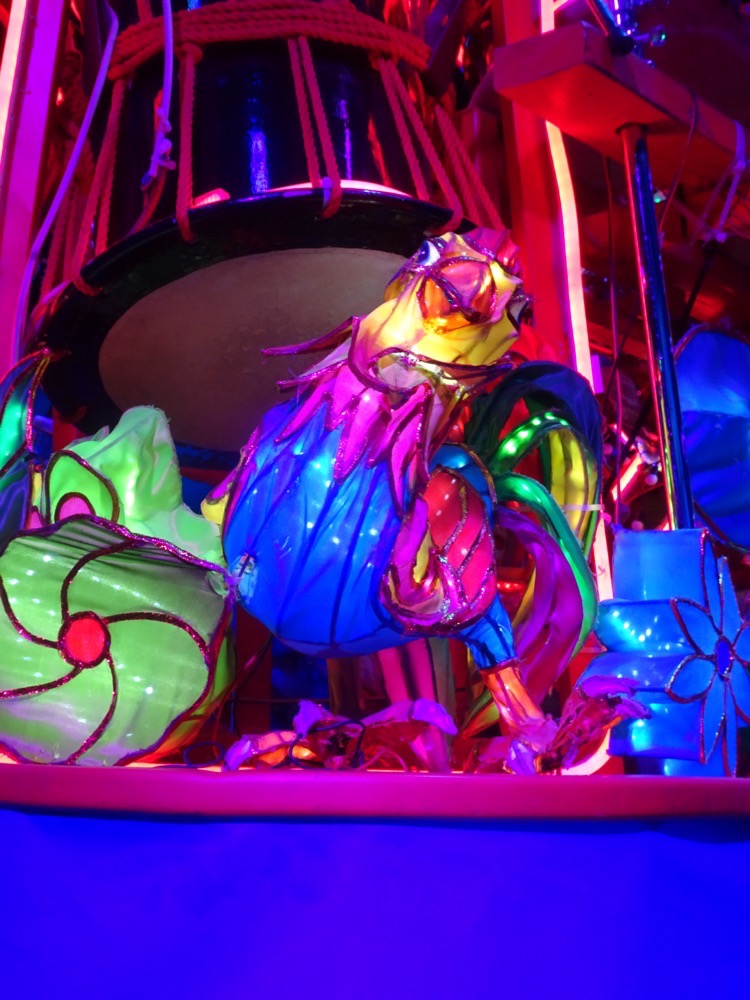
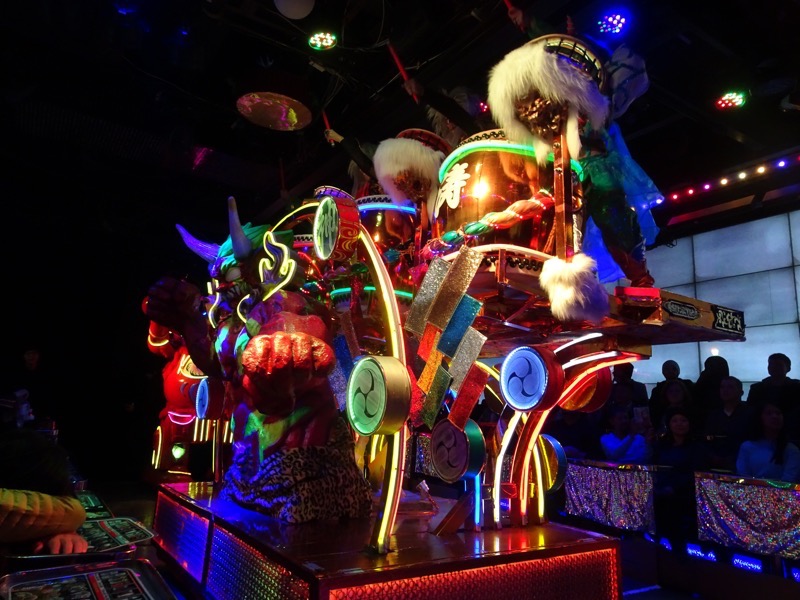

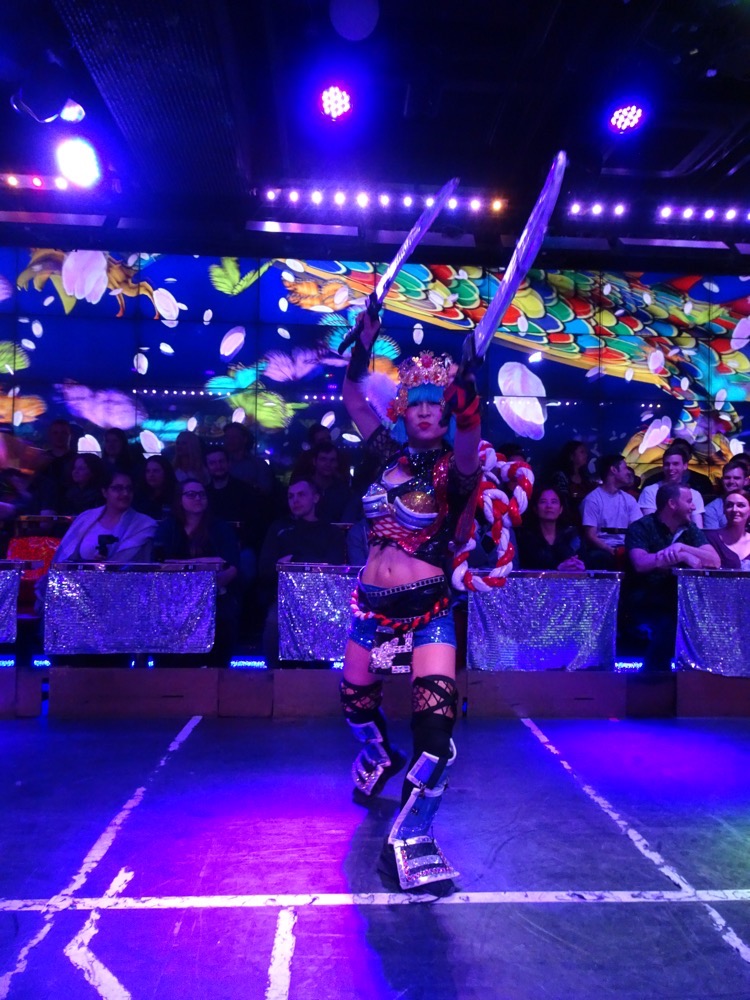
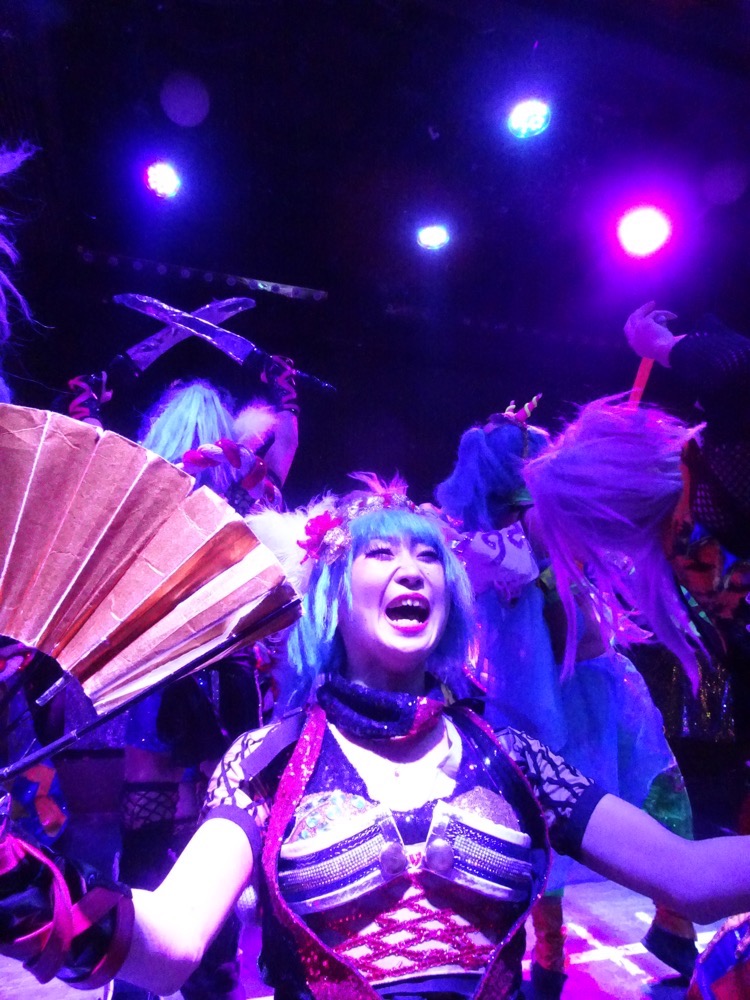
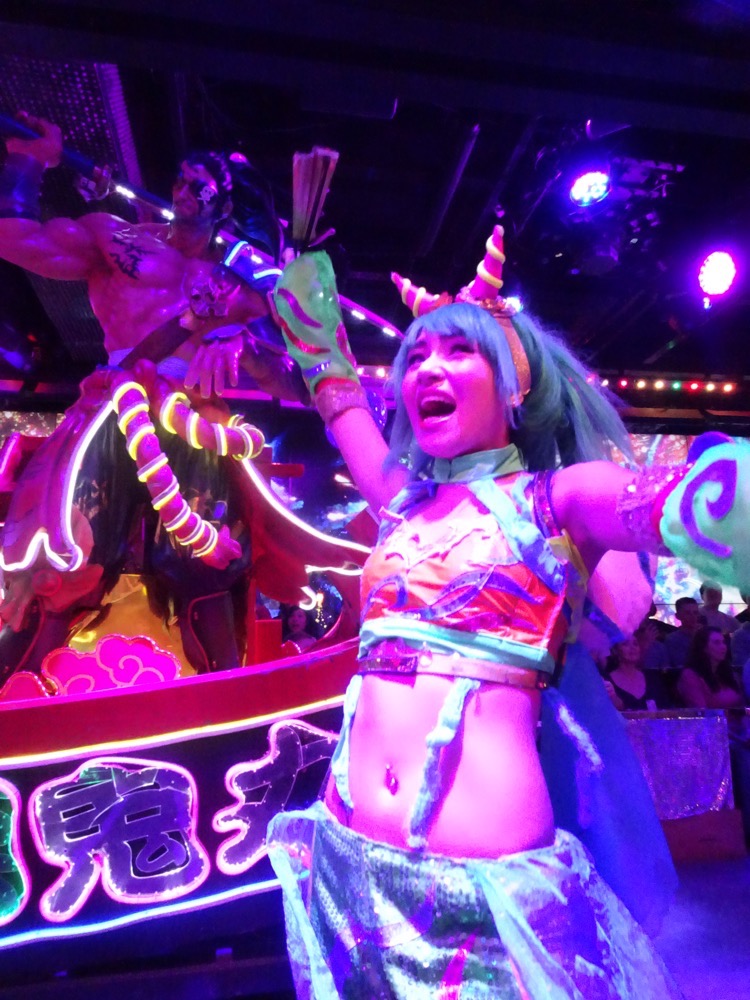
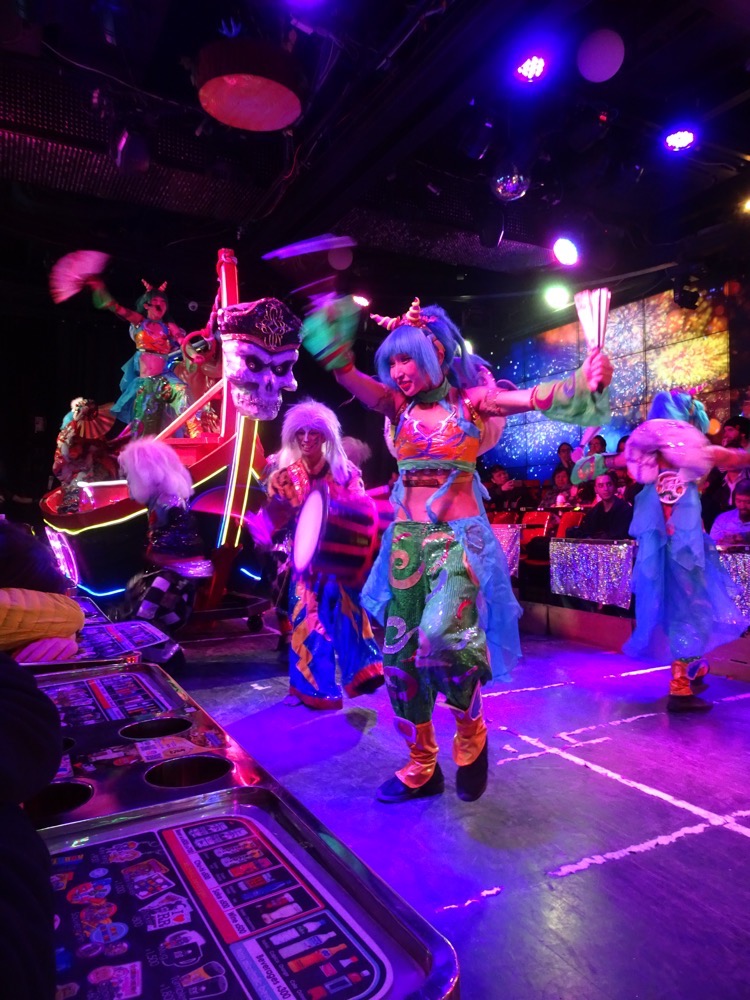
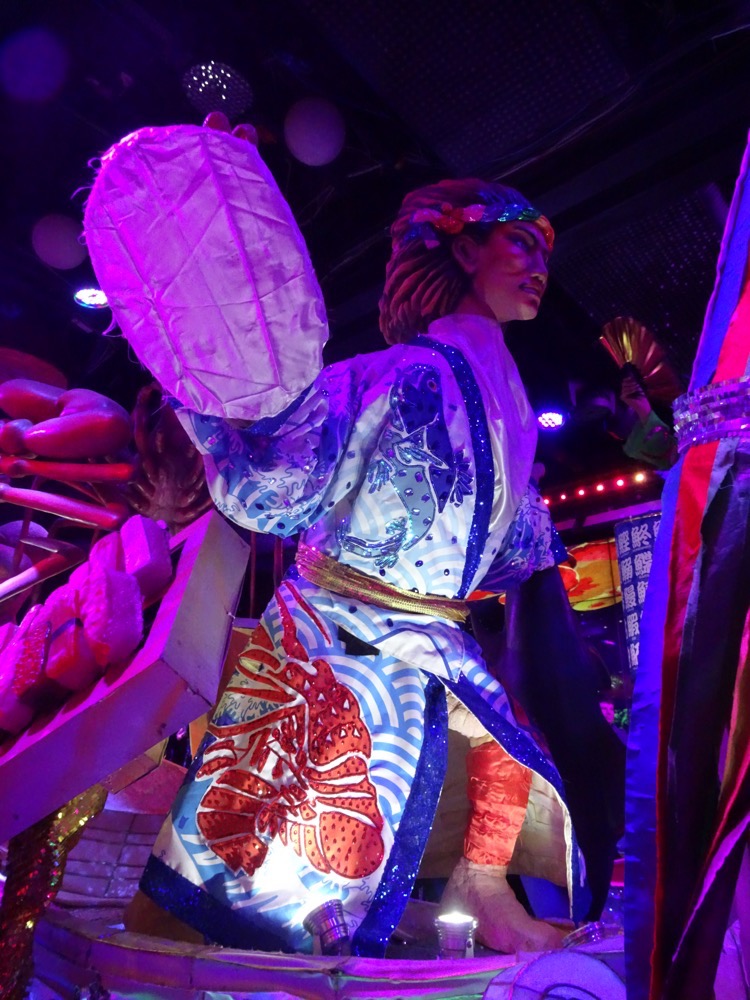
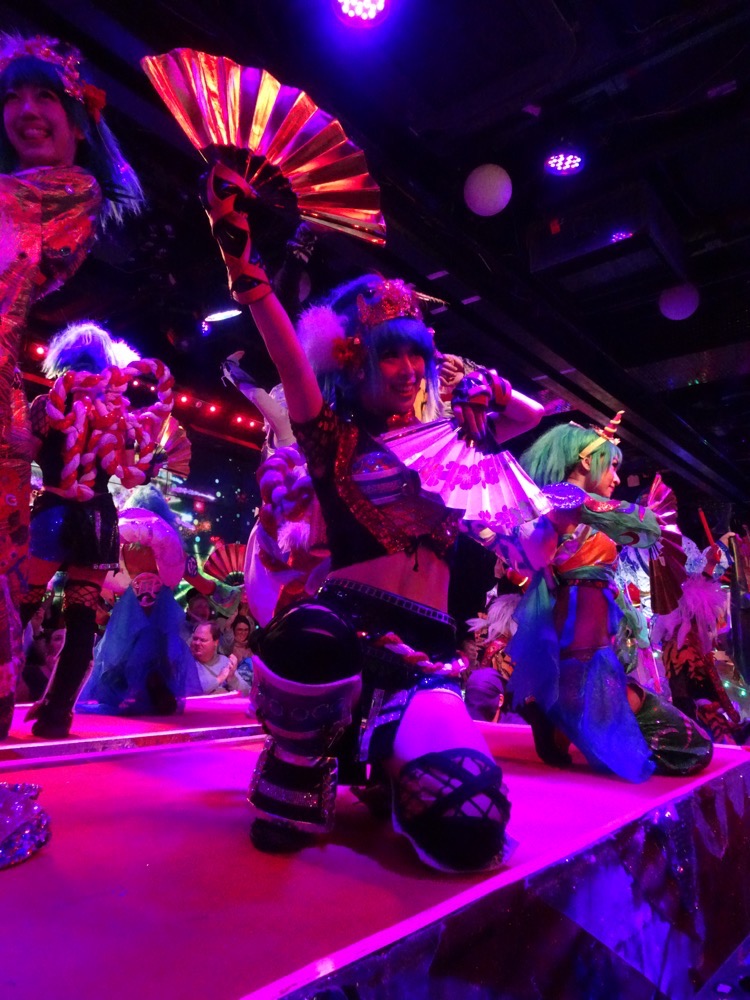 We then had a fifteen-minute interval where, you guessed it, they tried to sell us more souvenirs and drinks. 🙂 The next vignette appeared to have some sort of post-apocalyptic theme running through it – robots had taken over the earth but the humans were fighting back or some such. It was all a bit obscure, to be honest, and passed in a blur of lights and loud noises.
We then had a fifteen-minute interval where, you guessed it, they tried to sell us more souvenirs and drinks. 🙂 The next vignette appeared to have some sort of post-apocalyptic theme running through it – robots had taken over the earth but the humans were fighting back or some such. It was all a bit obscure, to be honest, and passed in a blur of lights and loud noises.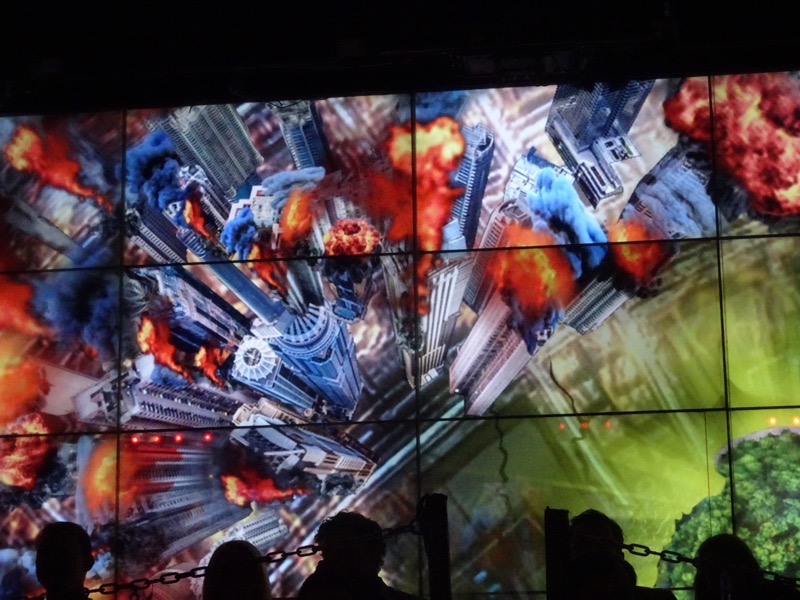
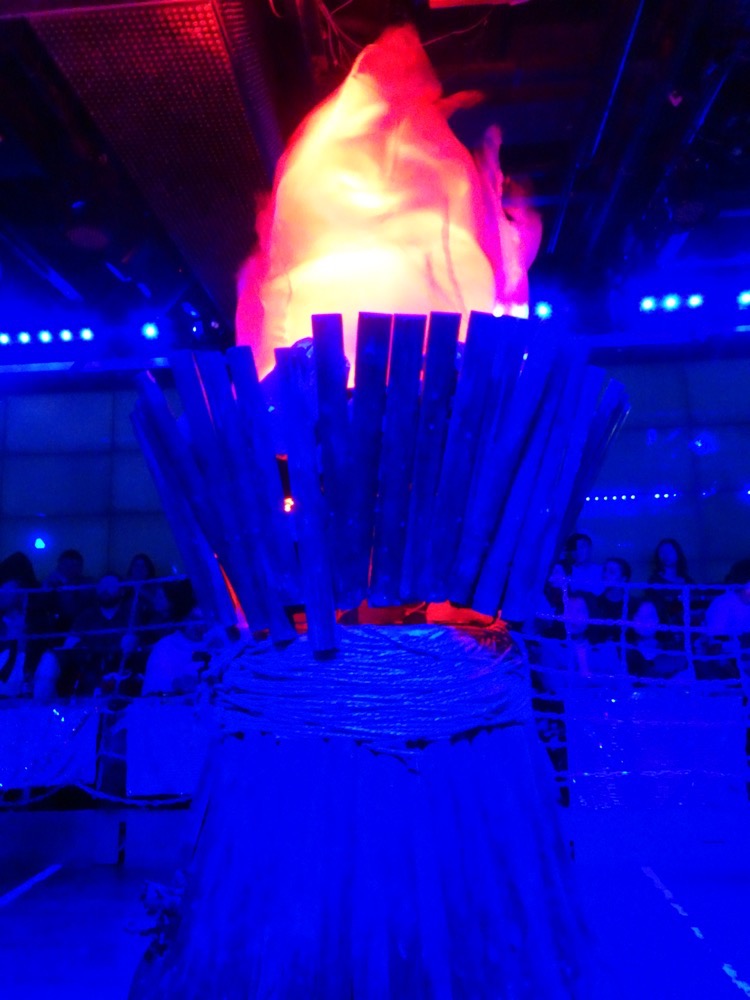
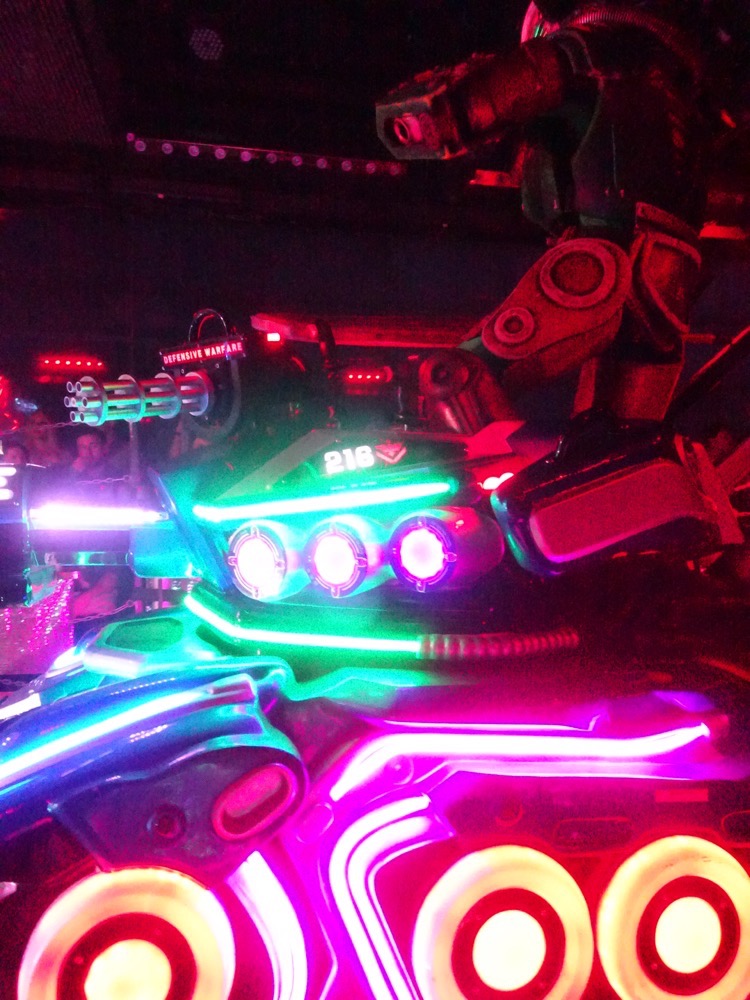
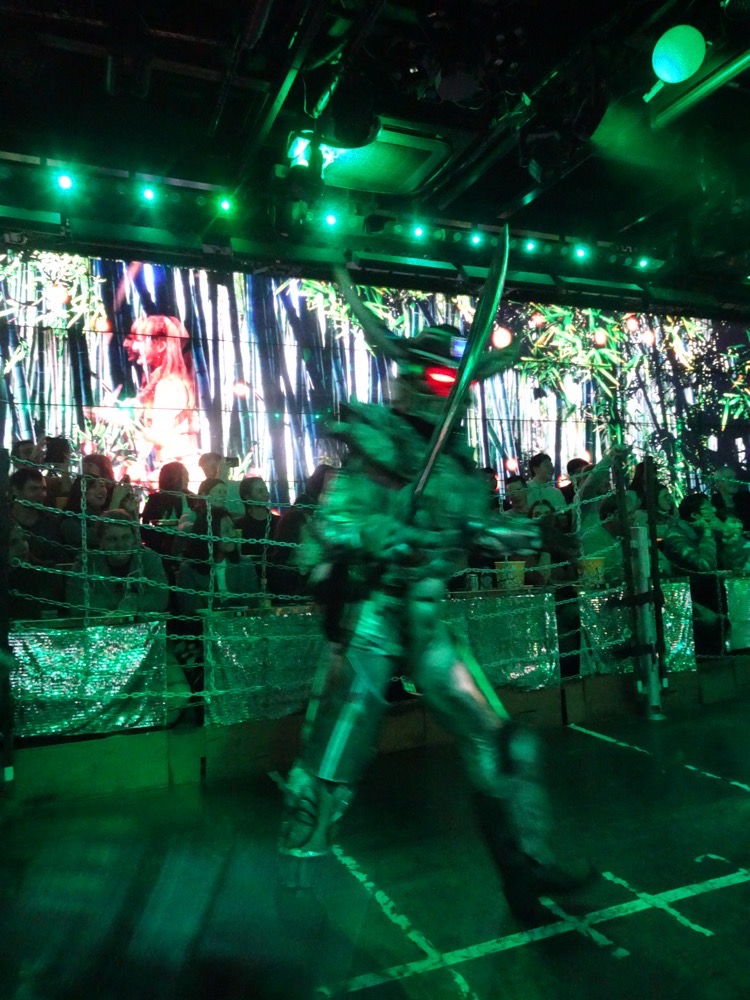
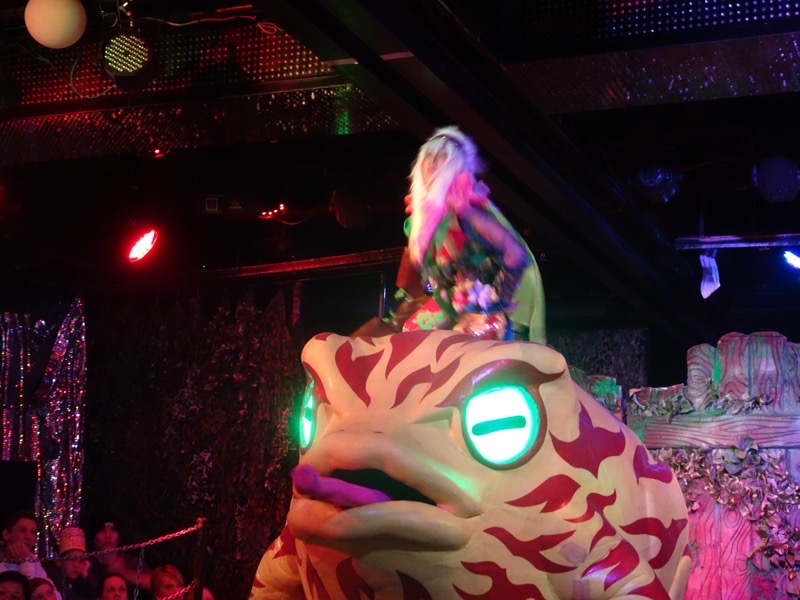
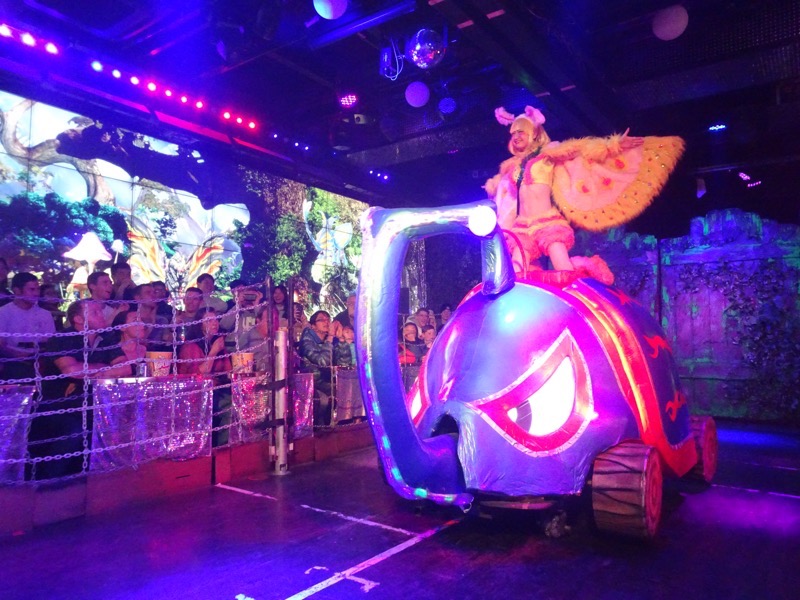
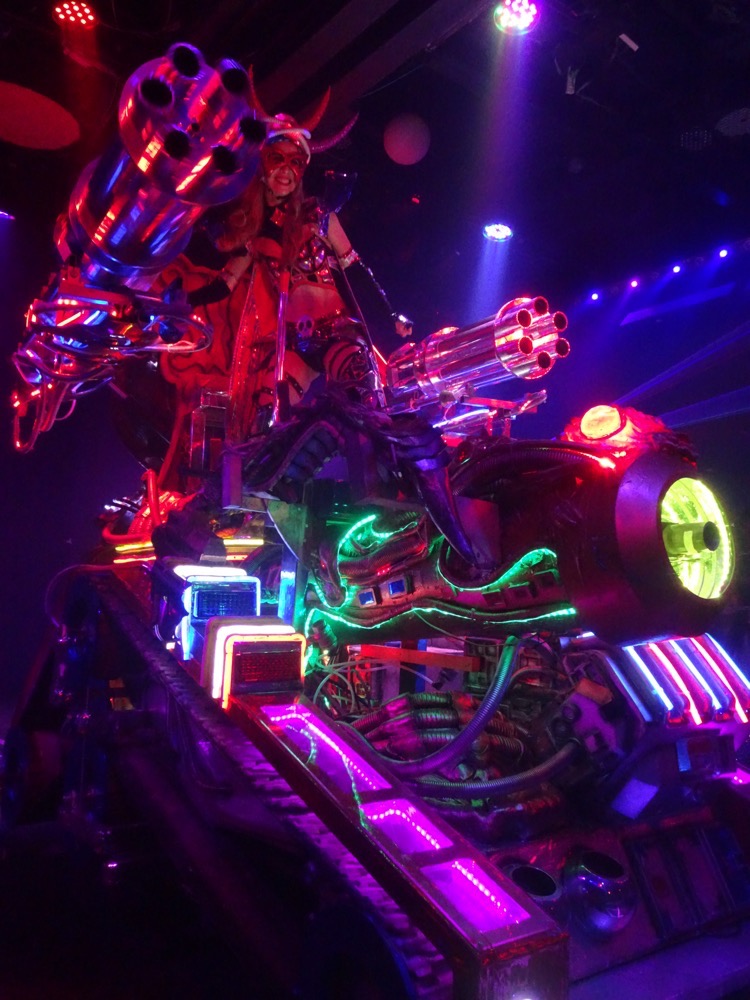
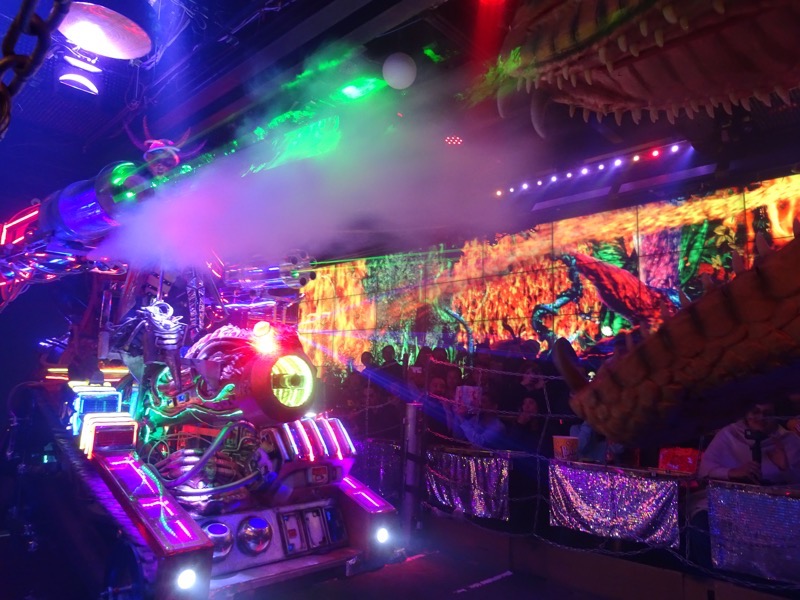
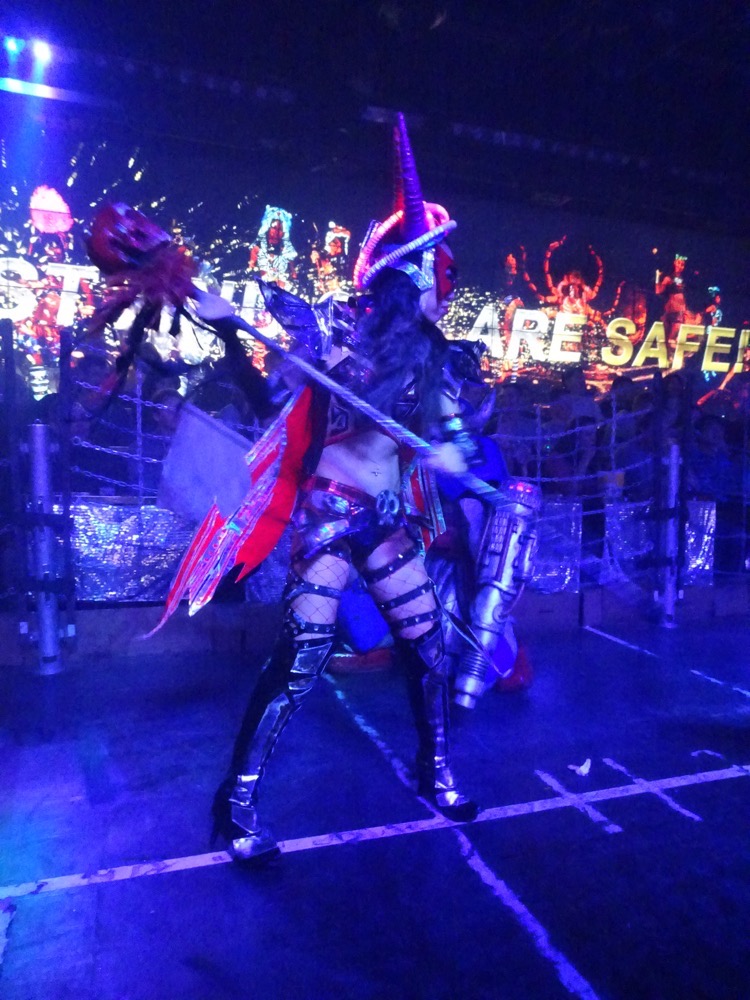 You may think these photos are out of focus or dodgy, but I like ’em!
You may think these photos are out of focus or dodgy, but I like ’em!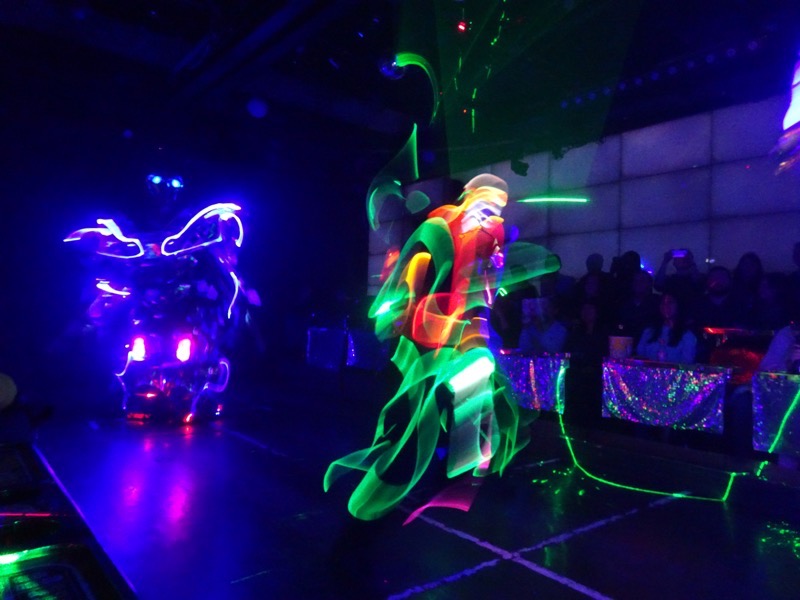
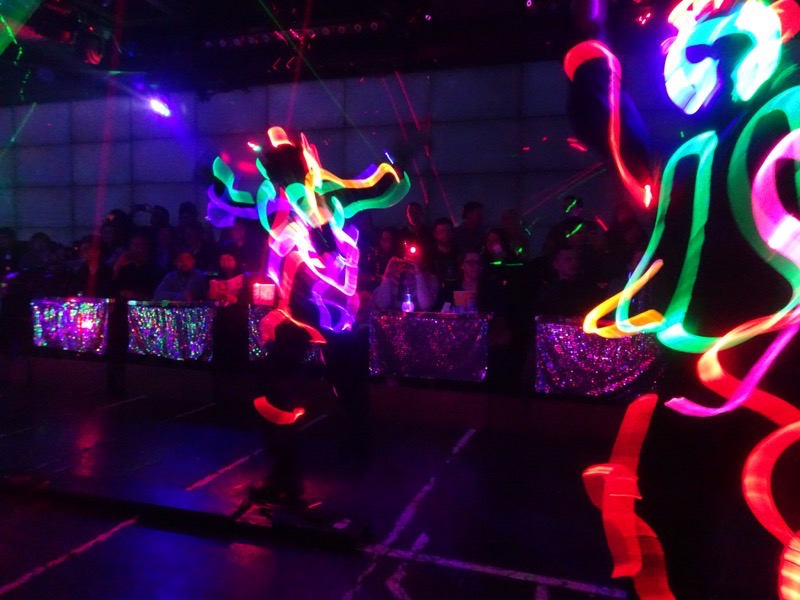
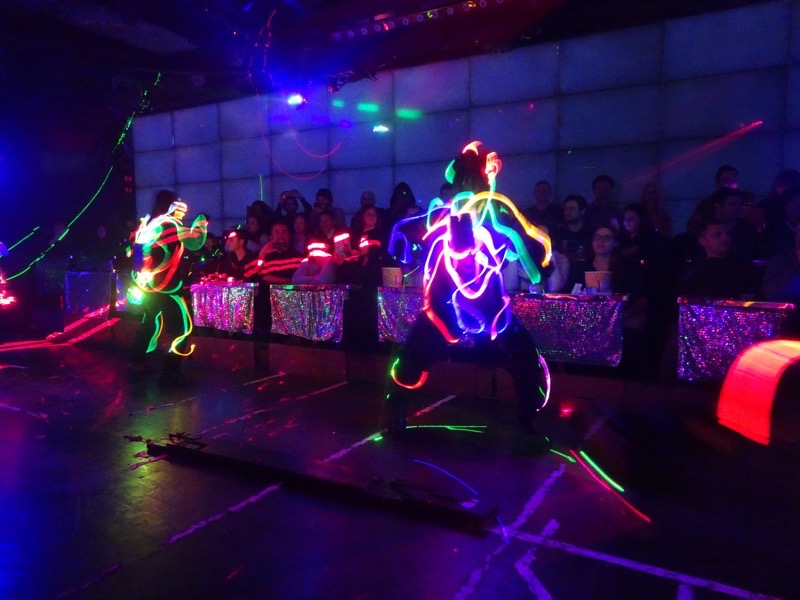










 And yet, through all this noise and lights and pyrotechnics and craziness… these two beside us slept through the lot!
And yet, through all this noise and lights and pyrotechnics and craziness… these two beside us slept through the lot! By the way, if anyone is interested in going to this overpriced tourist trap, err, I mean unique Japanese cultural experience – there is a Tourist Information centre at Shinjuku bus station that has tickets for about Y2,000pp cheaper than you can buy online or at the RR. It’s well worth a couple of bucks on the subway to head down there to pick up discount tickets.
By the way, if anyone is interested in going to this overpriced tourist trap, err, I mean unique Japanese cultural experience – there is a Tourist Information centre at Shinjuku bus station that has tickets for about Y2,000pp cheaper than you can buy online or at the RR. It’s well worth a couple of bucks on the subway to head down there to pick up discount tickets.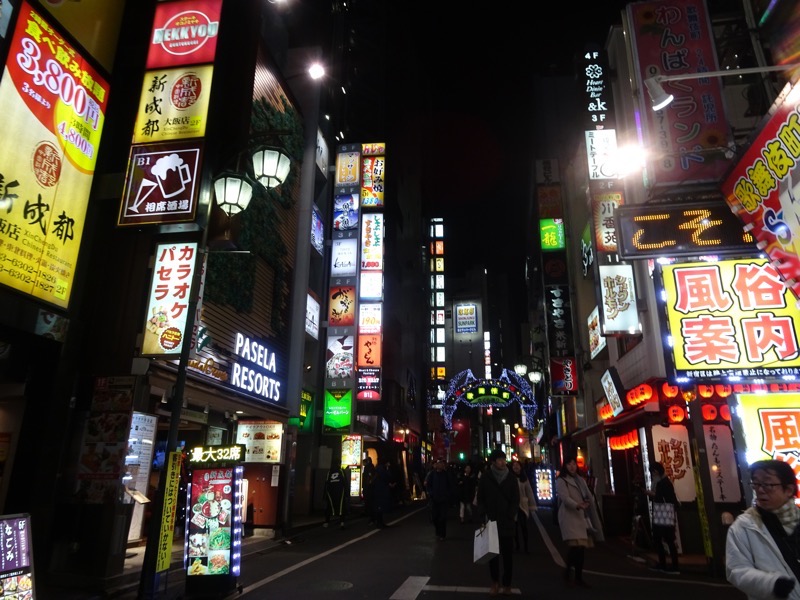


 We were headed to the Kachi-kachi Ropeway to go up to view Mt Fuji. 🙂
We were headed to the Kachi-kachi Ropeway to go up to view Mt Fuji. 🙂
 The Kawagauchiko Ropeway takes travellers up Kachi-kachi Yama, which translates roughly as ‘Fire-crackle Mountain. The ‘kachi-kachi’ bit being an onomatopoetic word for the sound a fire makes, and ‘yama’ meaning mountain. The cute little hiking rabbit and his tanuki (Japanese racoon) companion are a cutesy little theme that run through the complex.
The Kawagauchiko Ropeway takes travellers up Kachi-kachi Yama, which translates roughly as ‘Fire-crackle Mountain. The ‘kachi-kachi’ bit being an onomatopoetic word for the sound a fire makes, and ‘yama’ meaning mountain. The cute little hiking rabbit and his tanuki (Japanese racoon) companion are a cutesy little theme that run through the complex. 

 Lake Kawaguchiko and the town of Fuji-Kawaguchiko.
Lake Kawaguchiko and the town of Fuji-Kawaguchiko. Mt Fuji. On our last trip, Aunty Mary, Mr K and the Teenager all hiked to the top of Mt Fuji, but this is the first time they have actually seen it! The weather was so poor they climbed the entire mountain in raid and clouds and fog, so they never actually saw the peak of the mountain after their arduous journey.
Mt Fuji. On our last trip, Aunty Mary, Mr K and the Teenager all hiked to the top of Mt Fuji, but this is the first time they have actually seen it! The weather was so poor they climbed the entire mountain in raid and clouds and fog, so they never actually saw the peak of the mountain after their arduous journey. The Usagi shrine dedicated to the rabbit from the Kachi-kachi Yama myths… must have been one special rabbit!
The Usagi shrine dedicated to the rabbit from the Kachi-kachi Yama myths… must have been one special rabbit!
 It is said that if you ring the Bell of Tenjo while watching Mt Fuji and make a wish, your wish will come true.
It is said that if you ring the Bell of Tenjo while watching Mt Fuji and make a wish, your wish will come true.

 The rabbit helping the poor, crying tanaki.
The rabbit helping the poor, crying tanaki. No idea what is going on in this one…
No idea what is going on in this one… The two friends looking off the mountain, farewelling guests.
The two friends looking off the mountain, farewelling guests.

 I couldn’t tell you what they are exactly, but apparently, there are a smattering of references to this myth in Super Mario Sunshine.
I couldn’t tell you what they are exactly, but apparently, there are a smattering of references to this myth in Super Mario Sunshine. At the base of Kachi-kachi Yama is the world famous Fujiyama Cookie shop! Where, you can buy all manner of Fuji styled cookies and candies.
At the base of Kachi-kachi Yama is the world famous Fujiyama Cookie shop! Where, you can buy all manner of Fuji styled cookies and candies.



 Camembert cheesecake… sounds amazing. Amazingly suspicious!
Camembert cheesecake… sounds amazing. Amazingly suspicious! Also – the widest variety of weird KitKat flavours known to man… Wasabi flavour, Strawberry Cheesecake flavour, Sake flavour, Apple flavour.
Also – the widest variety of weird KitKat flavours known to man… Wasabi flavour, Strawberry Cheesecake flavour, Sake flavour, Apple flavour. 

 Nearby was the Ide Sake Brewery, unfortunately, we spent too much time up Kachi-kachi and missed the last brewery tours, but we made a mental note to make up for it this evening.
Nearby was the Ide Sake Brewery, unfortunately, we spent too much time up Kachi-kachi and missed the last brewery tours, but we made a mental note to make up for it this evening. After this, it was back into town for a little shopping and then the bus trip back to Shinjuku bus station, whereupon we did a little more shopping 😉 and then went hunting for dinner.
After this, it was back into town for a little shopping and then the bus trip back to Shinjuku bus station, whereupon we did a little more shopping 😉 and then went hunting for dinner.
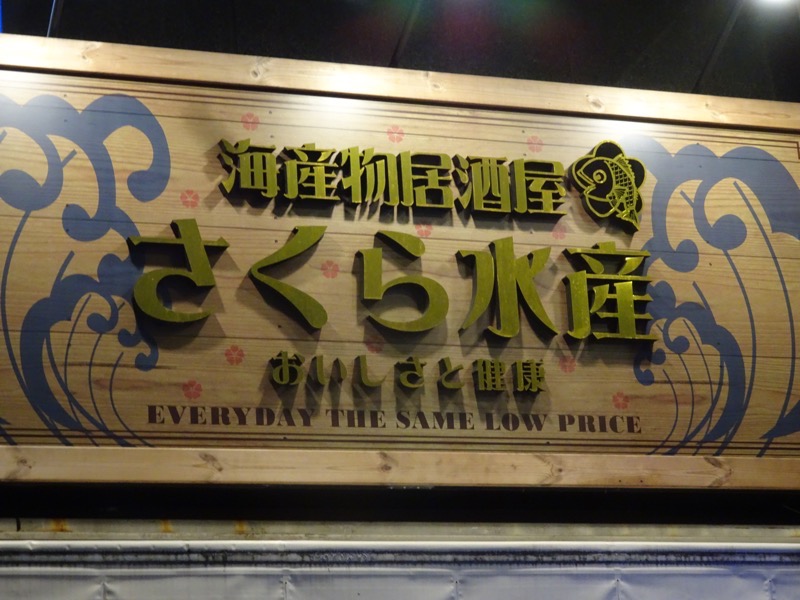
 Saw this on the menu. Obviously, we had to order it to find out what it was… turned out to be a tasty tasty Martian alien octopus thing.
Saw this on the menu. Obviously, we had to order it to find out what it was… turned out to be a tasty tasty Martian alien octopus thing.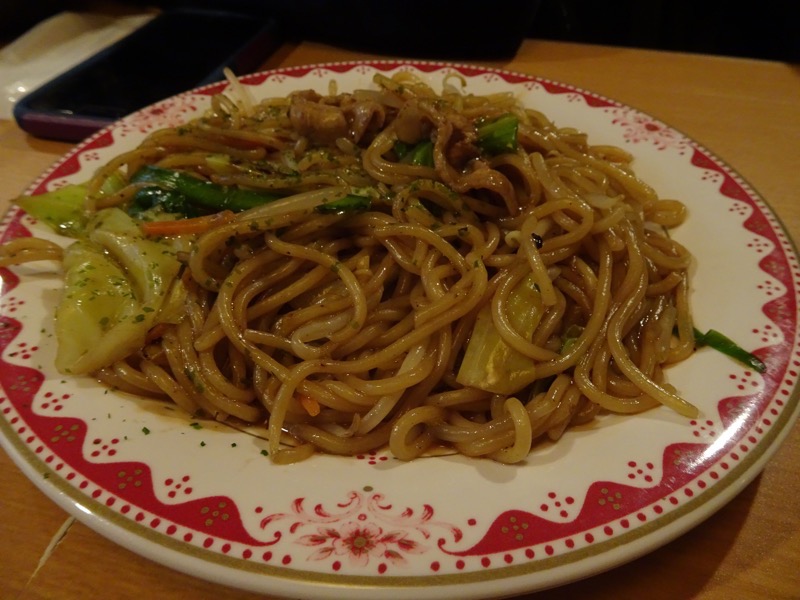 And the most delicious and affordable sushi platter ever, Y990, which at the moment is around AUD$11. Fabulous food in a busy little restaurant – I would highly recommend hunting this place out if you are in Shinjuku.
And the most delicious and affordable sushi platter ever, Y990, which at the moment is around AUD$11. Fabulous food in a busy little restaurant – I would highly recommend hunting this place out if you are in Shinjuku. Another wonderful day in Japan over it was back to our shoebox hotel room for… another soak in the tub. 🙂 This time with extra sake!
Another wonderful day in Japan over it was back to our shoebox hotel room for… another soak in the tub. 🙂 This time with extra sake!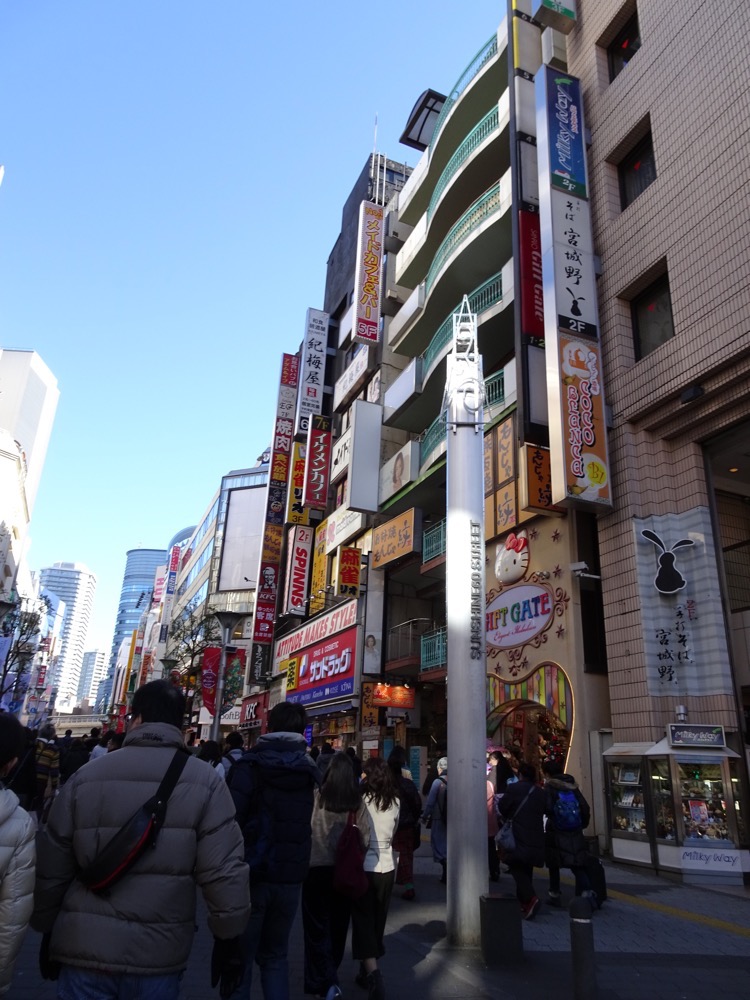 Ikebukuro Main Street.
Ikebukuro Main Street.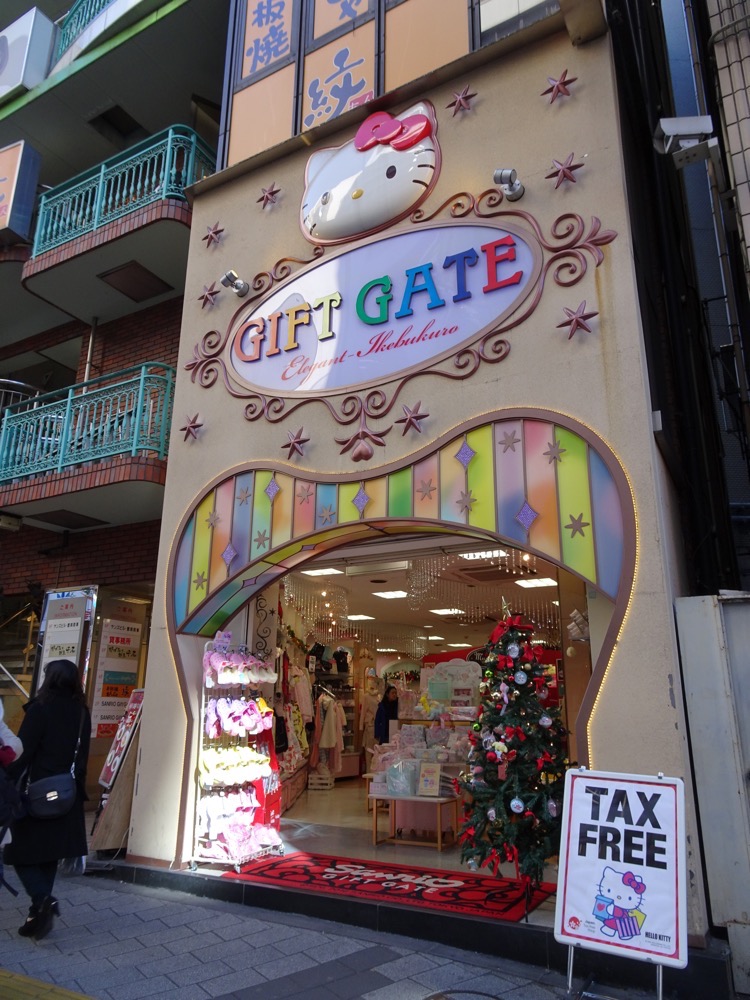
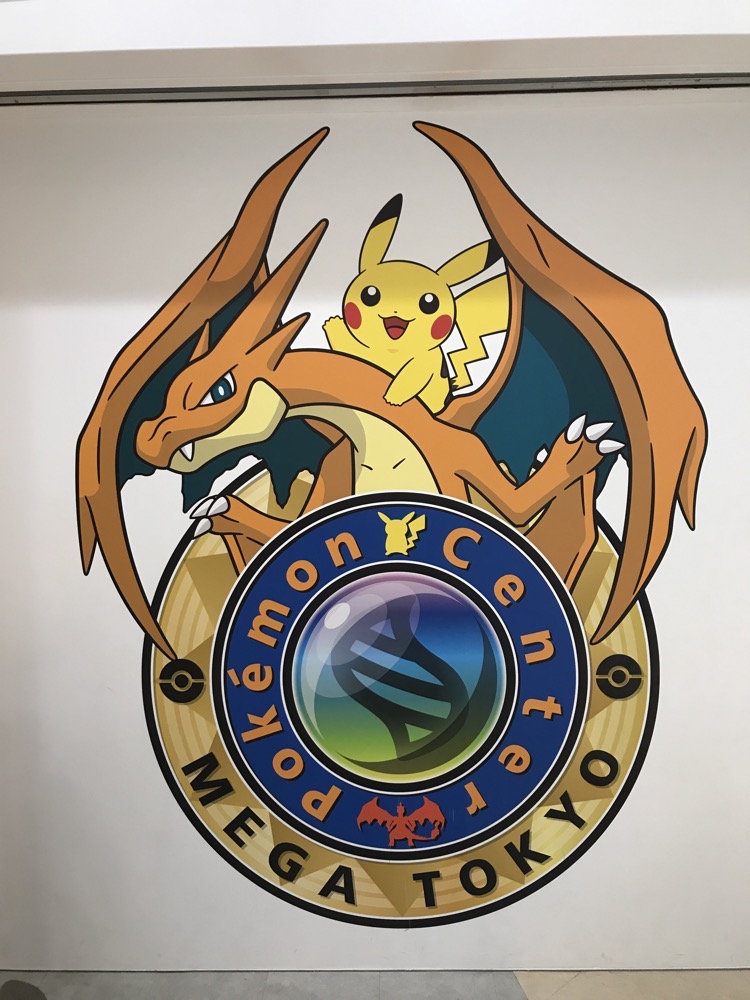
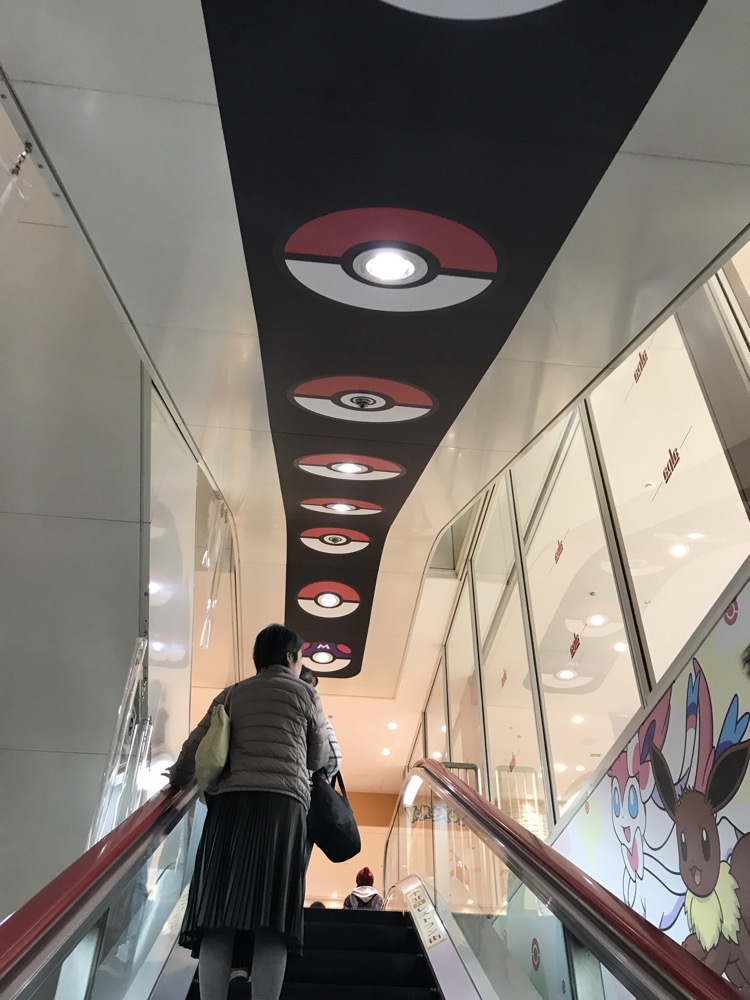
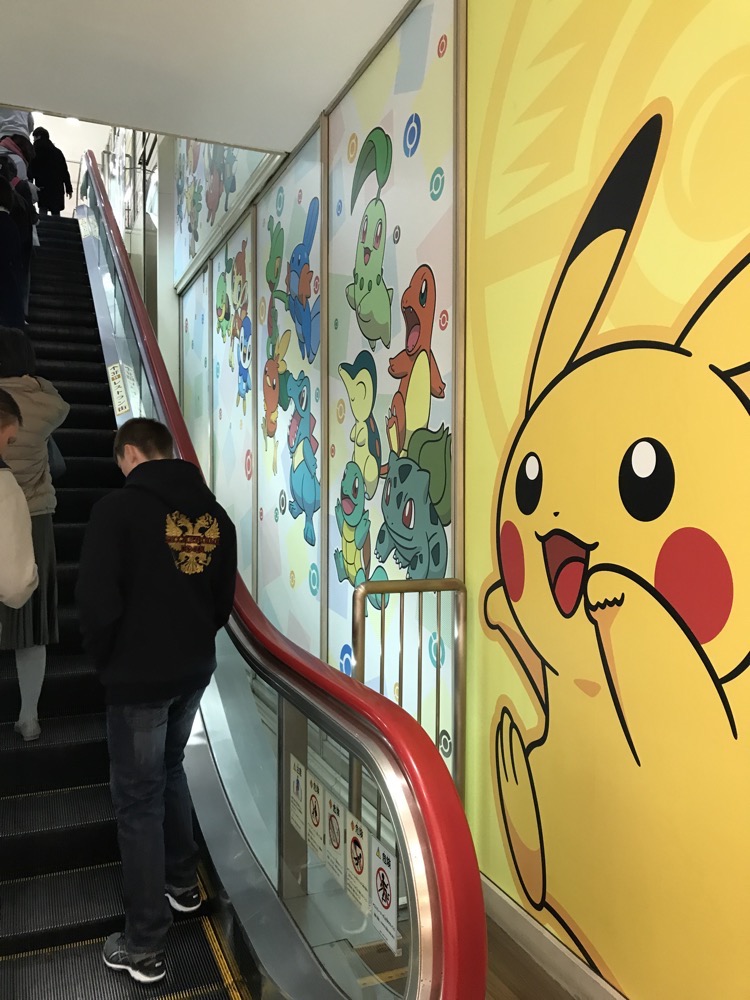 And then we found the place – basically a Disney Store but for Pokémon, and at this time of year – packed to the gills with people, lots of loud annoying music, kids running amok and more plush toys than you can poke a stick at.
And then we found the place – basically a Disney Store but for Pokémon, and at this time of year – packed to the gills with people, lots of loud annoying music, kids running amok and more plush toys than you can poke a stick at.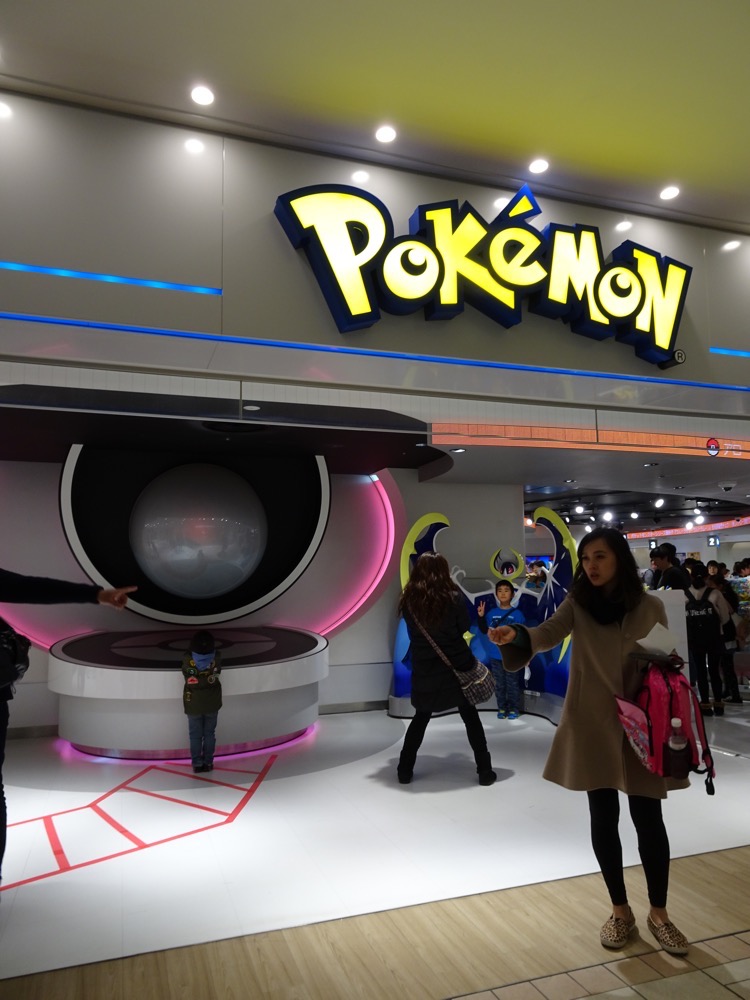
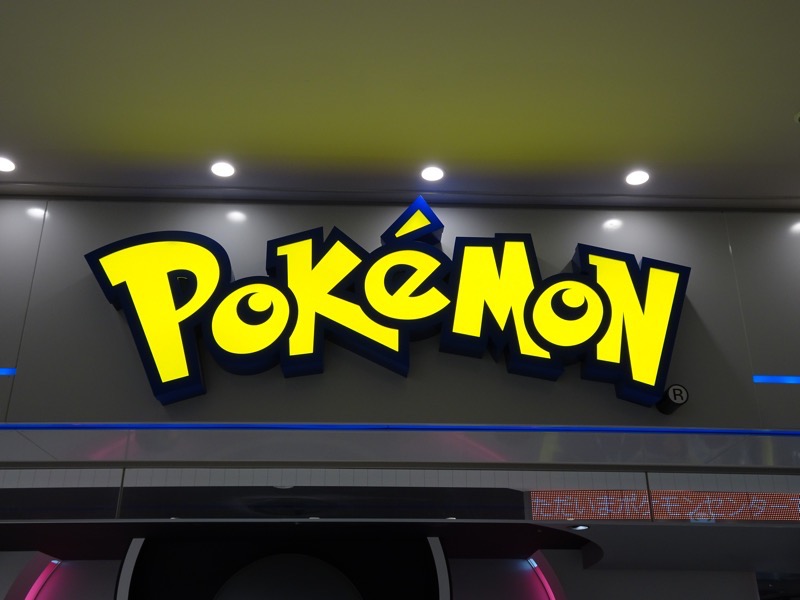
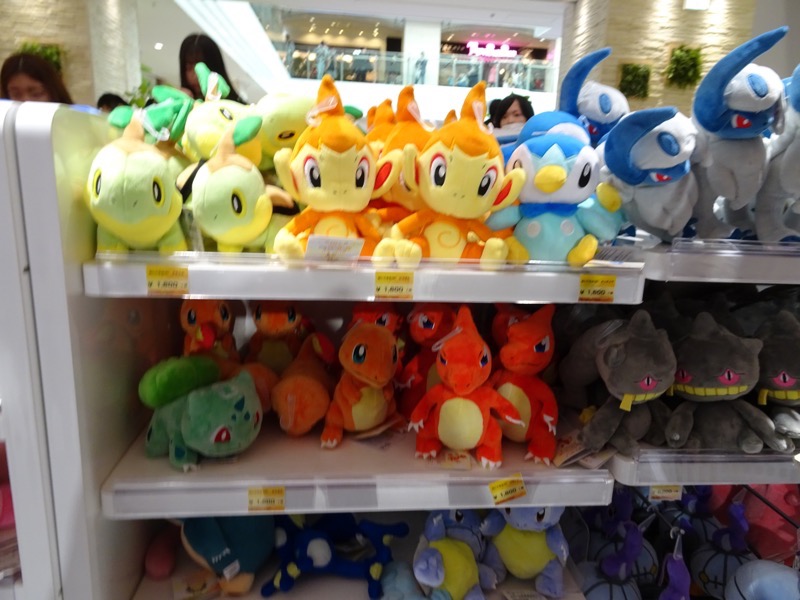
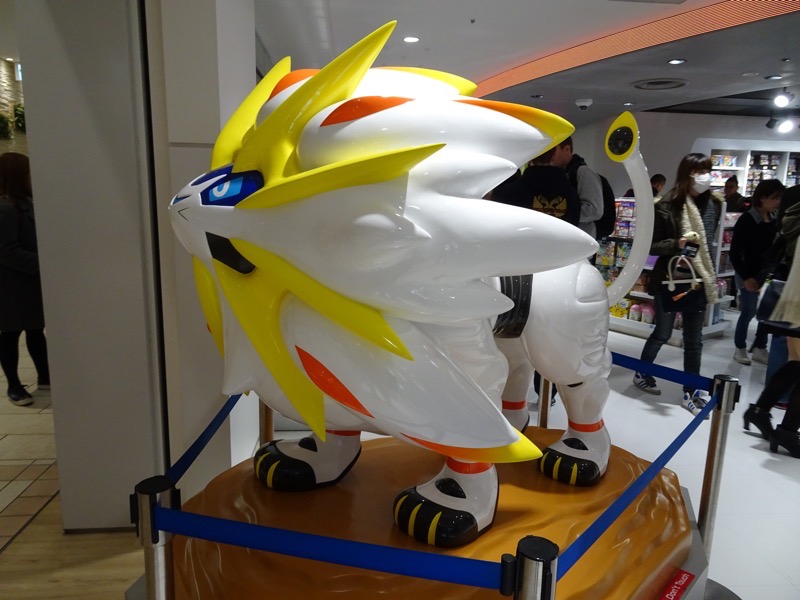
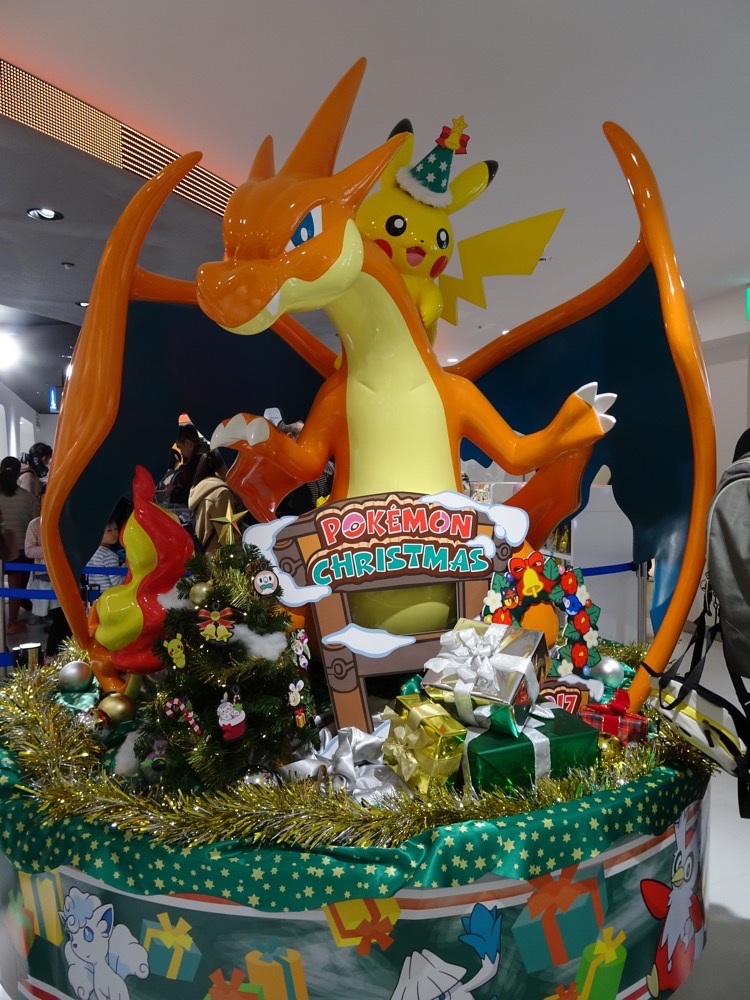
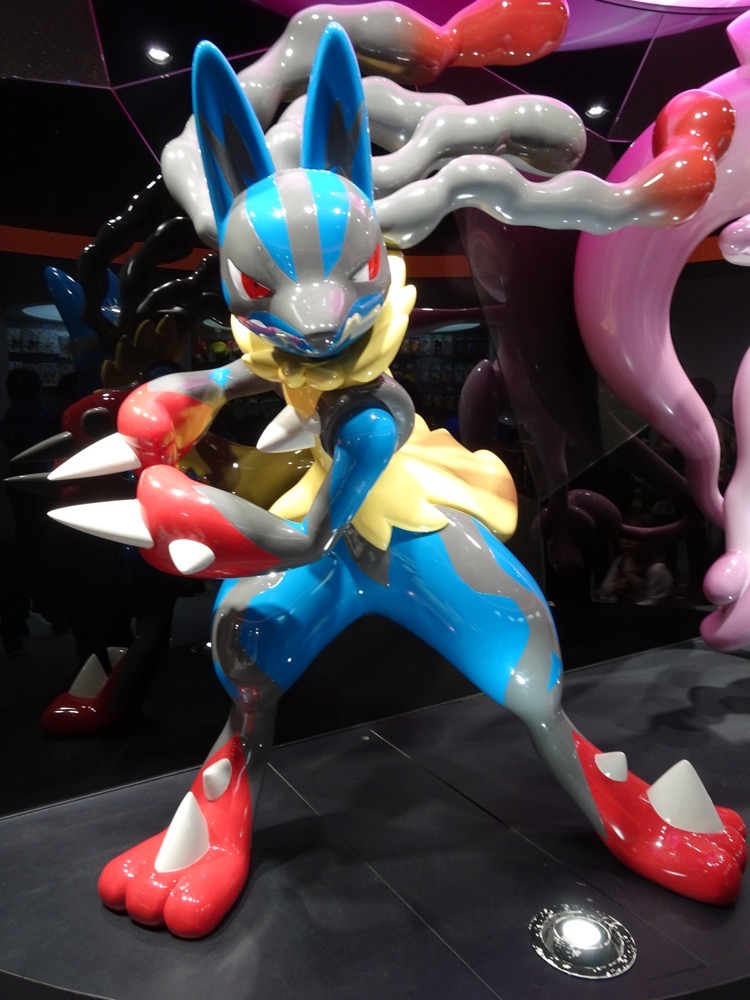
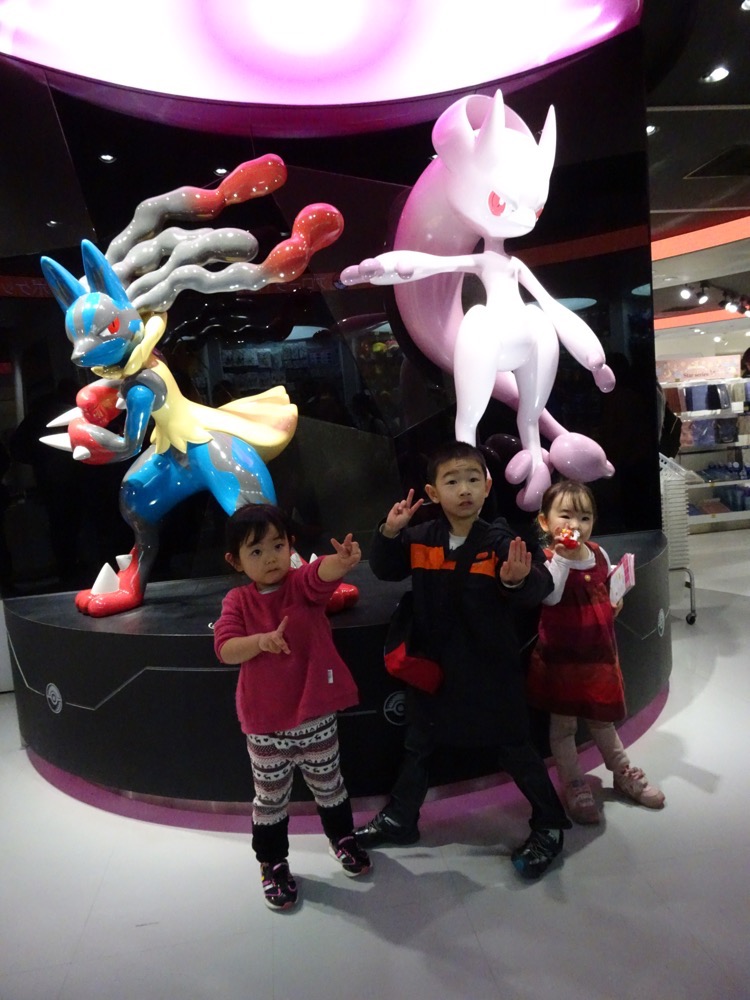 Unfotunately not a lot of merchandise that was designed for adults… I was hoping to find something I could buy in bulk to take home for our local raid teams, but seriously? Golf balls, stationery or phone cases was about the extent of useful stuff that adults might like. I don’t think they are catering for their PGO market here – which from what I have seen is largely being played by 25-45 year olds. Oh well. Marketing opportunity missed there, Nintendo.
Unfotunately not a lot of merchandise that was designed for adults… I was hoping to find something I could buy in bulk to take home for our local raid teams, but seriously? Golf balls, stationery or phone cases was about the extent of useful stuff that adults might like. I don’t think they are catering for their PGO market here – which from what I have seen is largely being played by 25-45 year olds. Oh well. Marketing opportunity missed there, Nintendo.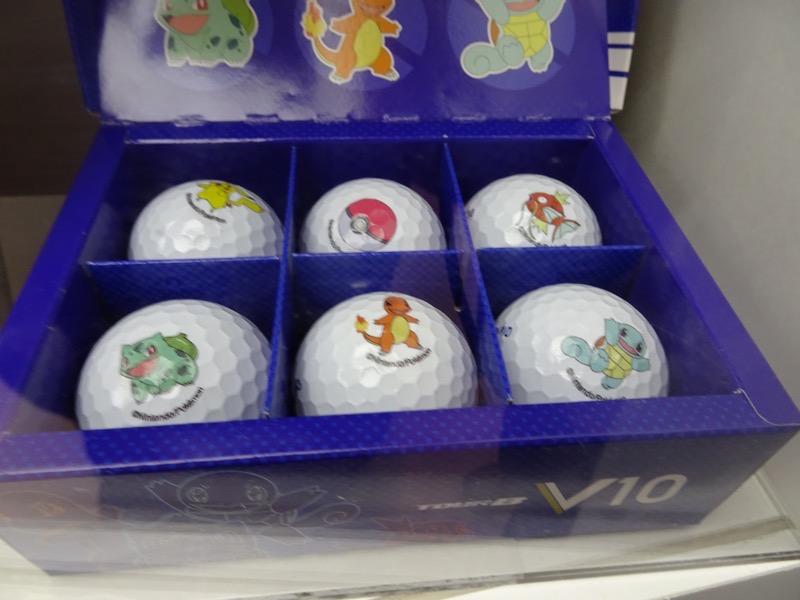
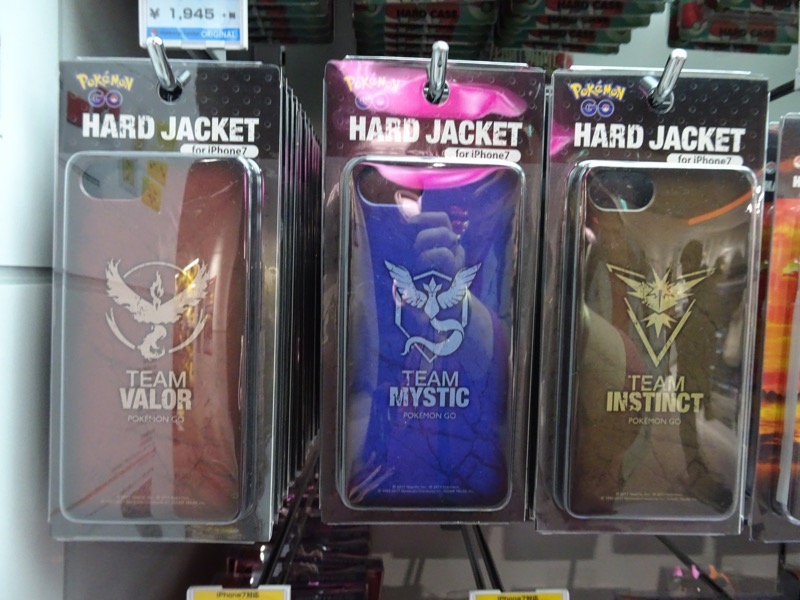
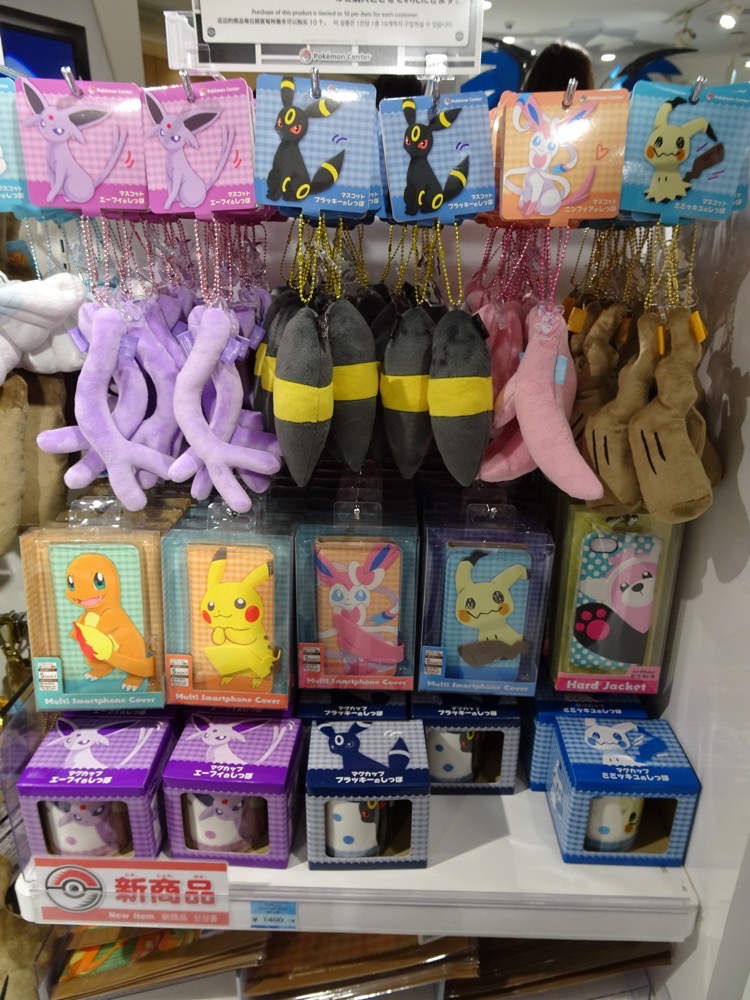
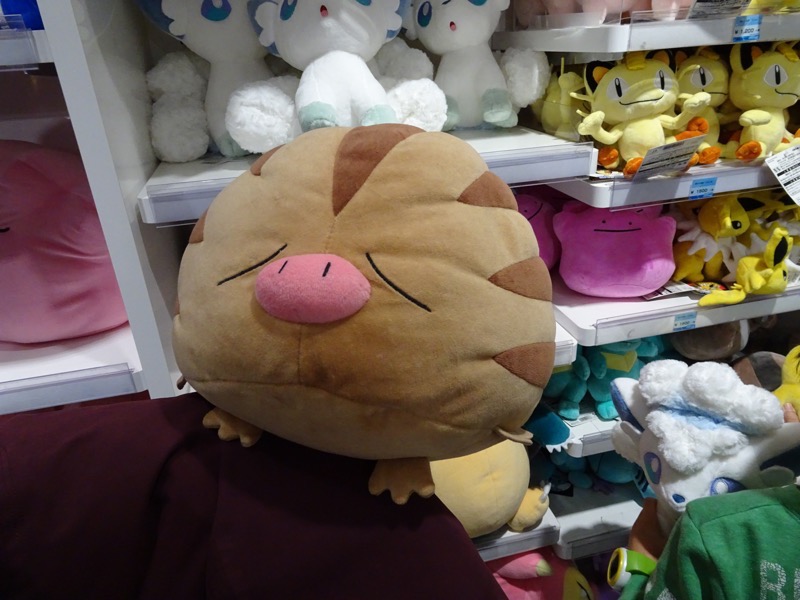
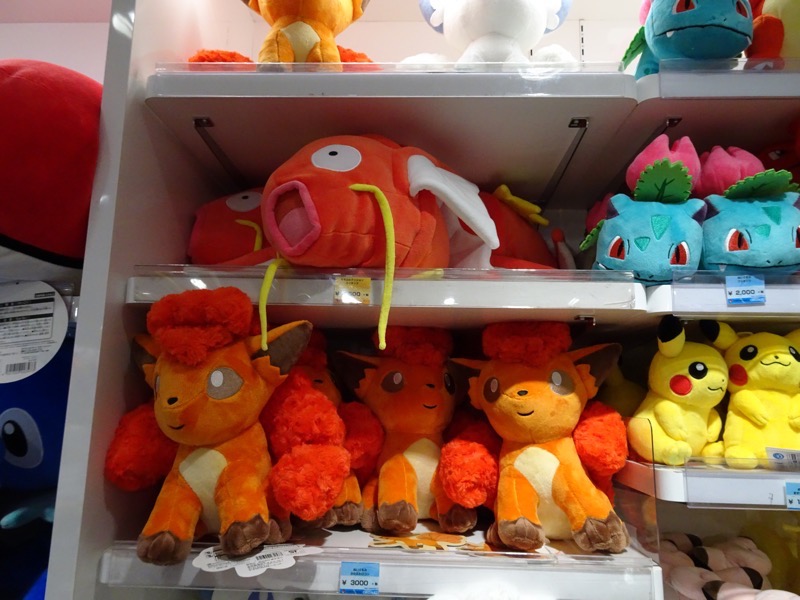 While we were there a legendary raid popped on the Pokemon Mega Centre gym, so of course we had to raid the Groudon. I managed to catch it, but Mr K had to try again on the other Pikachu gym right beside it.
While we were there a legendary raid popped on the Pokemon Mega Centre gym, so of course we had to raid the Groudon. I managed to catch it, but Mr K had to try again on the other Pikachu gym right beside it.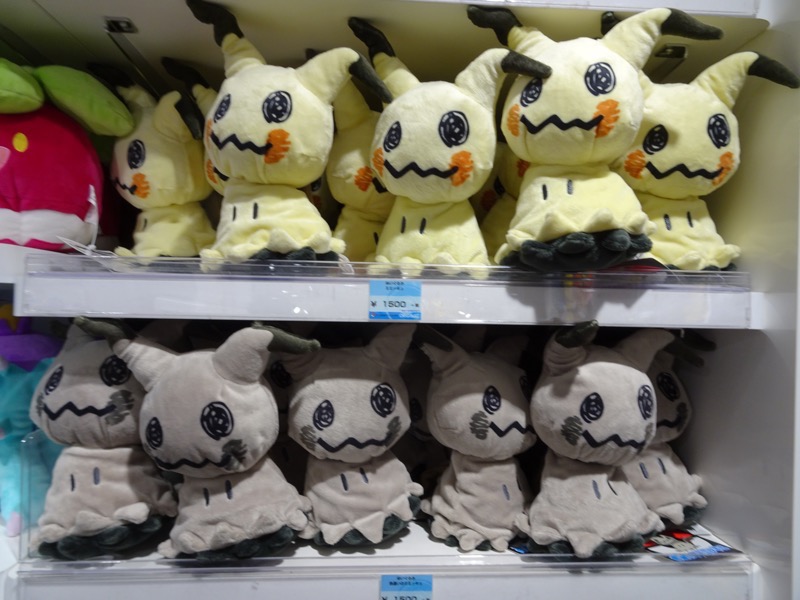
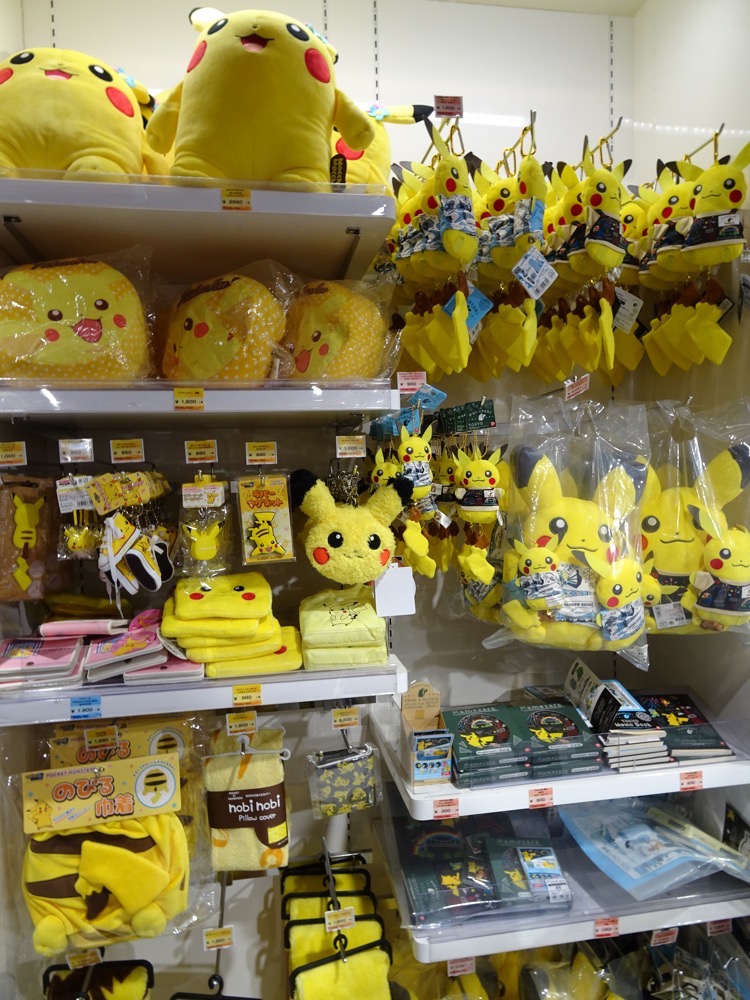 Just as we were leaving, things got really out of control – a Santa Pikachu turned up with the staff and the kids went crazy! So much noise and excitement and absolutely none of it decipherable by non-Japanese speaking tourists like us.
Just as we were leaving, things got really out of control – a Santa Pikachu turned up with the staff and the kids went crazy! So much noise and excitement and absolutely none of it decipherable by non-Japanese speaking tourists like us.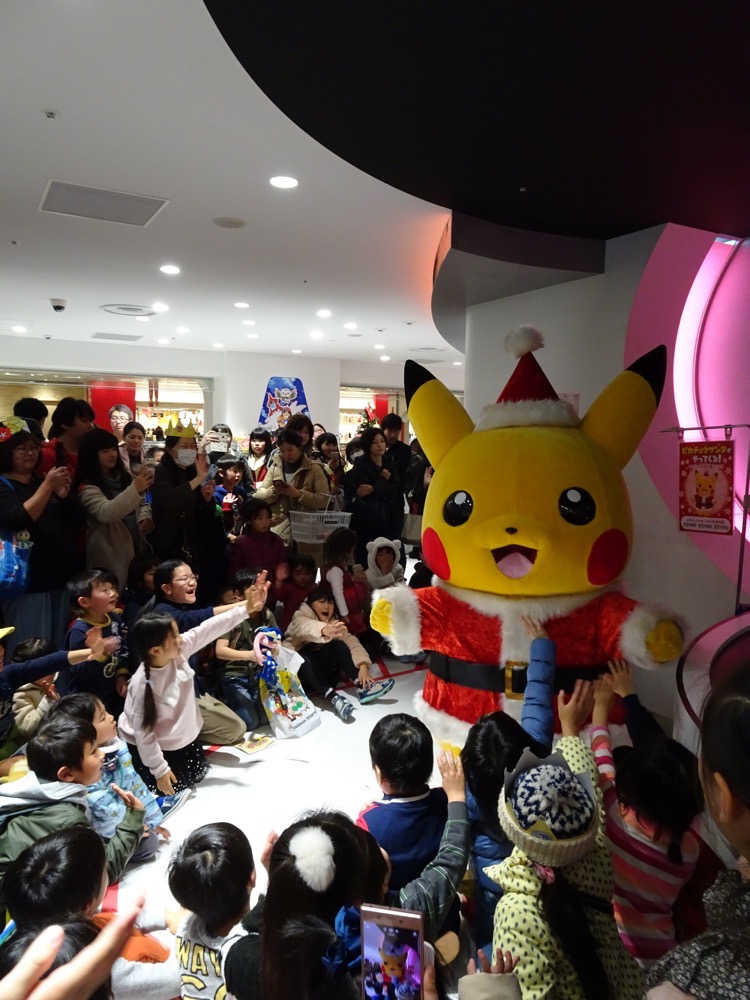 And of course the ubiquitous vending machines full of Pokemon crap. Mostly Ditto for some reason…
And of course the ubiquitous vending machines full of Pokemon crap. Mostly Ditto for some reason…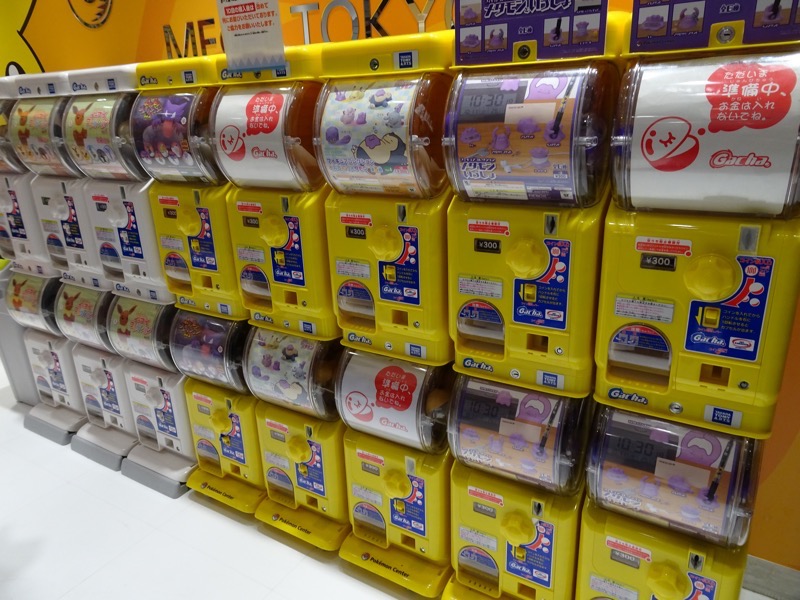
 For lunch, we found this restaurant which had some amazing looking okonomyaki in the display window… well, amazing for over glossy plastic representations of food, but we thought it looked like a potentially delicious cabbagey omelette spot for lunch.
For lunch, we found this restaurant which had some amazing looking okonomyaki in the display window… well, amazing for over glossy plastic representations of food, but we thought it looked like a potentially delicious cabbagey omelette spot for lunch.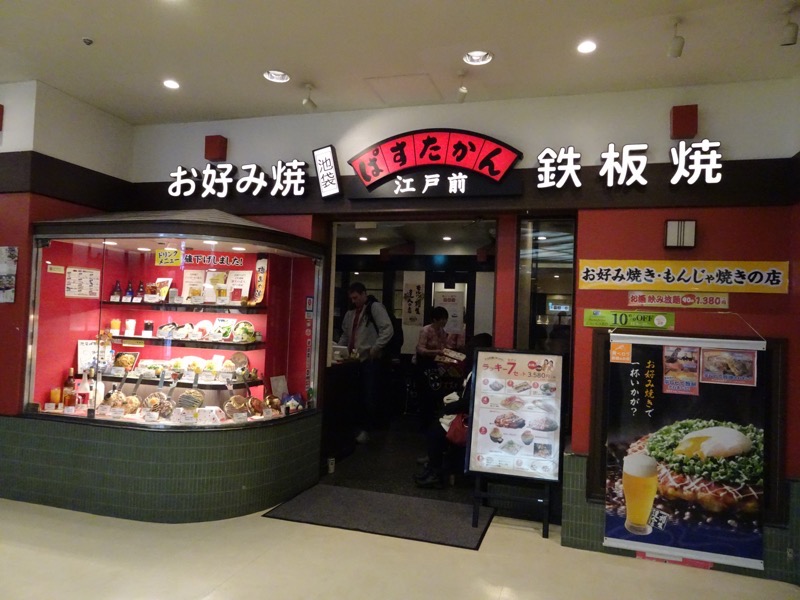
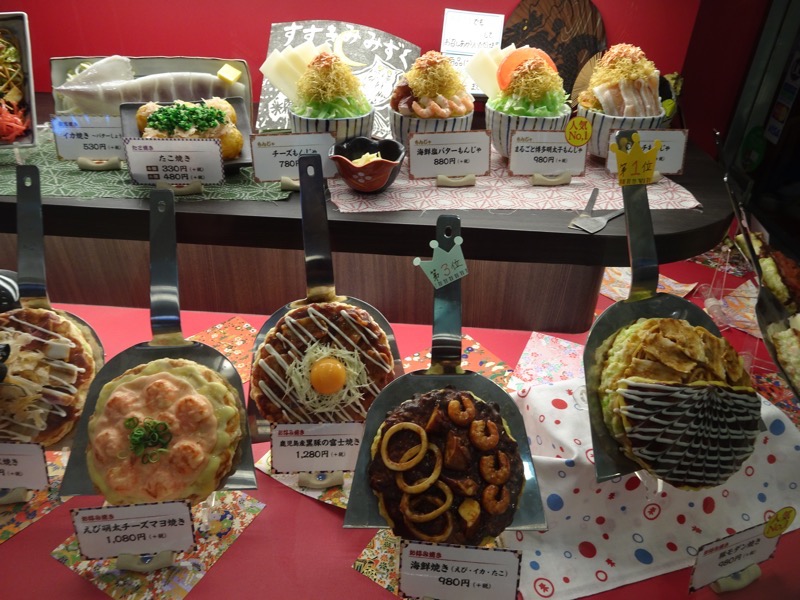
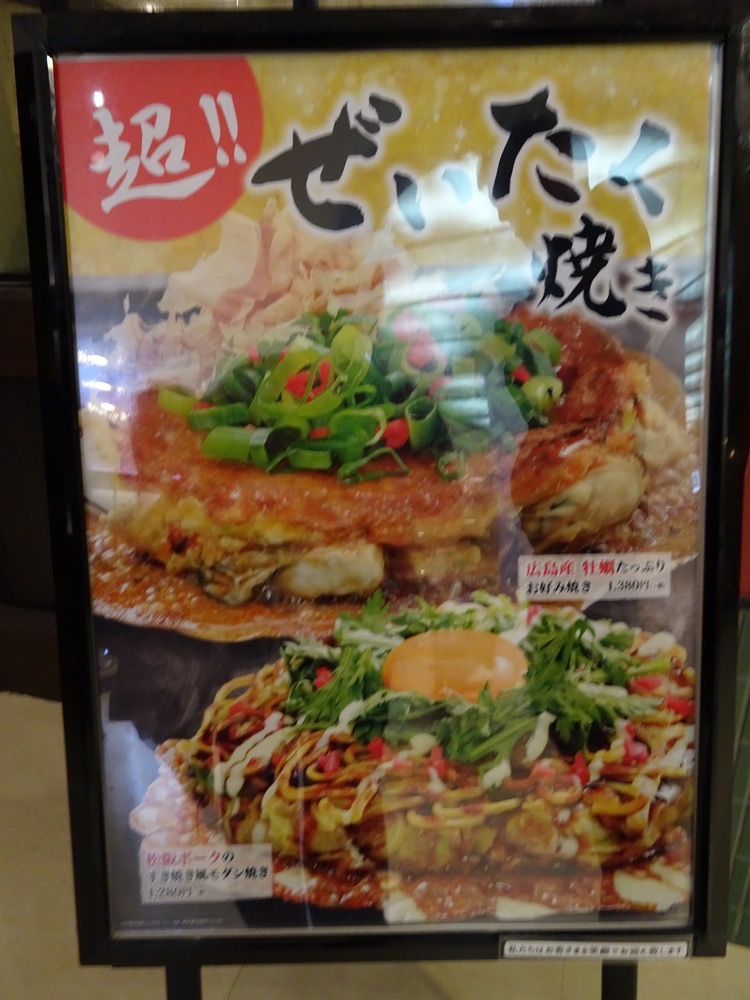 However, we got inside and rapidly discovered that it was teppanyaki okonomiyaki? Cook your own damn cabbagey omelette restaurant? The Teenager looked somewhat unimpressed at having to cook his own lunch, but when in Rome, right?
However, we got inside and rapidly discovered that it was teppanyaki okonomiyaki? Cook your own damn cabbagey omelette restaurant? The Teenager looked somewhat unimpressed at having to cook his own lunch, but when in Rome, right? 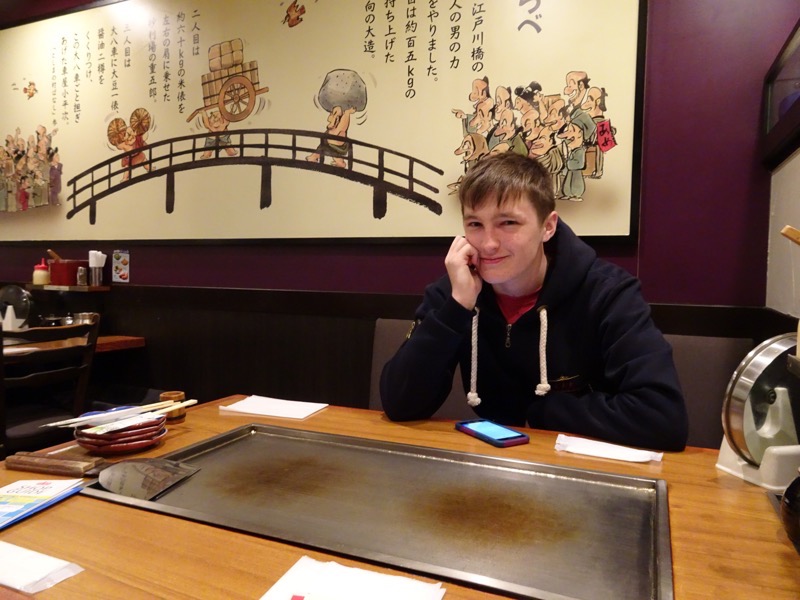 There was a pile of useful instructions, not in English of course, but it gave comfort knowing that locals don’t necessarily know how to cook their own okonomyaki either. 😉
There was a pile of useful instructions, not in English of course, but it gave comfort knowing that locals don’t necessarily know how to cook their own okonomyaki either. 😉 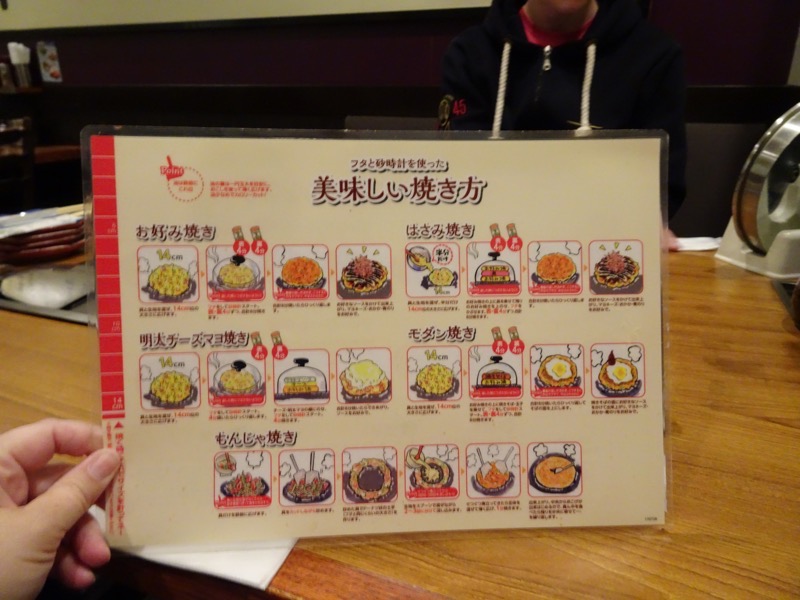 Our lunches arrived – raw. And looked full of possible deliciousness… so long as I didn’t fuck up the cooking bit. 😀
Our lunches arrived – raw. And looked full of possible deliciousness… so long as I didn’t fuck up the cooking bit. 😀 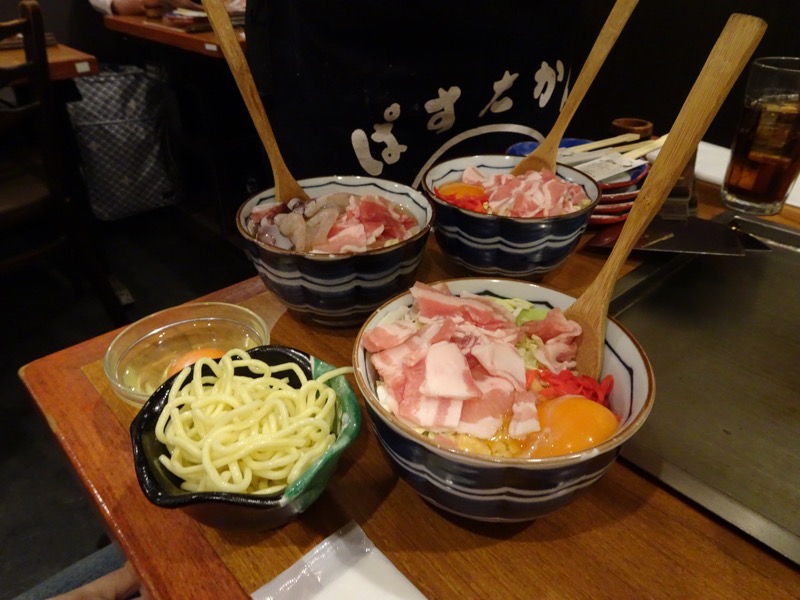 Thankfully, our server was kind enough to show us how it’s done – for the first one. Preparing the plate, cooking the meat/seafood, mixing the cabbagey mixture and then forming it into a 14cm pancake. Cook covered on one side for 4 mins on a lowish temperature, then use the spatulas to flip it over and cook for another 4 mins on the other side. Handy hourglass timers were provided to make sure your okonomyaki was cooked through.
Thankfully, our server was kind enough to show us how it’s done – for the first one. Preparing the plate, cooking the meat/seafood, mixing the cabbagey mixture and then forming it into a 14cm pancake. Cook covered on one side for 4 mins on a lowish temperature, then use the spatulas to flip it over and cook for another 4 mins on the other side. Handy hourglass timers were provided to make sure your okonomyaki was cooked through. 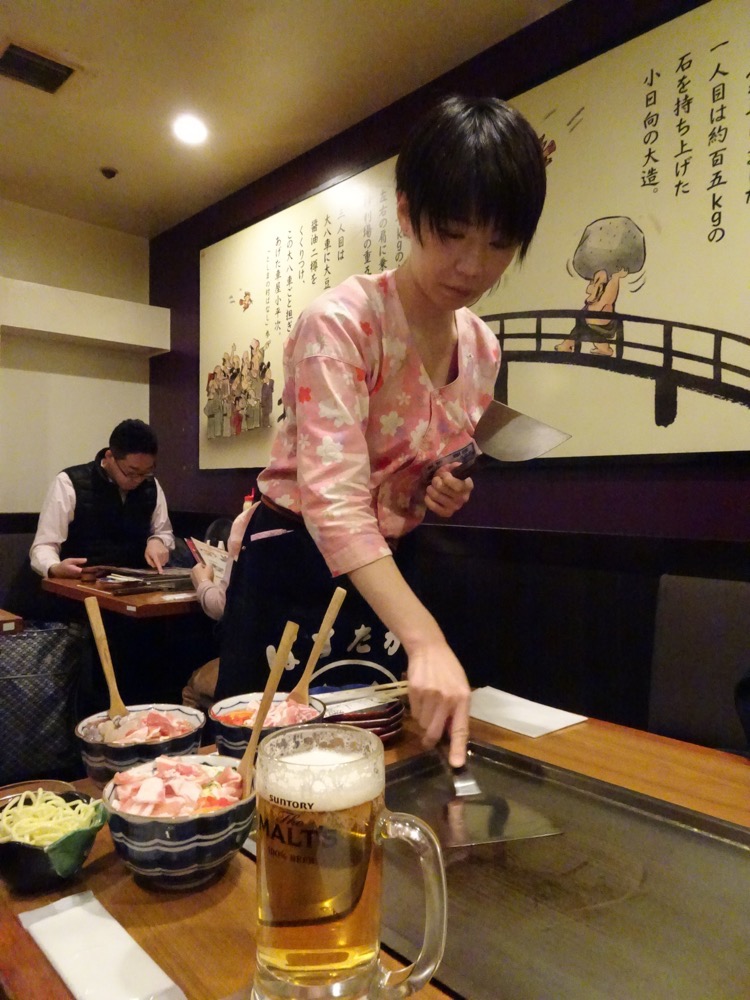
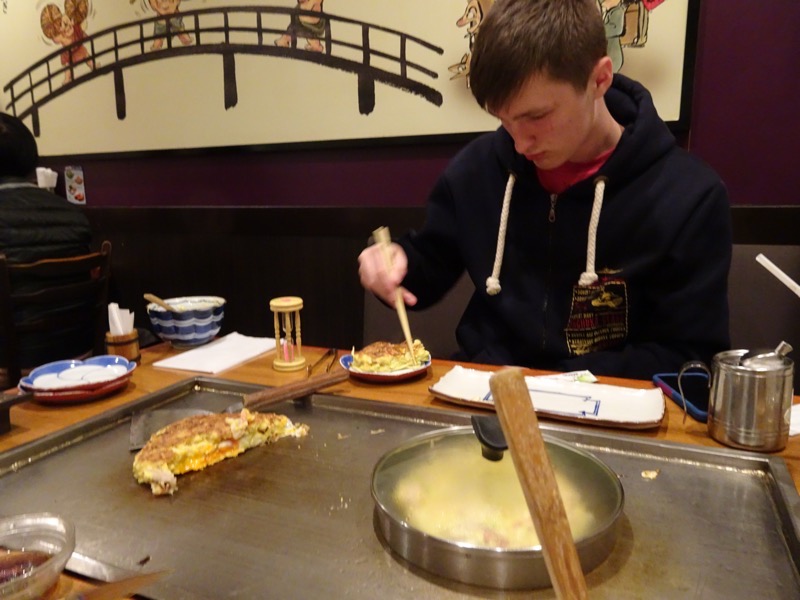 Et voila! Tasty tasty okonomyaki lunch!
Et voila! Tasty tasty okonomyaki lunch!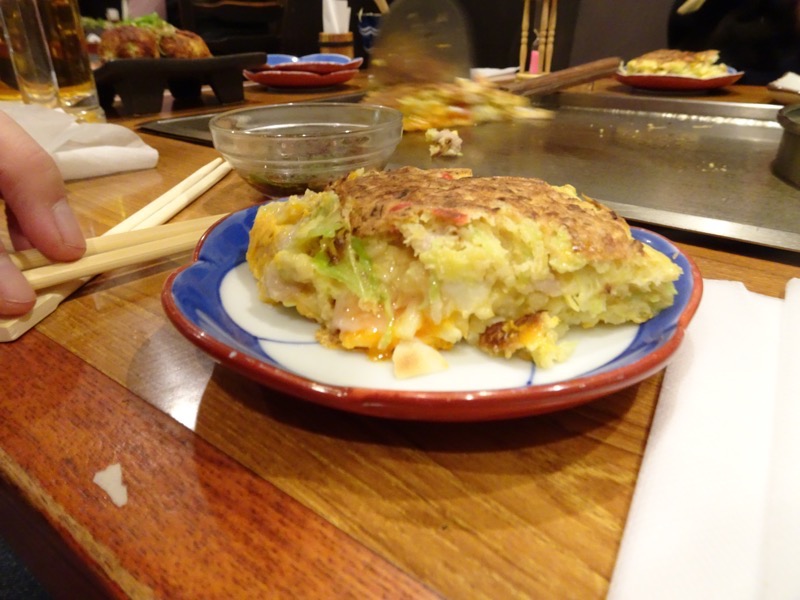
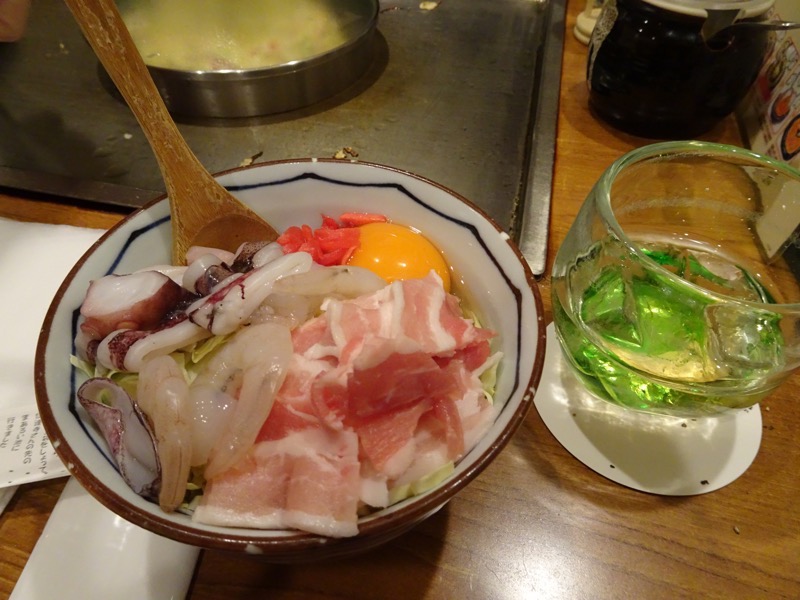
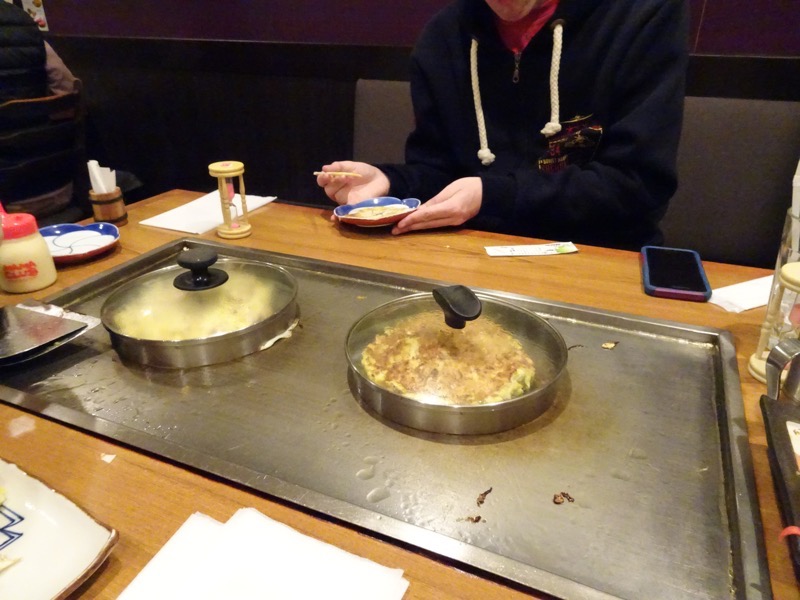 Lunch was delicious and went down lovely with a cold glass of umeshu and biru.
Lunch was delicious and went down lovely with a cold glass of umeshu and biru.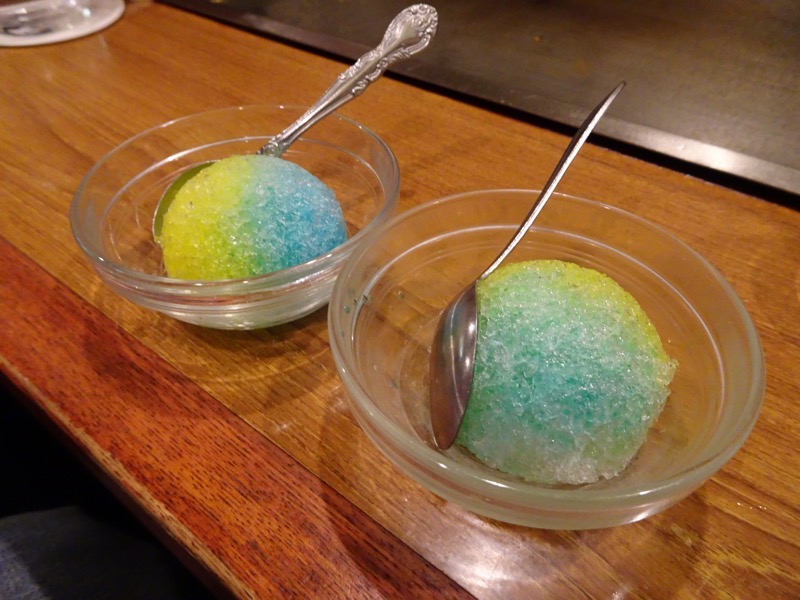
 He was pretty excited to be there… but only pulled this face for me after I prompted him to not look so blasé.
He was pretty excited to be there… but only pulled this face for me after I prompted him to not look so blasé. 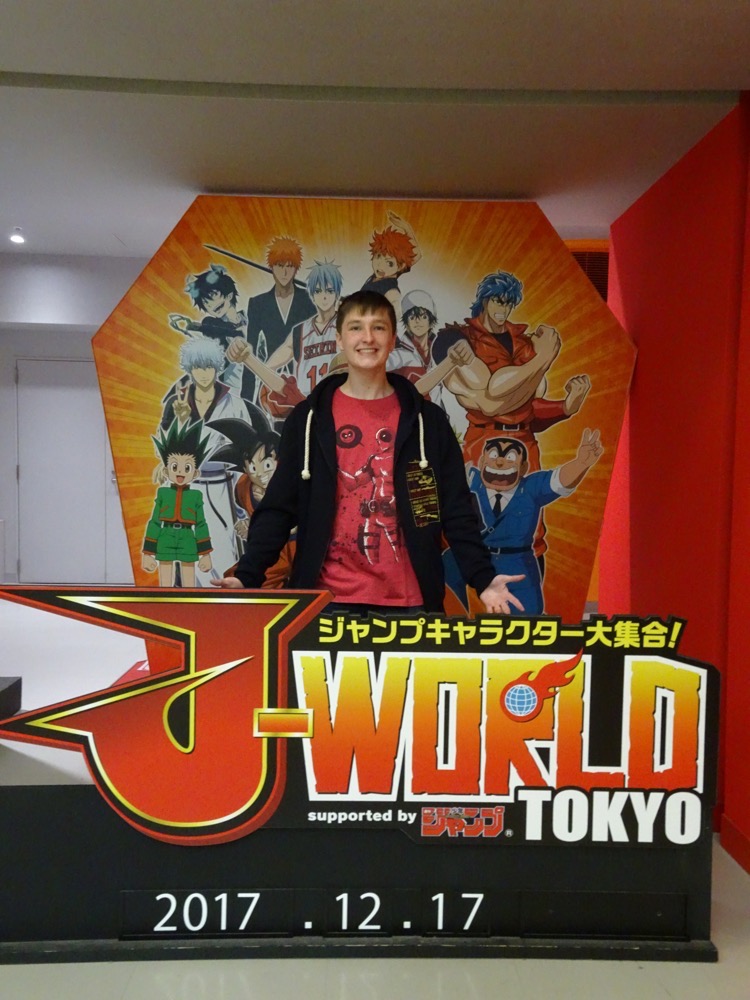
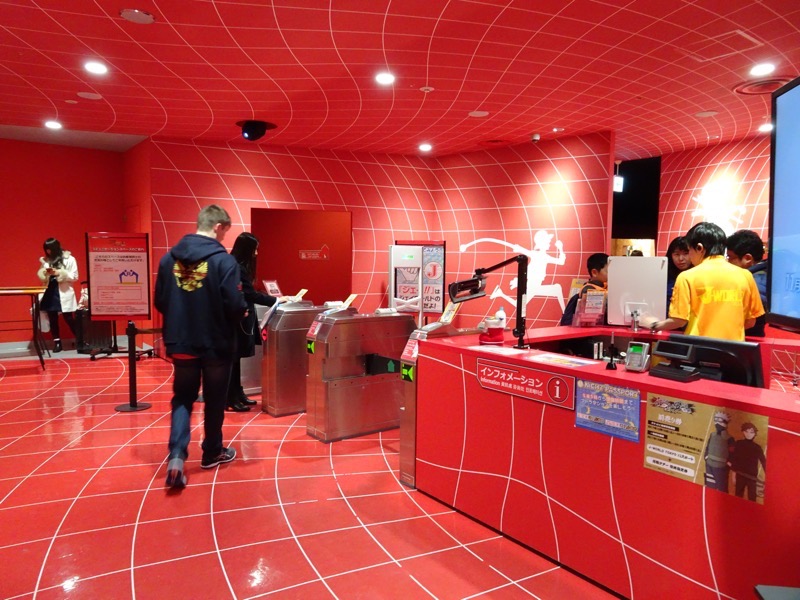 Now I am not an anime fan, and have no idea who all the characters are but this amusement centre/theme park was pretty full on. Rides, interactive experiences, virtual reality stuff, Segway clouds (?), a restaurant full of themed food, and of course the inevitable gift shop. I had no idea this One Piece thing was so huge… it’s about a pirate named Monkey.D Luffy on his quest to claim the treasure, the One Piece. From what I can understand it involves a lot of high drama and screaming alarmingly in Japanese at other adventuring characters.
Now I am not an anime fan, and have no idea who all the characters are but this amusement centre/theme park was pretty full on. Rides, interactive experiences, virtual reality stuff, Segway clouds (?), a restaurant full of themed food, and of course the inevitable gift shop. I had no idea this One Piece thing was so huge… it’s about a pirate named Monkey.D Luffy on his quest to claim the treasure, the One Piece. From what I can understand it involves a lot of high drama and screaming alarmingly in Japanese at other adventuring characters. 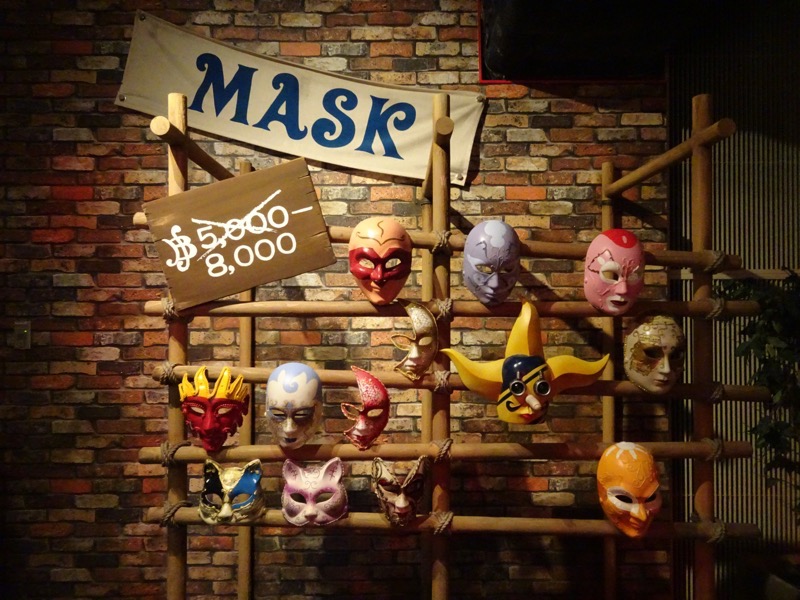
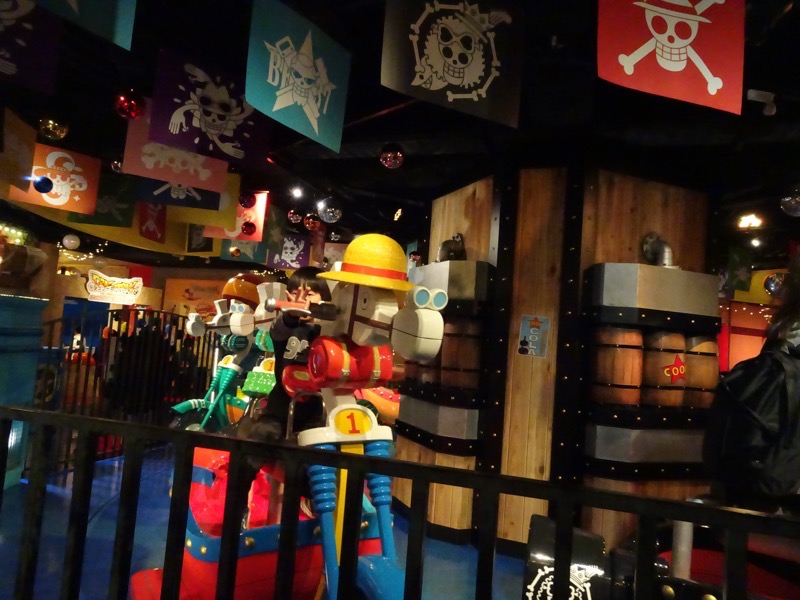
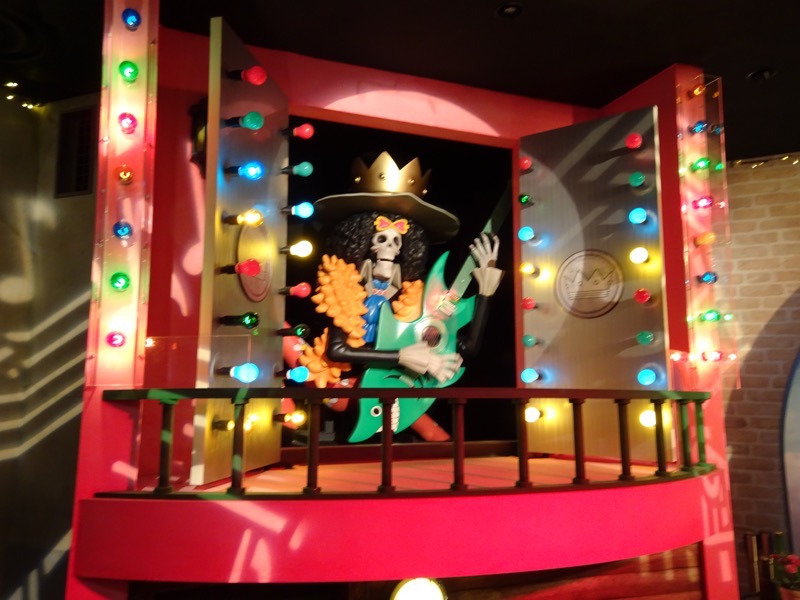
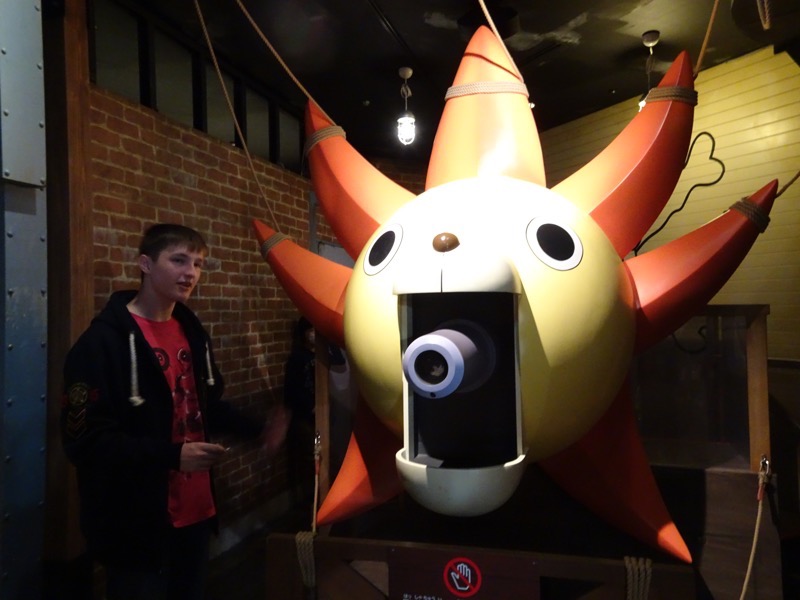
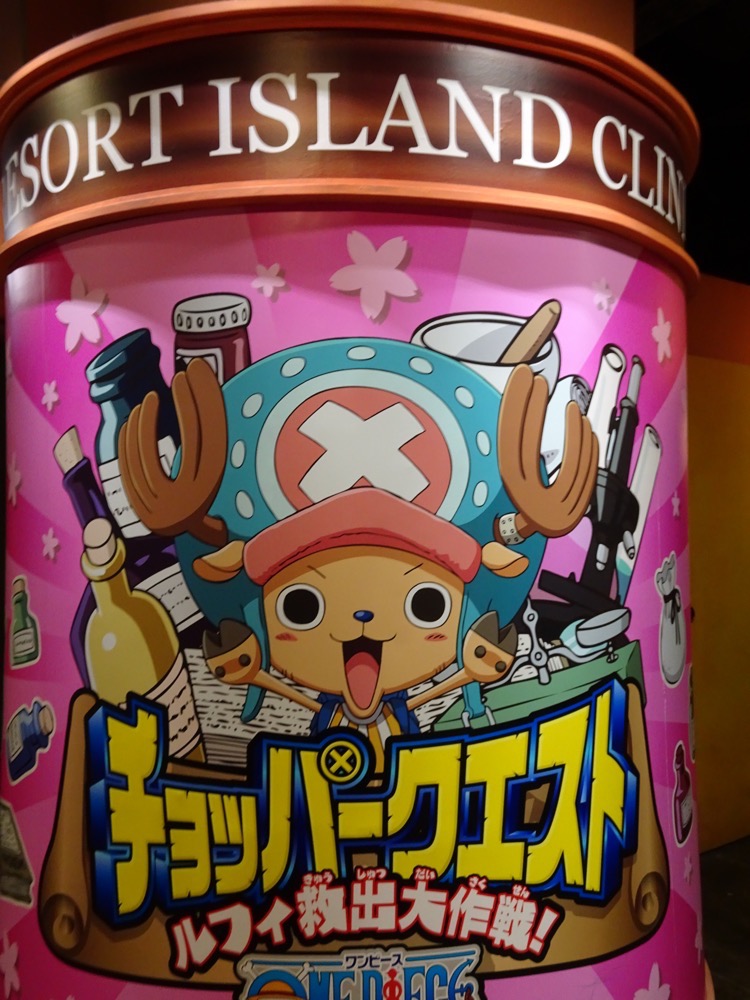 This of course is the token female character… Nami. And this is how she is attired while her cohorts are wearing shirts and shorts or even suits or a long pirate coat. Poor thing, can’t afford clothes.
This of course is the token female character… Nami. And this is how she is attired while her cohorts are wearing shirts and shorts or even suits or a long pirate coat. Poor thing, can’t afford clothes. 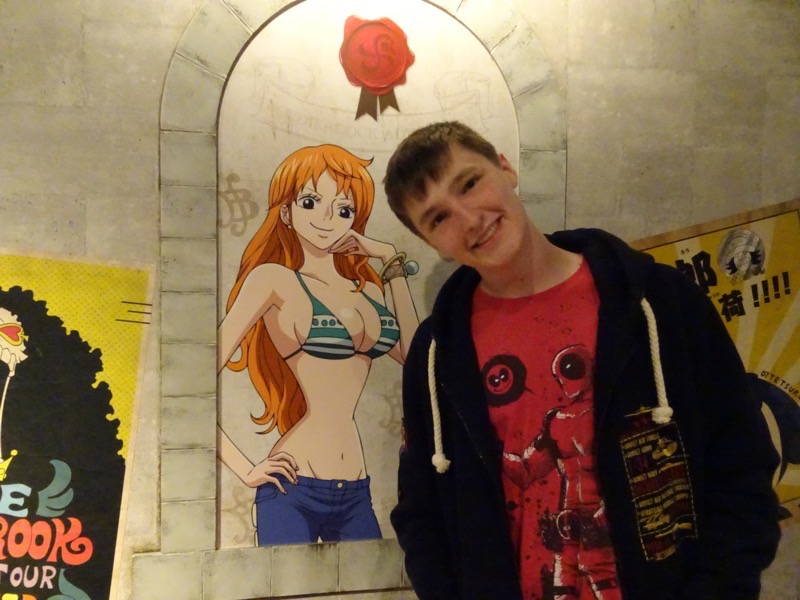
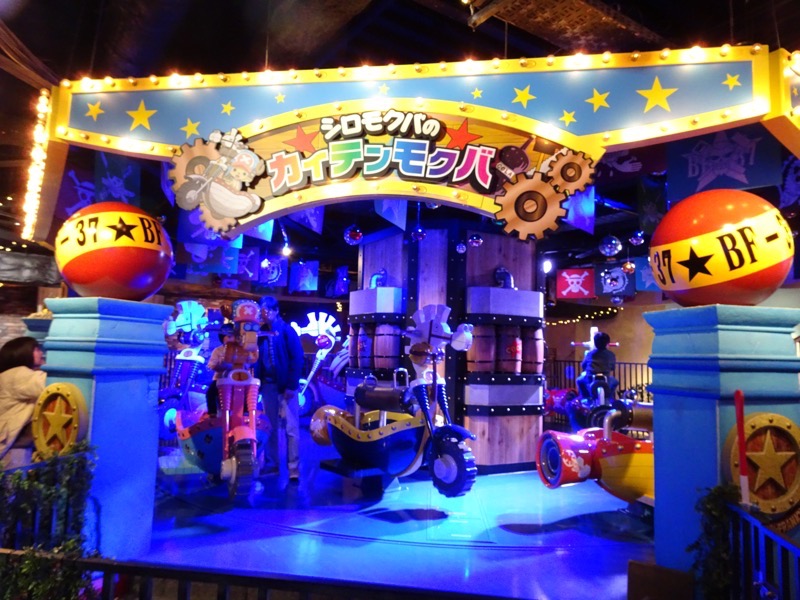
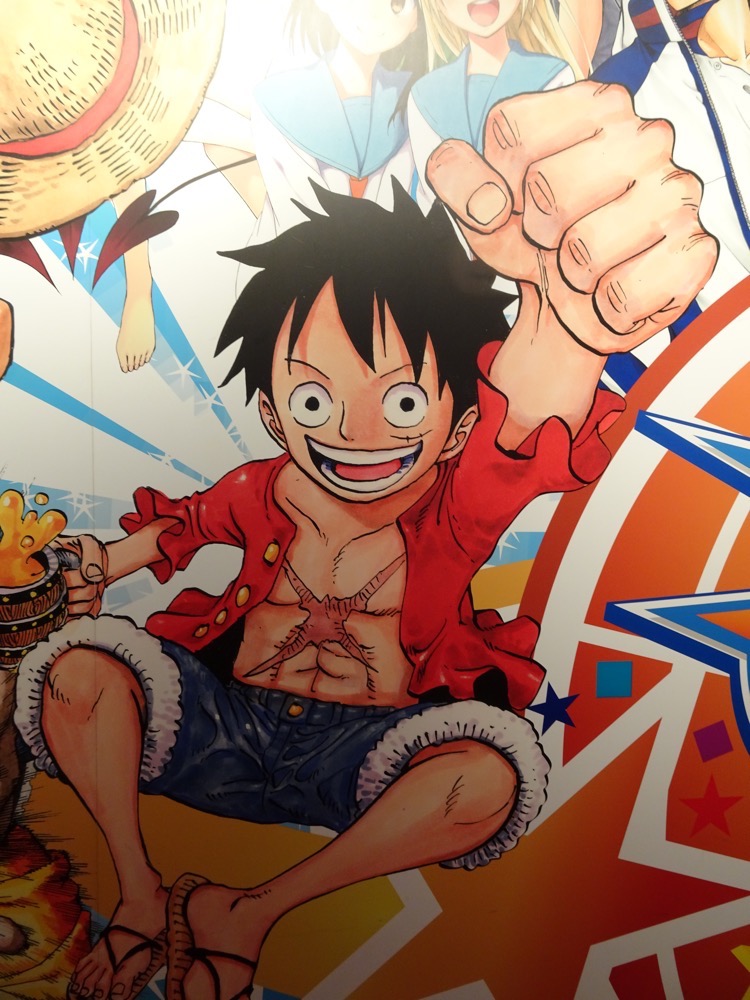
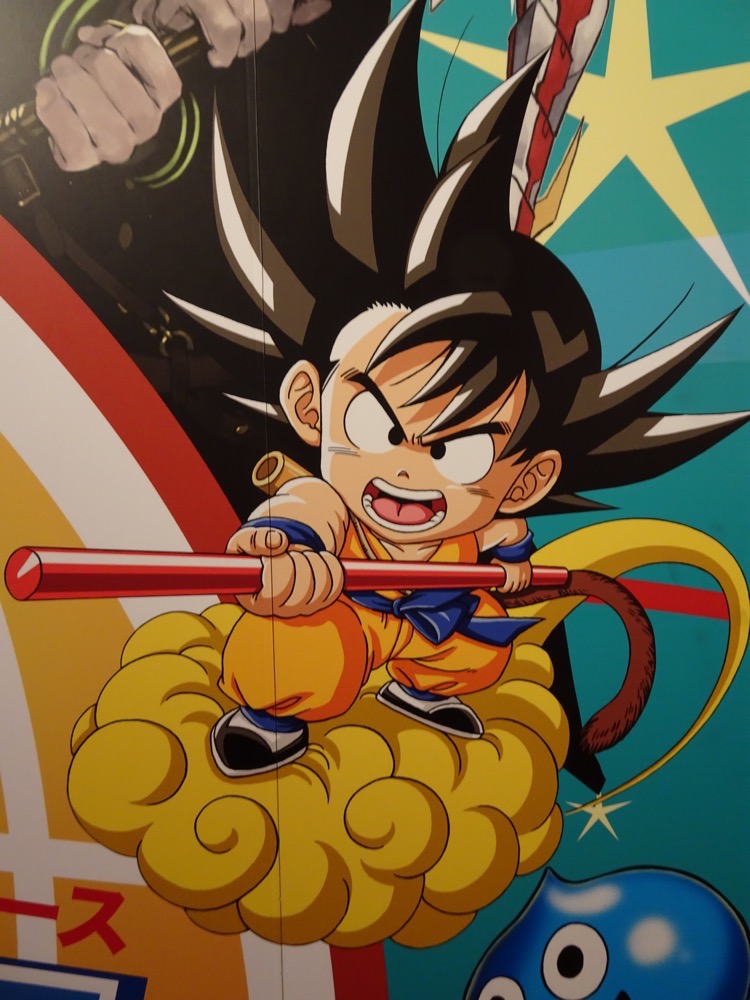 Kinto-un from Dragonball Z apparently.
Kinto-un from Dragonball Z apparently.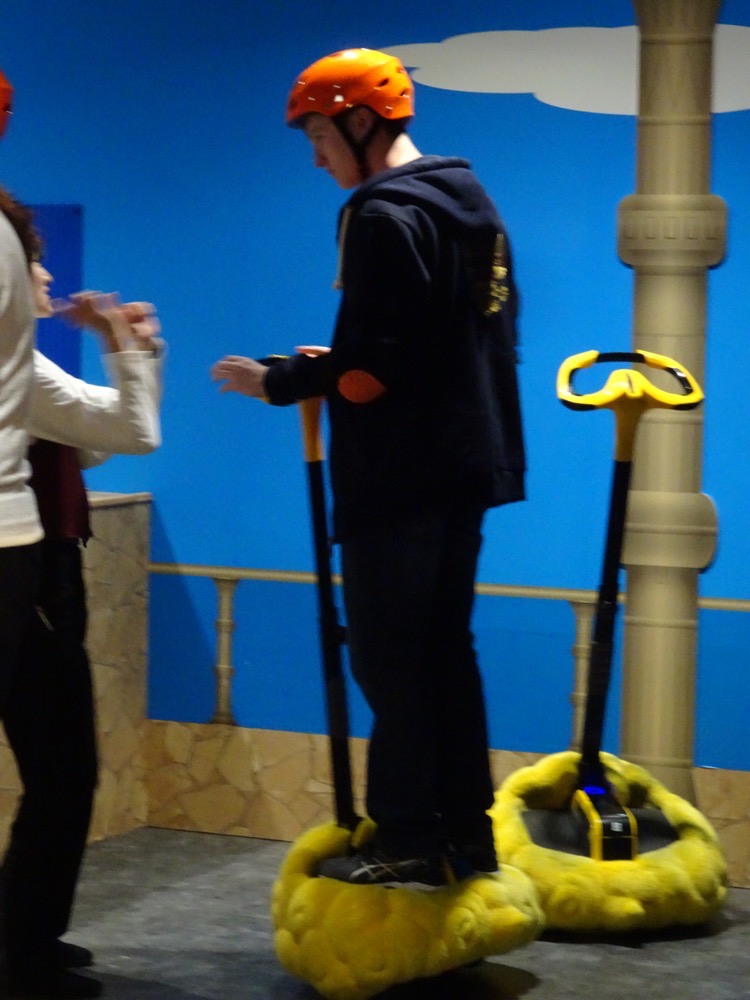
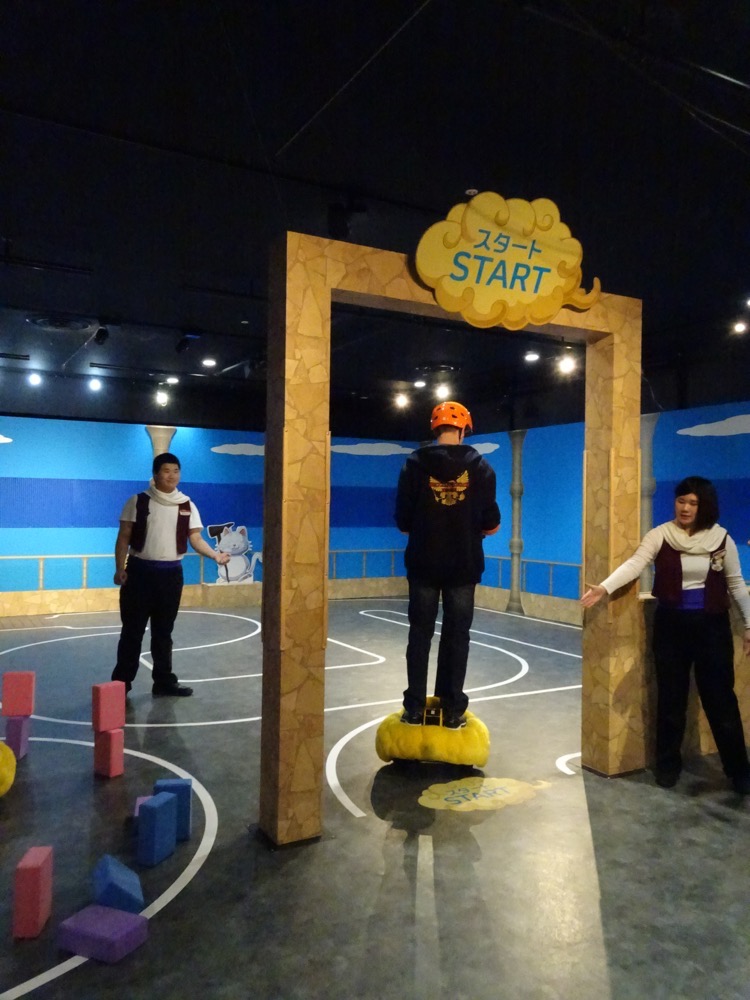
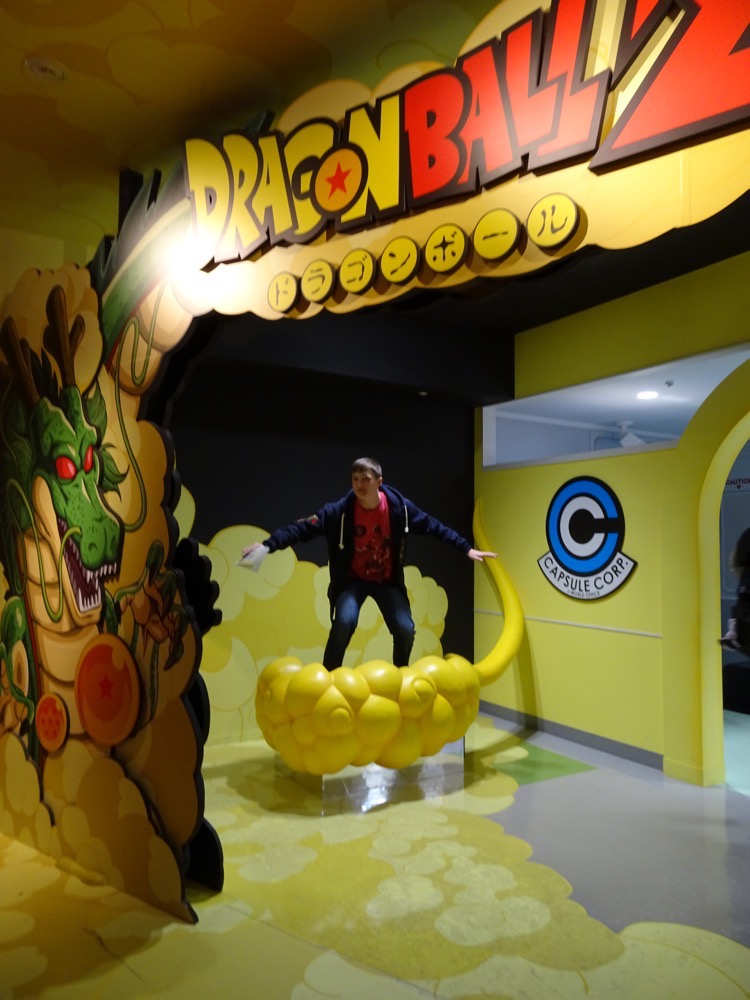
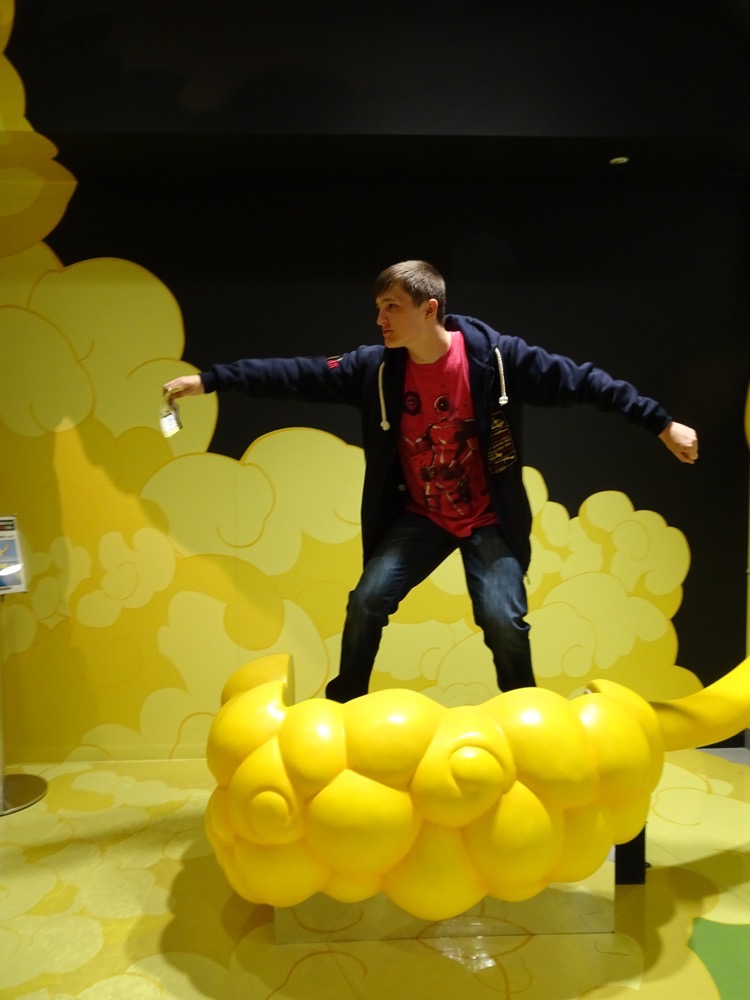
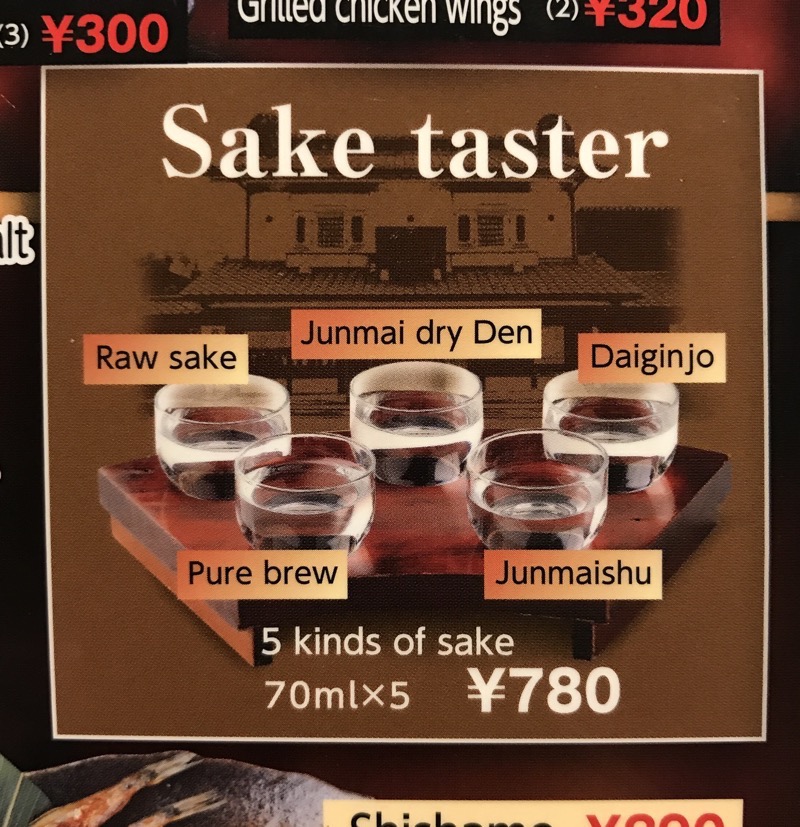
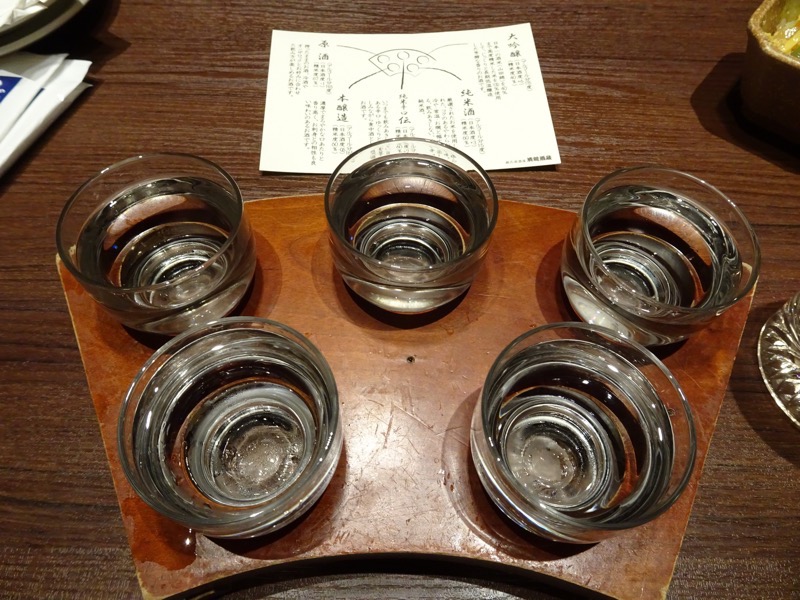 Sake fuelled, Mr K soldiers on through his biru while we wait for some dinner.
Sake fuelled, Mr K soldiers on through his biru while we wait for some dinner. 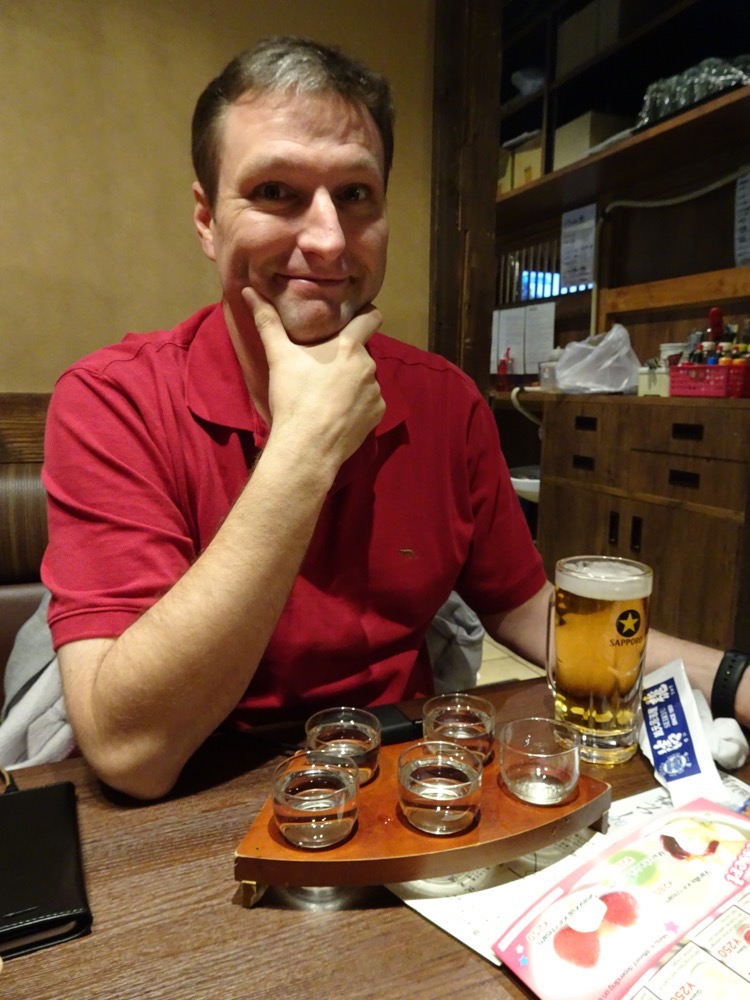 Ooh.. maybe there is fugu / blowfish on the menu? Do we risk it? Ah, not so much.
Ooh.. maybe there is fugu / blowfish on the menu? Do we risk it? Ah, not so much. 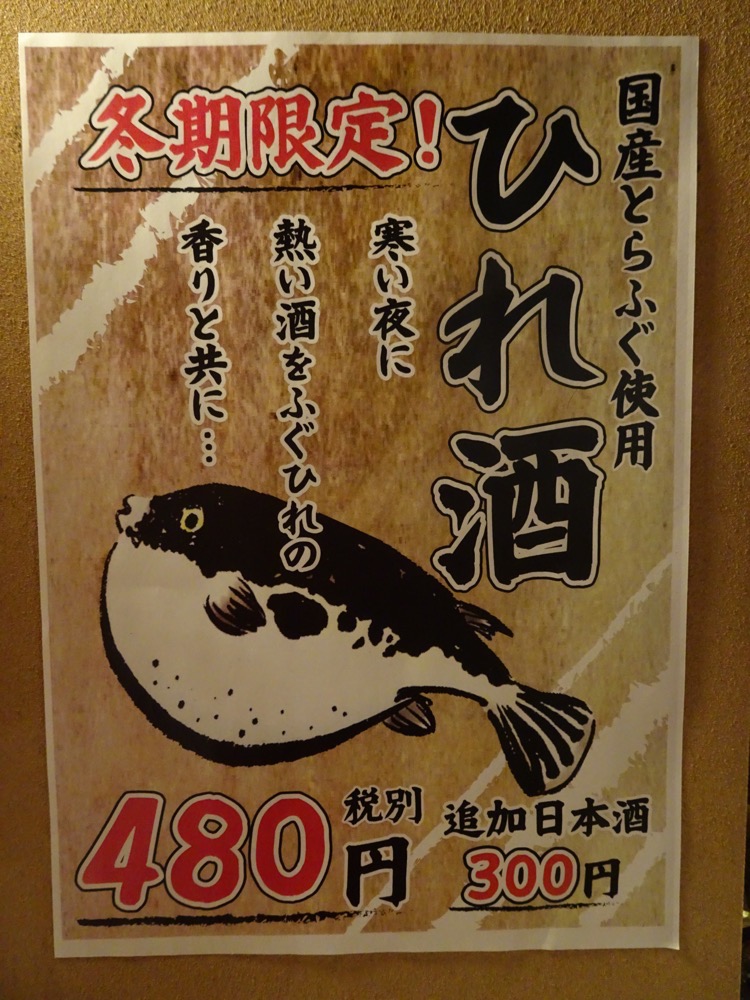 Drinking on an empty stomach is never advisable but dinner was well worth waiting for… fresh sashimi – the tuna is so much better here, I swear all the tuna we have in Australia at sushi restaurants is frozen, or frozen poorly or something. In comparison, I can honestly say I have never had good tuna back home, excepting maybe Sono at Hamilton. The texture is entirely different.
Drinking on an empty stomach is never advisable but dinner was well worth waiting for… fresh sashimi – the tuna is so much better here, I swear all the tuna we have in Australia at sushi restaurants is frozen, or frozen poorly or something. In comparison, I can honestly say I have never had good tuna back home, excepting maybe Sono at Hamilton. The texture is entirely different.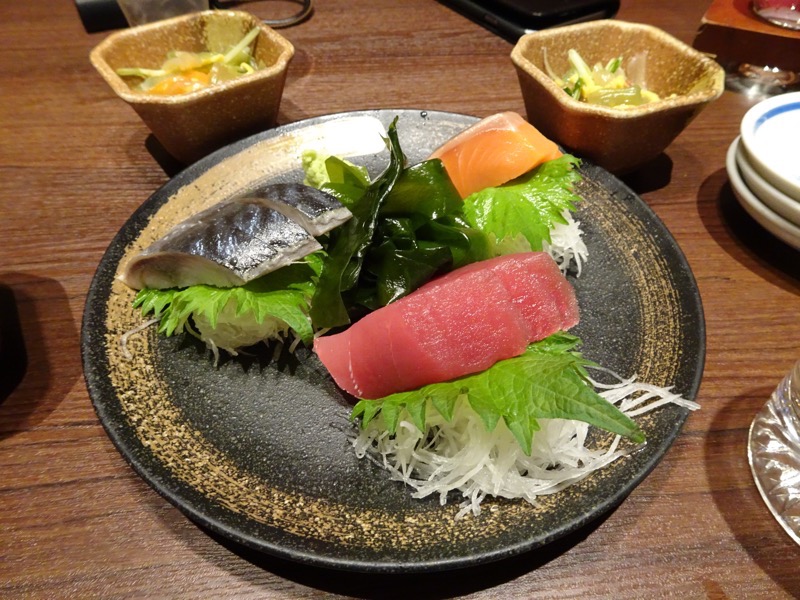 Grilled chicken and pork pot stickers.
Grilled chicken and pork pot stickers.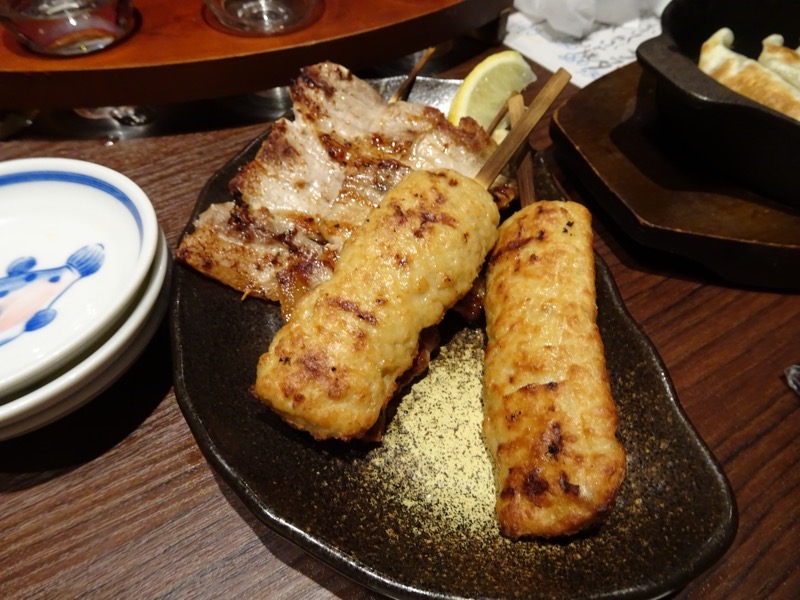 Gyoza – of course, no meal seems to be complete without some.
Gyoza – of course, no meal seems to be complete without some.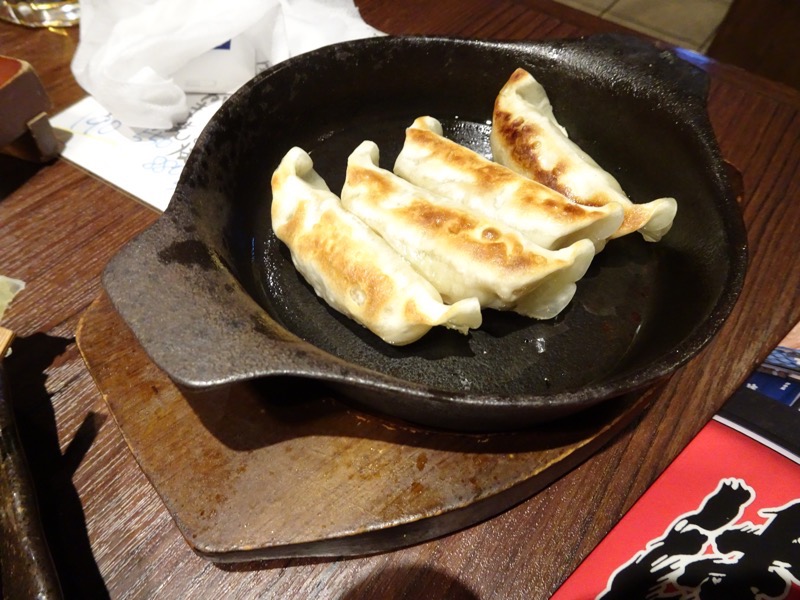
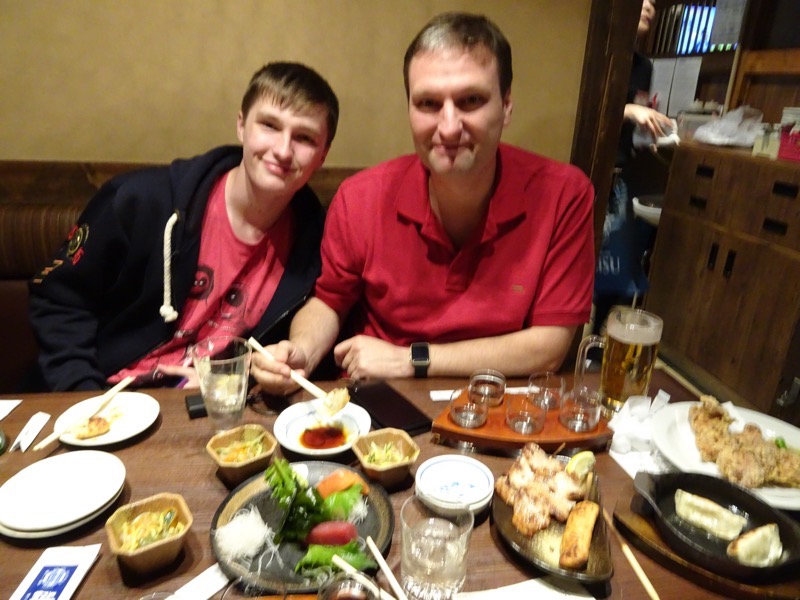 Some weird bean sprout omelette yumminess the name of which I can’t remember.
Some weird bean sprout omelette yumminess the name of which I can’t remember.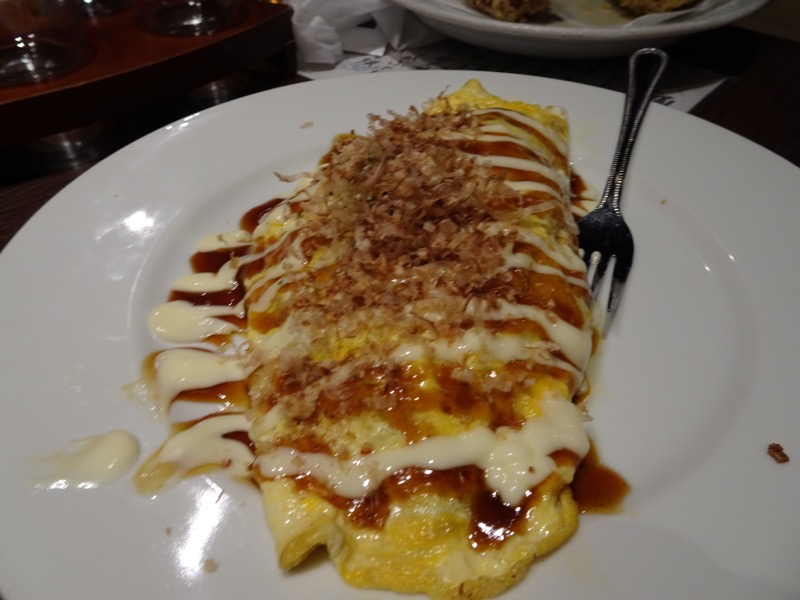
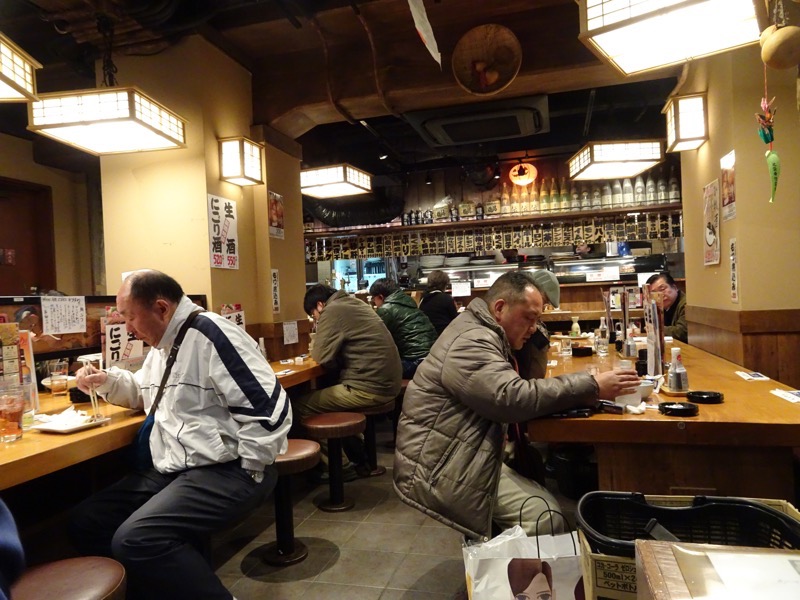 Sake! All the sake!
Sake! All the sake!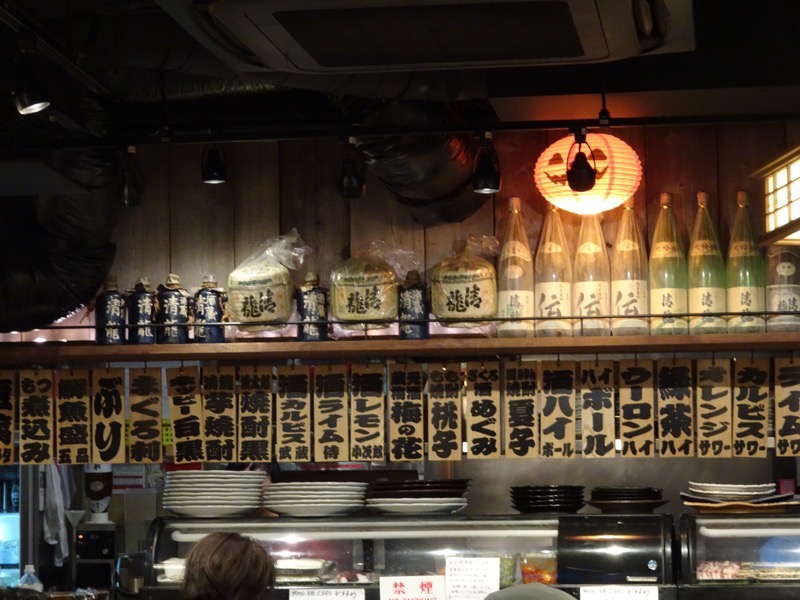
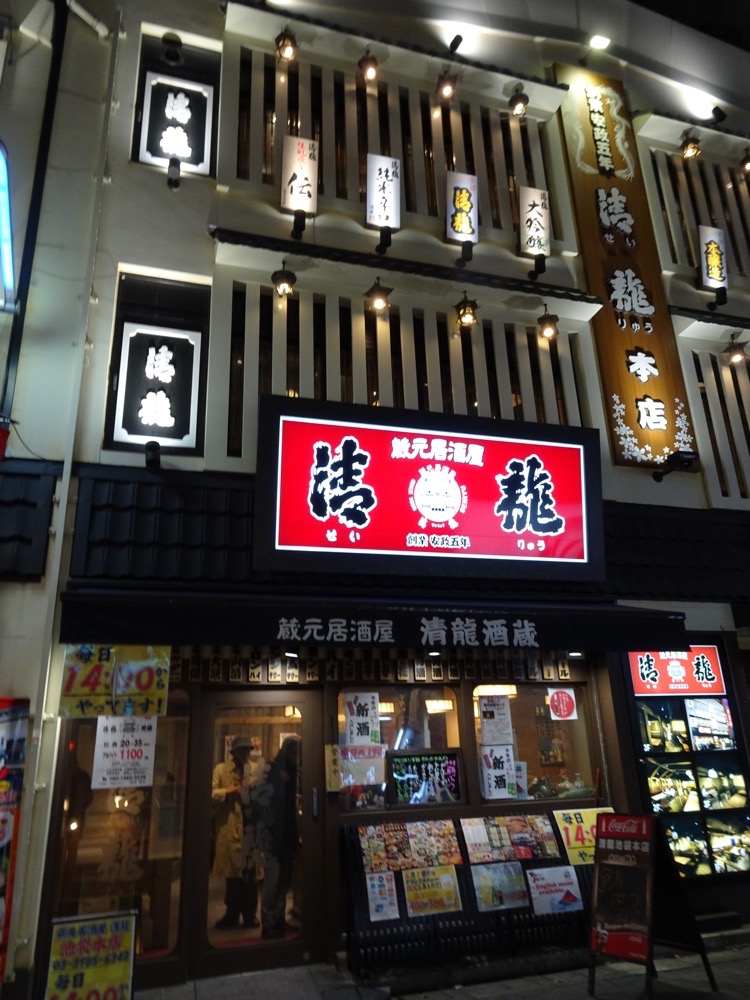 Then it was back to the trains – have I mentioned how awesome Tokyo trains are? Cheap, clean, efficient… kinda easy to navigate once you get the hang of them, super easy to navigate if you travel with your own transport industry professional! 😉 They’re great, and people are polite and mind their space, I love them – to go to Tokyo Tower.
Then it was back to the trains – have I mentioned how awesome Tokyo trains are? Cheap, clean, efficient… kinda easy to navigate once you get the hang of them, super easy to navigate if you travel with your own transport industry professional! 😉 They’re great, and people are polite and mind their space, I love them – to go to Tokyo Tower.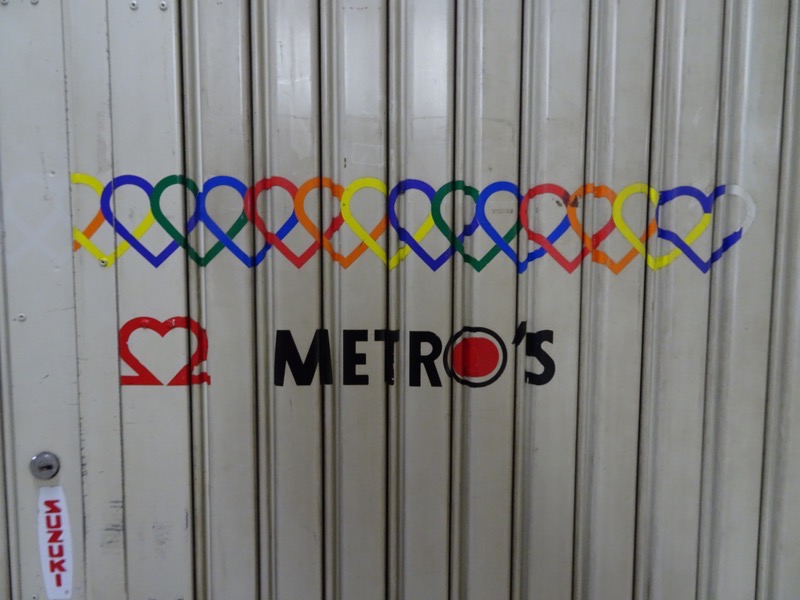 Several stops and what seemed only a few minutes later, and up we pop in a new part of town, and the Tokyo Tower in front of us. Tokyo Tower is a communications with public observation decks in the Shiba-koen district of Minato. At 332.9 metres (1,092 ft), it is the second-tallest structure in Japan. Apparently it is inspired by the Eiffel Tower, and it is not difficult to see how. Allegedly, its distinctive orange and white colours come from a necessity to comply international air safety regulations…which then begs the question why isn’t the Eiffel Tower orange and white? Hmmm. #showerthoughts
Several stops and what seemed only a few minutes later, and up we pop in a new part of town, and the Tokyo Tower in front of us. Tokyo Tower is a communications with public observation decks in the Shiba-koen district of Minato. At 332.9 metres (1,092 ft), it is the second-tallest structure in Japan. Apparently it is inspired by the Eiffel Tower, and it is not difficult to see how. Allegedly, its distinctive orange and white colours come from a necessity to comply international air safety regulations…which then begs the question why isn’t the Eiffel Tower orange and white? Hmmm. #showerthoughts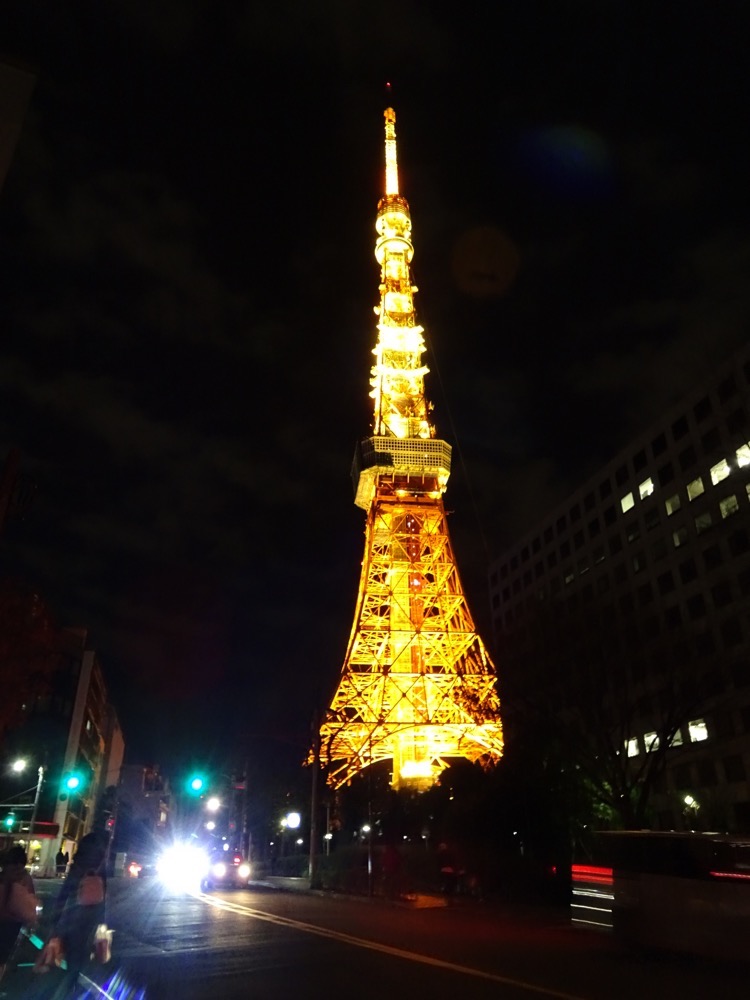 I came here on our last trip to Tokyo and it was pretty cool to get a chance to go up the tower at night as well as having been up during the day. At the moment it is all Christmassy – lights, themed photos, projected snowflakes everywhere, and live performers on the observation deck.
I came here on our last trip to Tokyo and it was pretty cool to get a chance to go up the tower at night as well as having been up during the day. At the moment it is all Christmassy – lights, themed photos, projected snowflakes everywhere, and live performers on the observation deck. 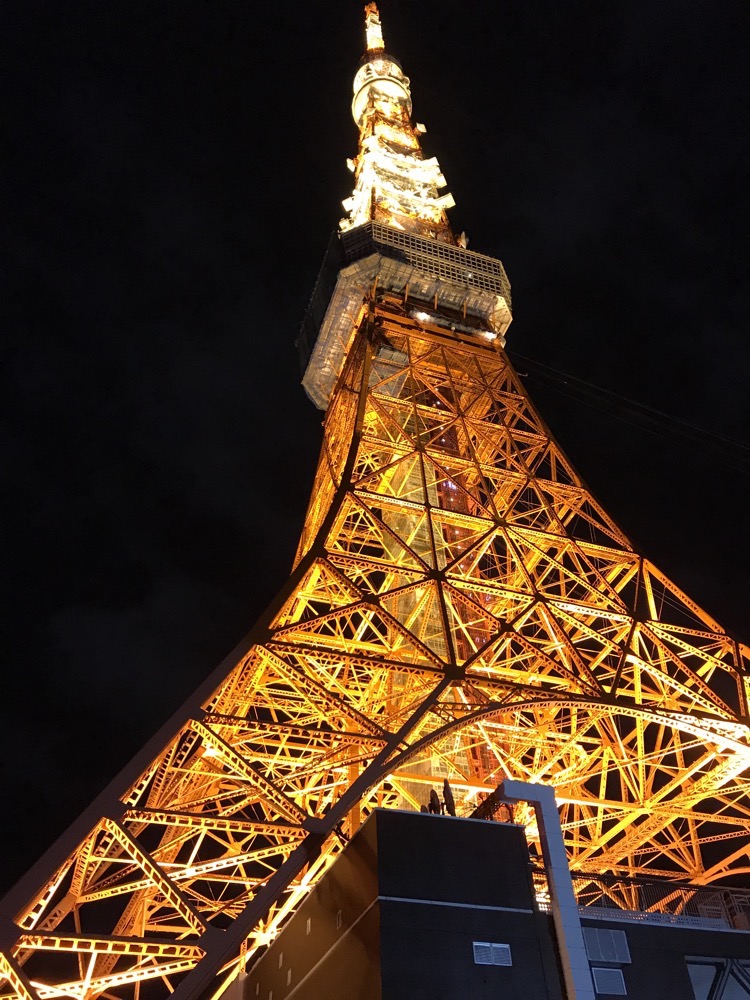
 Oddly, but completely in keeping with our visit to J-World on Anime Day, we stumbled onto a One Piece 20th Anniversary exhibit and store at the Tower. There is Nami again in her signature green bikini, and loads of cool merchandise – cooler stuff than they had at the offical store in the city.
Oddly, but completely in keeping with our visit to J-World on Anime Day, we stumbled onto a One Piece 20th Anniversary exhibit and store at the Tower. There is Nami again in her signature green bikini, and loads of cool merchandise – cooler stuff than they had at the offical store in the city.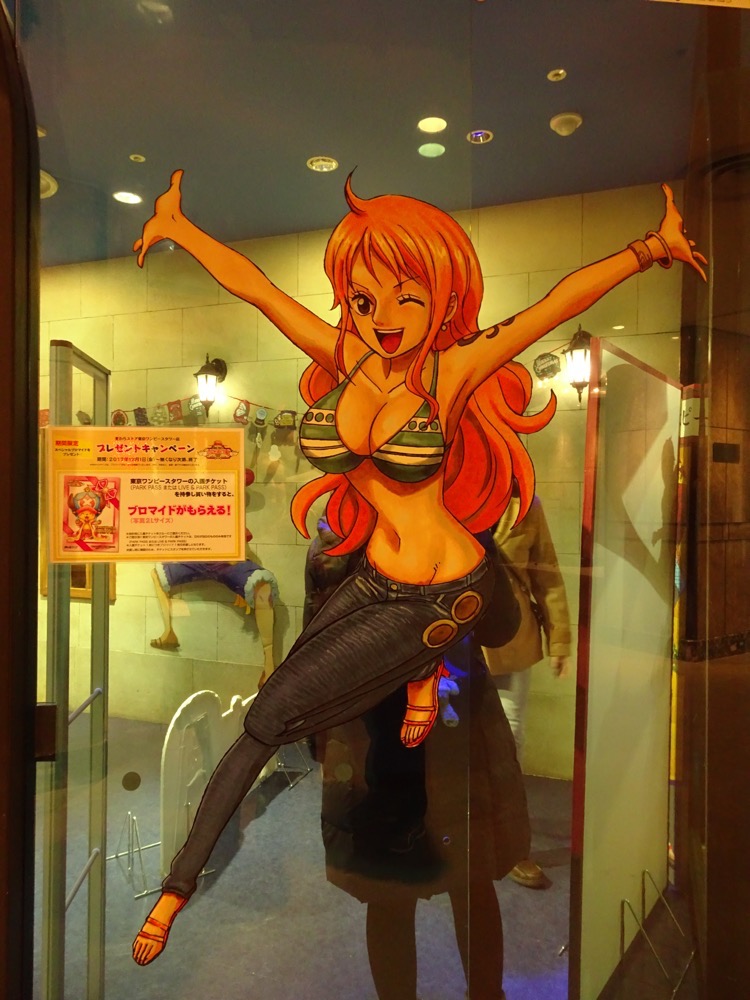
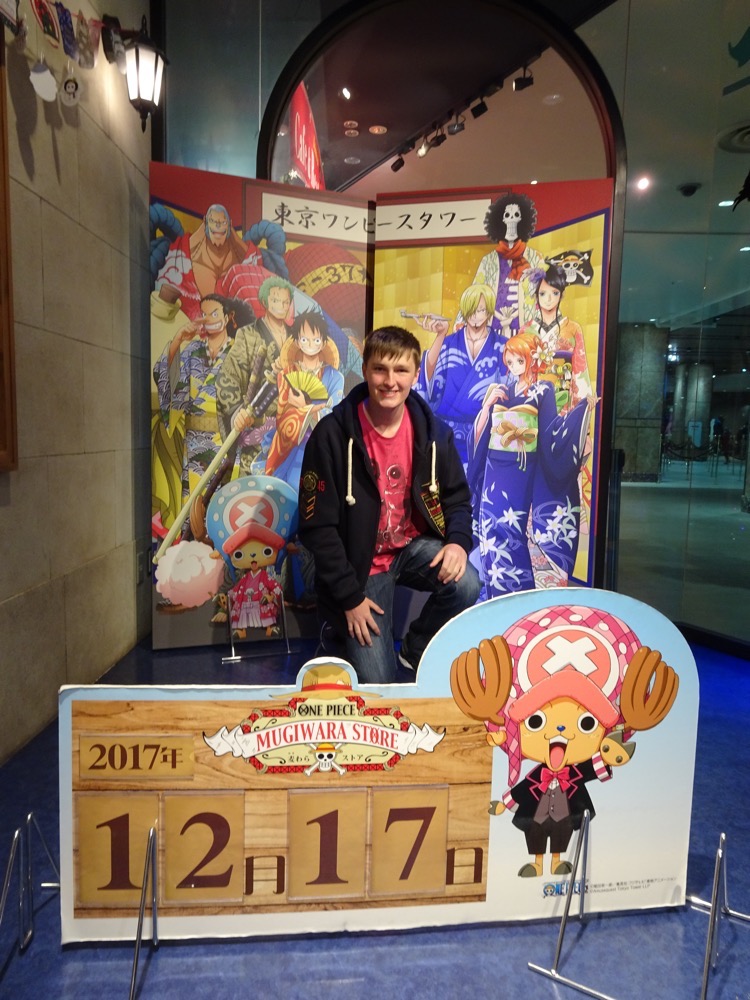 More One Piece – the little guy above with the ‘X’ on his hat is called Chopper, and he is supposed to be a reindeer that area a Hito Hito No Mi devil fruit which makes him anthropomorphic (or as the Teenager would say – makes him into a human hybrid or allows him to have human characteristics at will).
More One Piece – the little guy above with the ‘X’ on his hat is called Chopper, and he is supposed to be a reindeer that area a Hito Hito No Mi devil fruit which makes him anthropomorphic (or as the Teenager would say – makes him into a human hybrid or allows him to have human characteristics at will).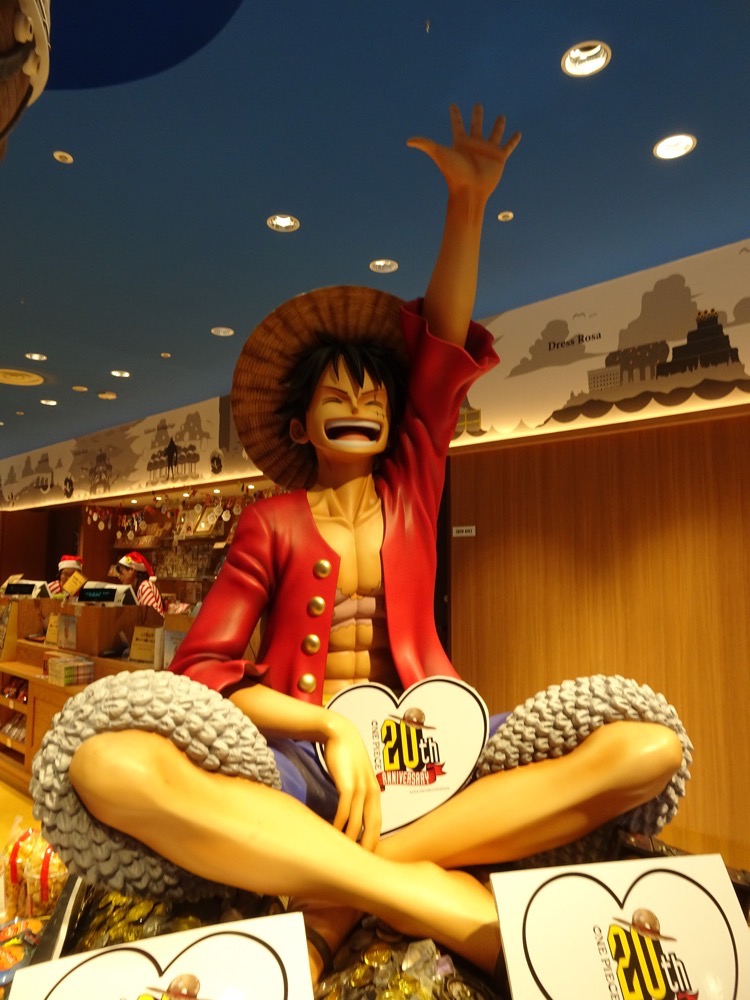
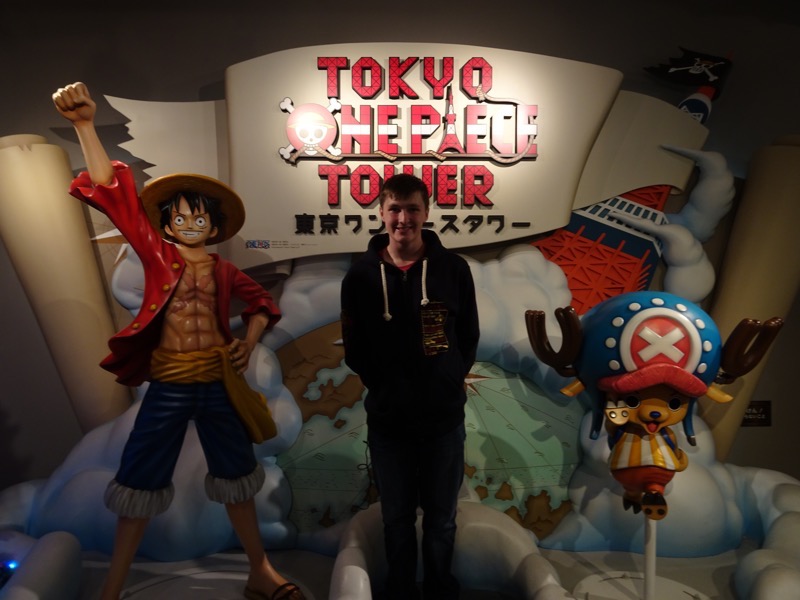 Anyway, back to the Tower… it was covered in projected snowflakes and sparkly Christmassy stuff. It was lovely.
Anyway, back to the Tower… it was covered in projected snowflakes and sparkly Christmassy stuff. It was lovely. 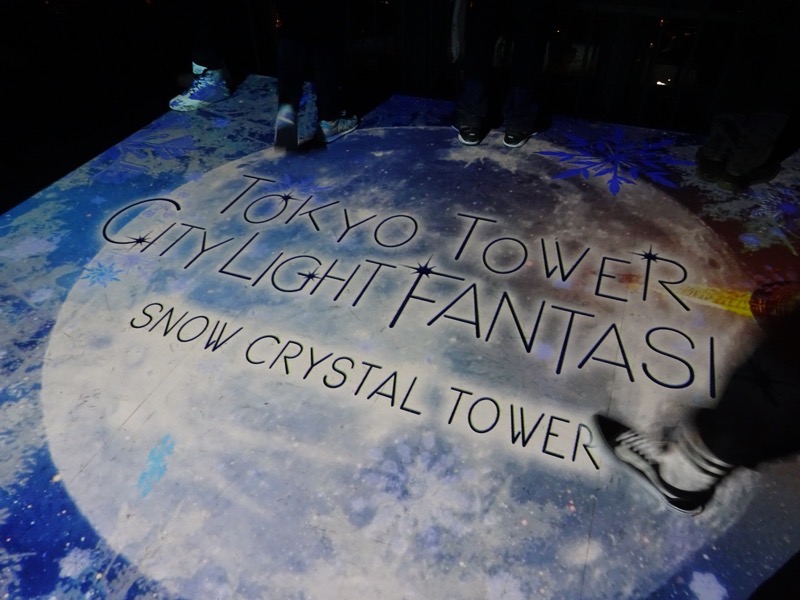 The views were great and my little handheld camera either totally didn’t cope or I was completely inept, because my photos from up the Tower are not great.
The views were great and my little handheld camera either totally didn’t cope or I was completely inept, because my photos from up the Tower are not great.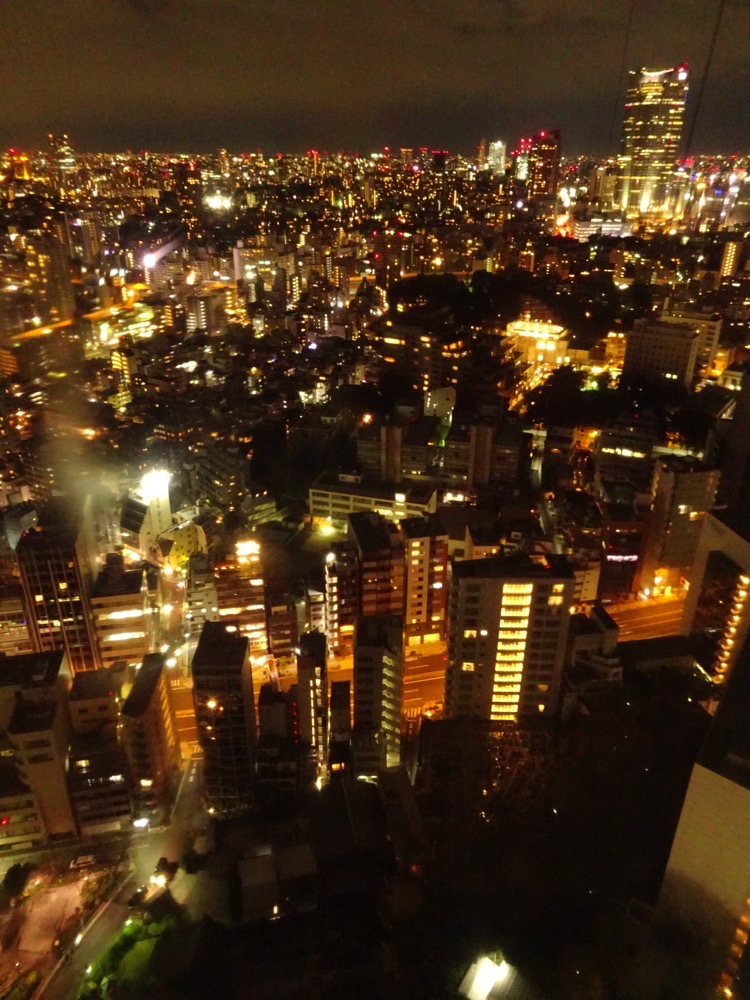
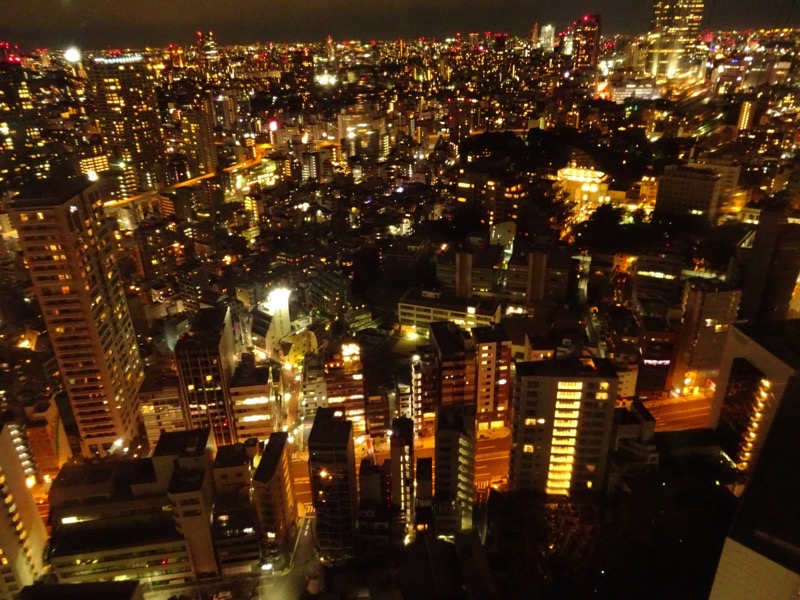
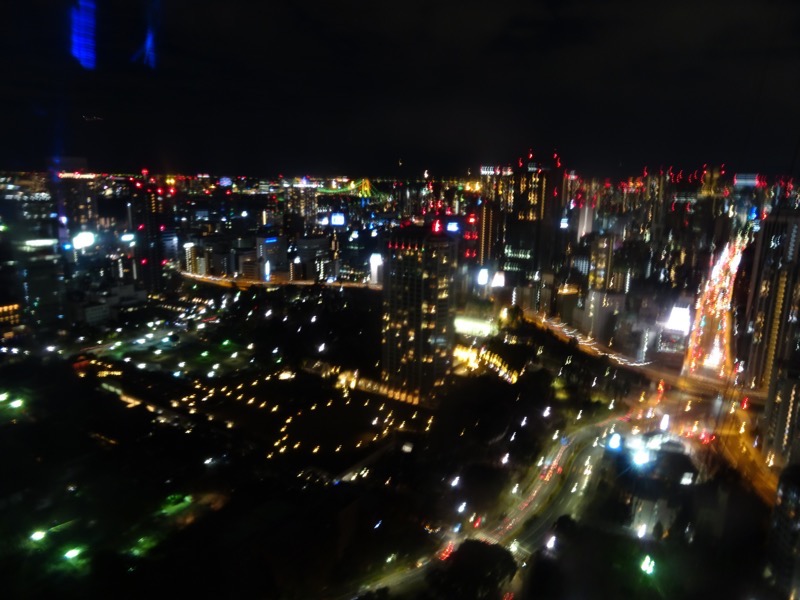 We stopped for a bit and had a blindingly sweet coke spider (yes, it’s freezing cold outside but there is still ice cream and frozen treats everywhere) and then after that sugar rush my photos got way better. 😉
We stopped for a bit and had a blindingly sweet coke spider (yes, it’s freezing cold outside but there is still ice cream and frozen treats everywhere) and then after that sugar rush my photos got way better. 😉 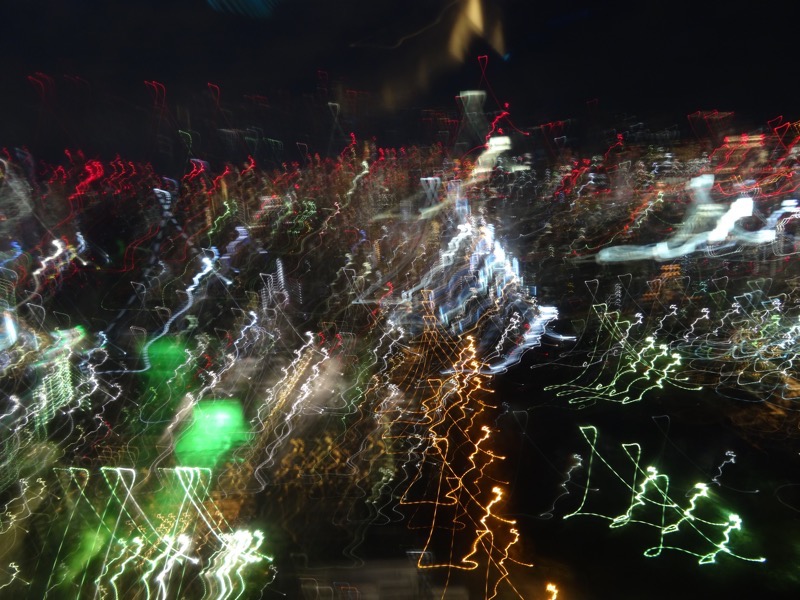
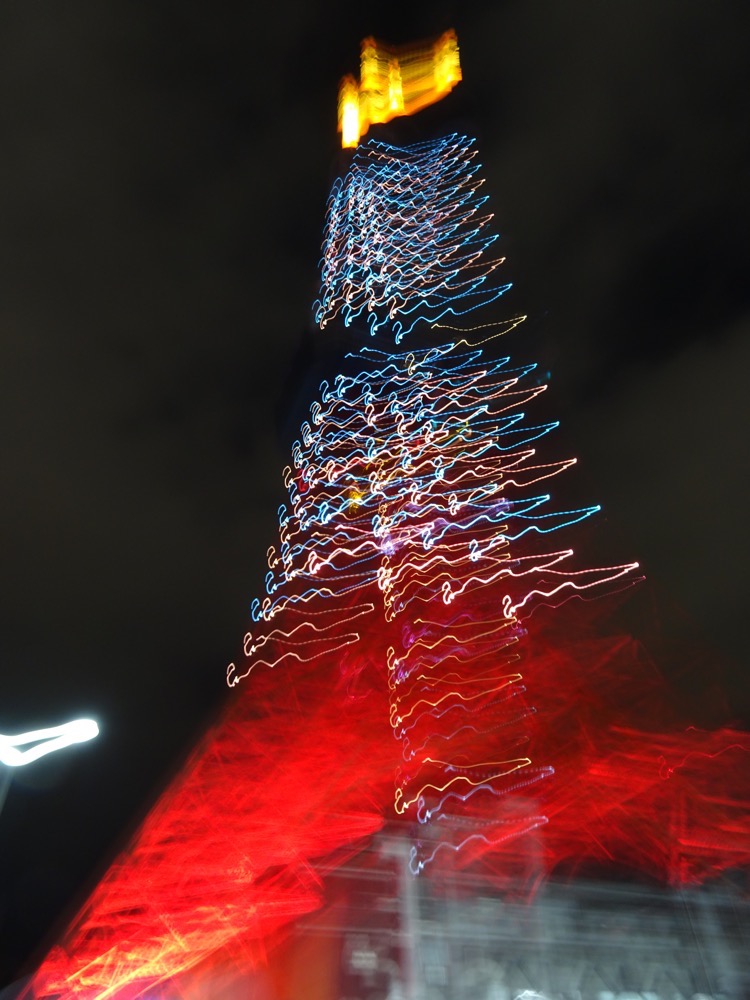 Thus endeth out second day in Tokyo! 🙂
Thus endeth out second day in Tokyo! 🙂